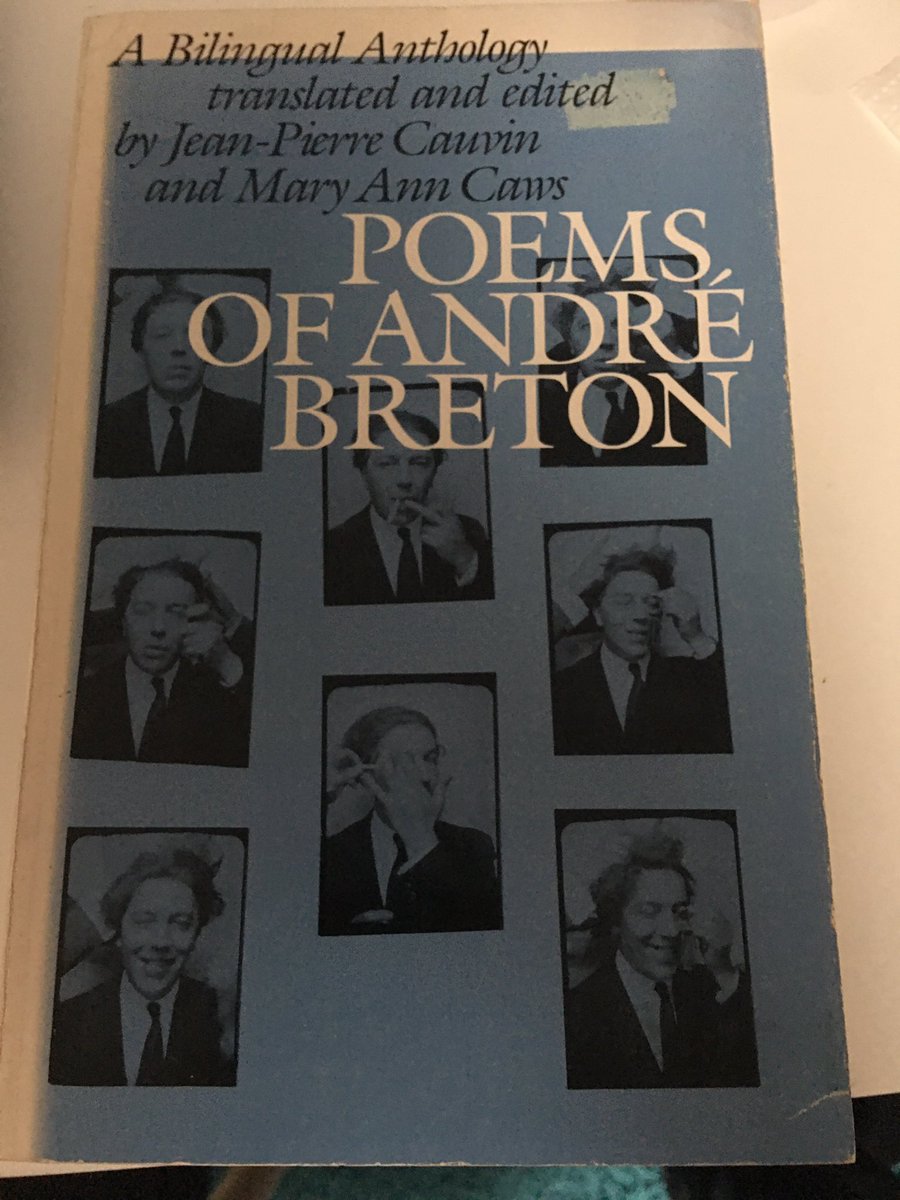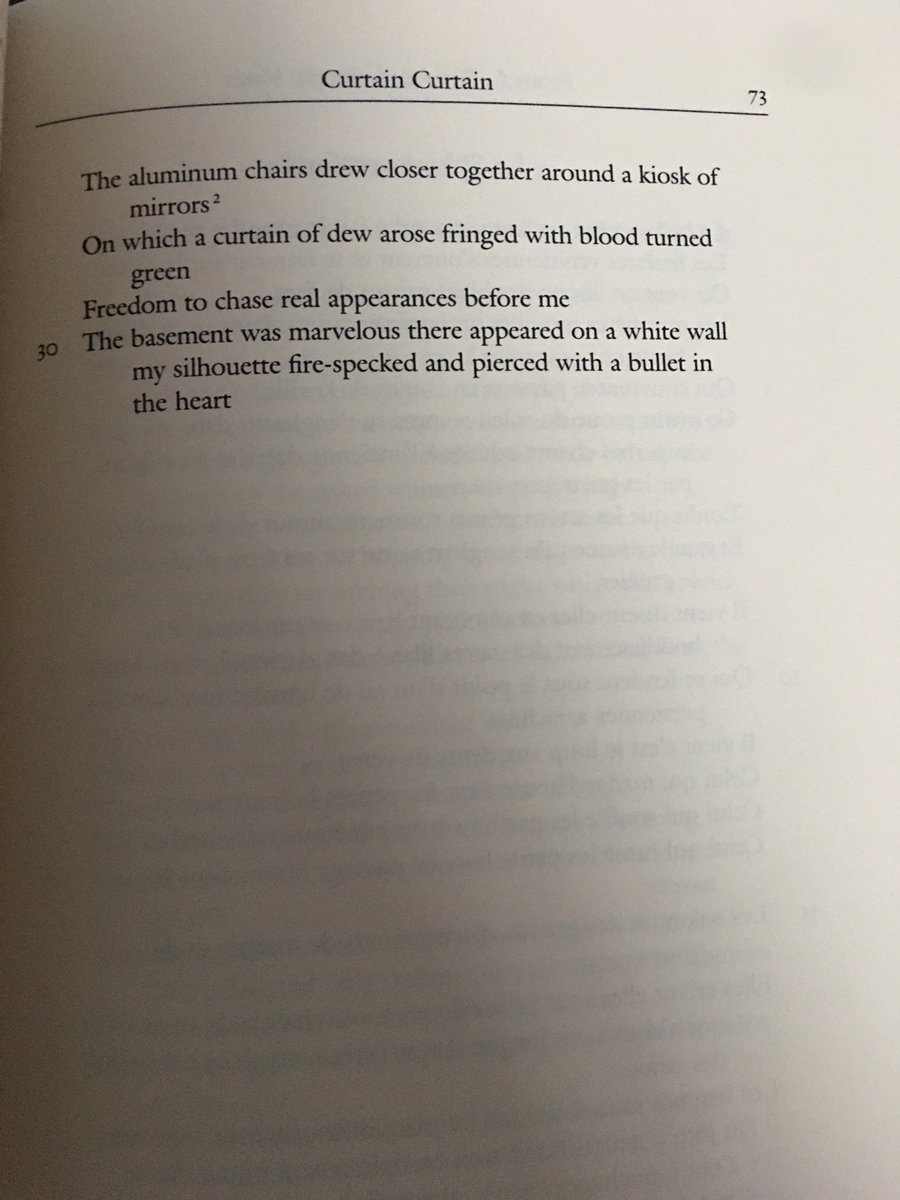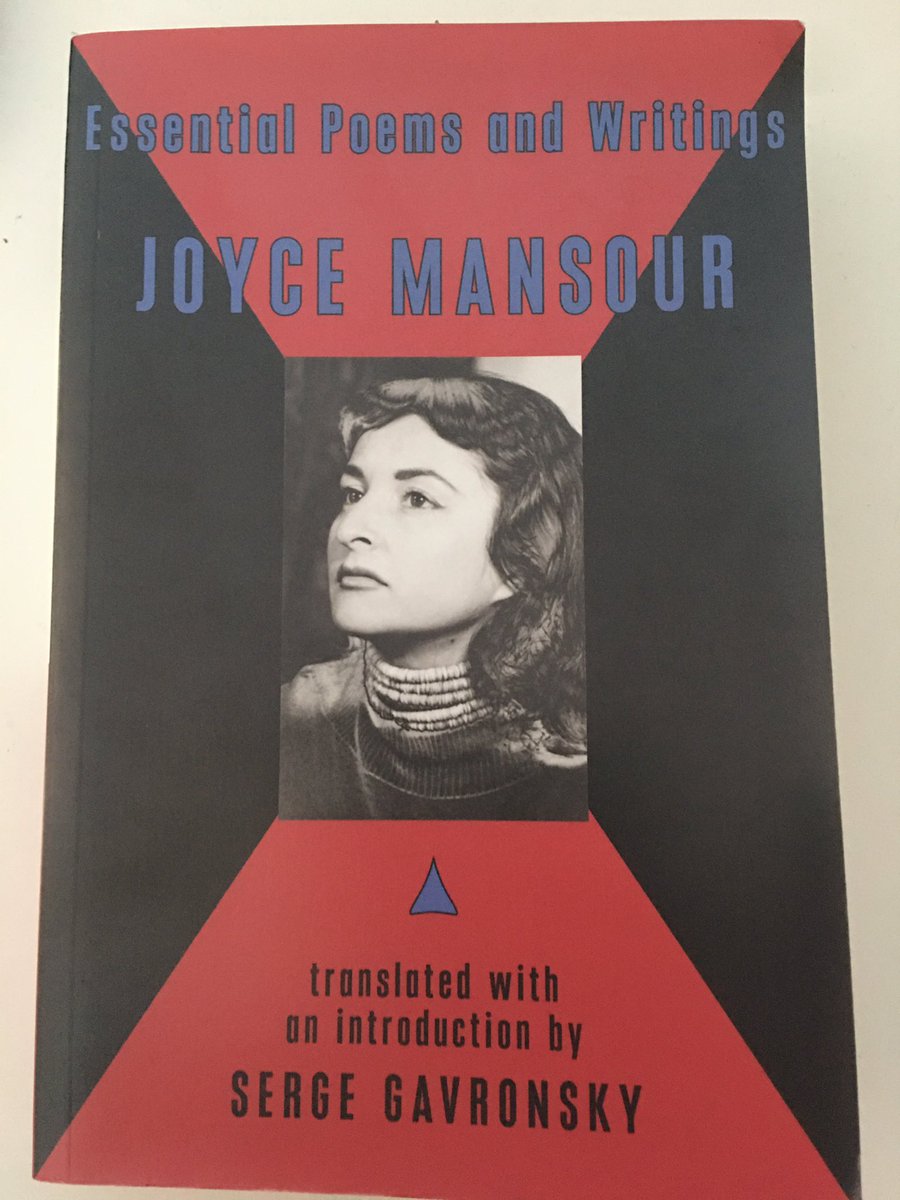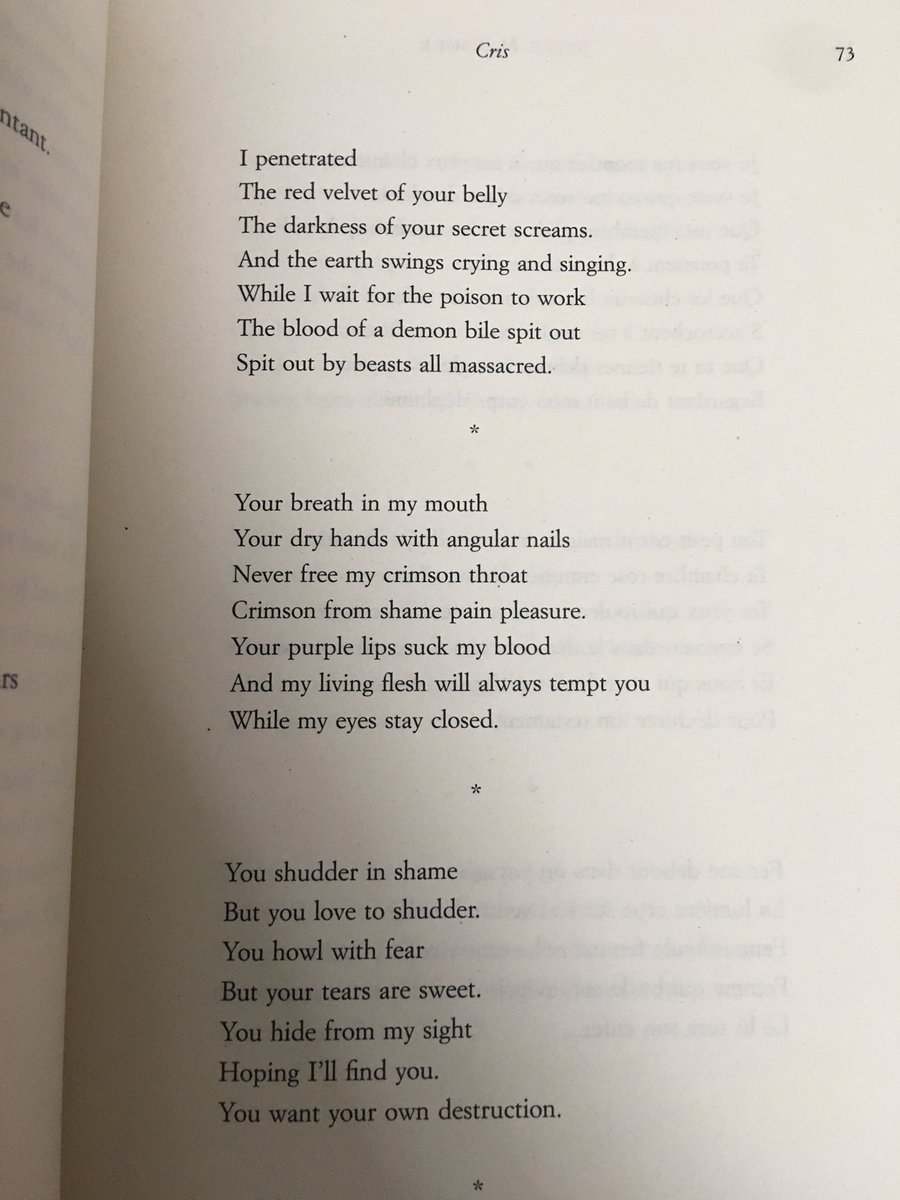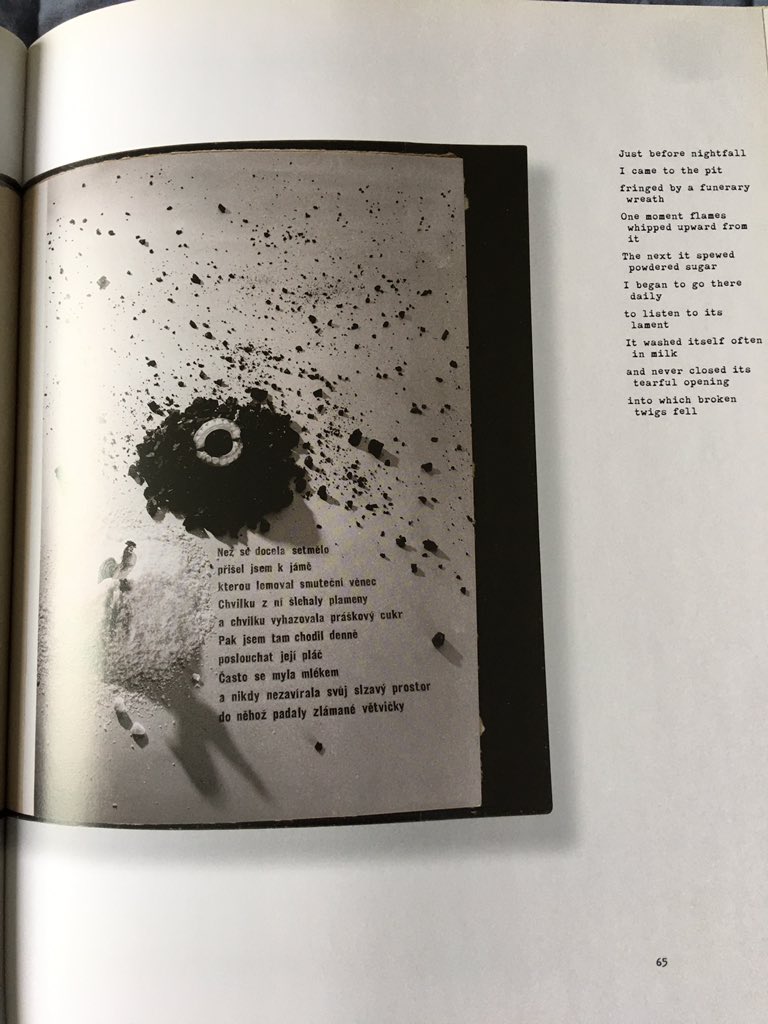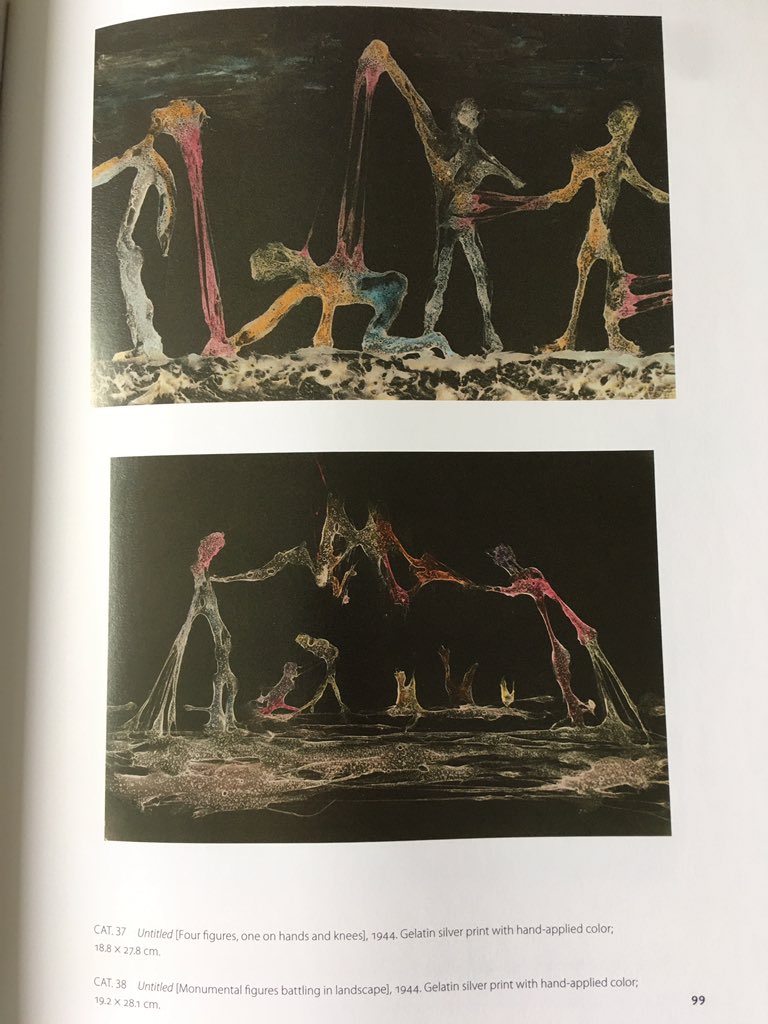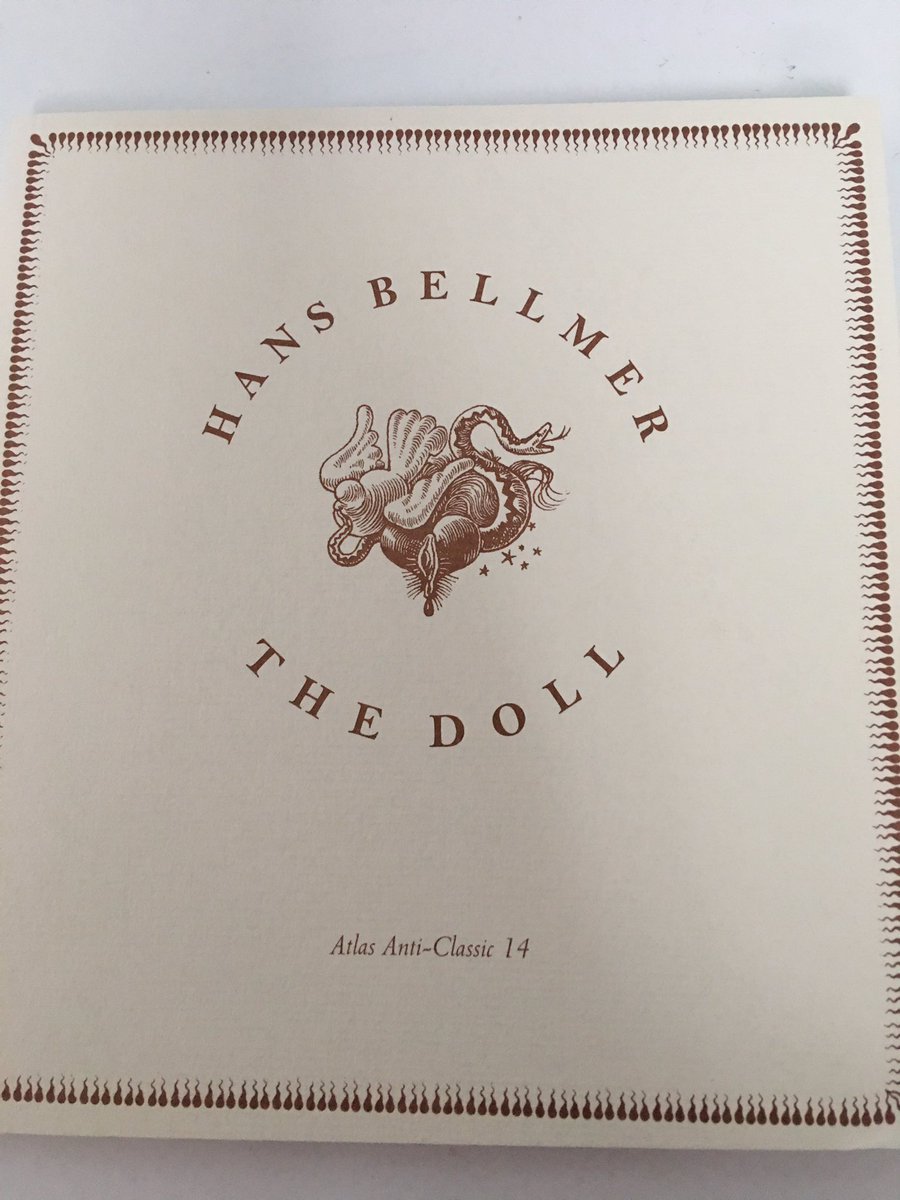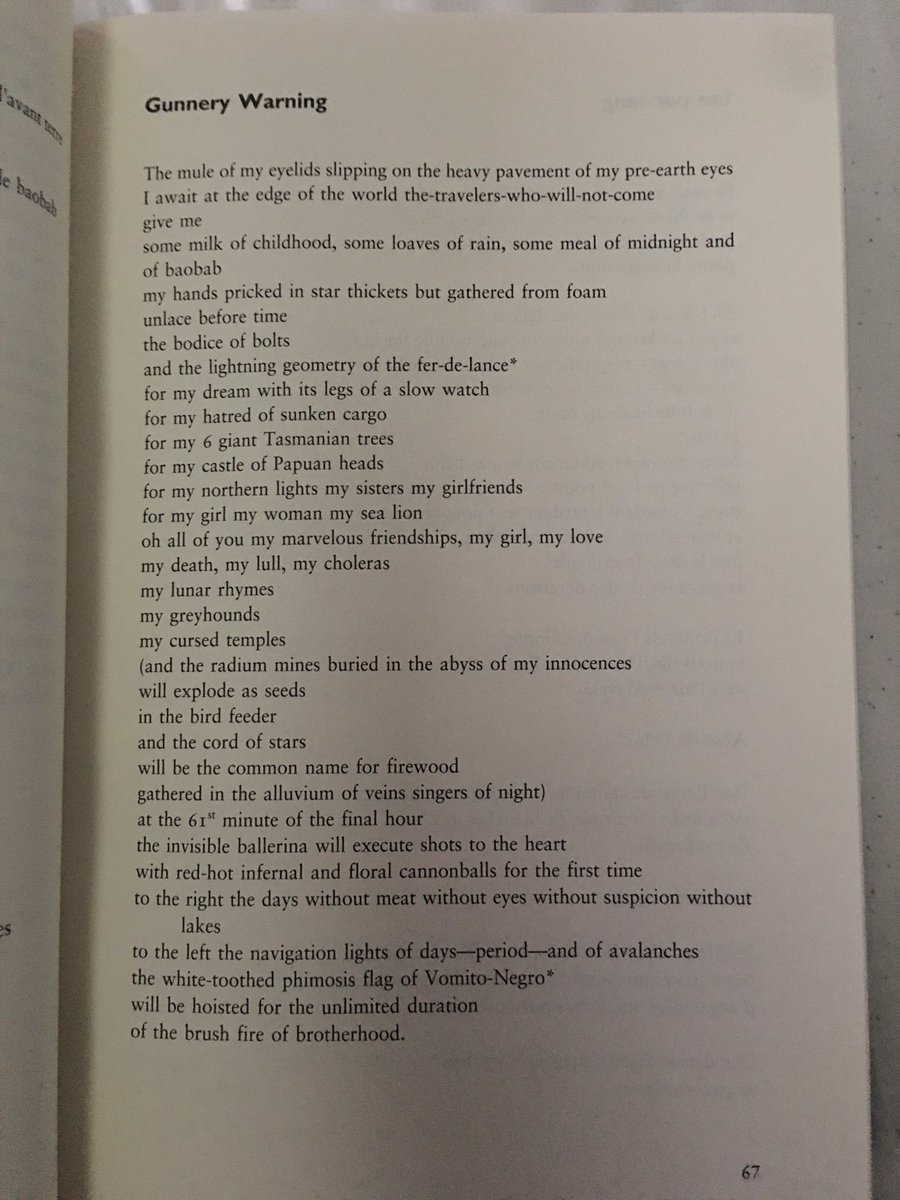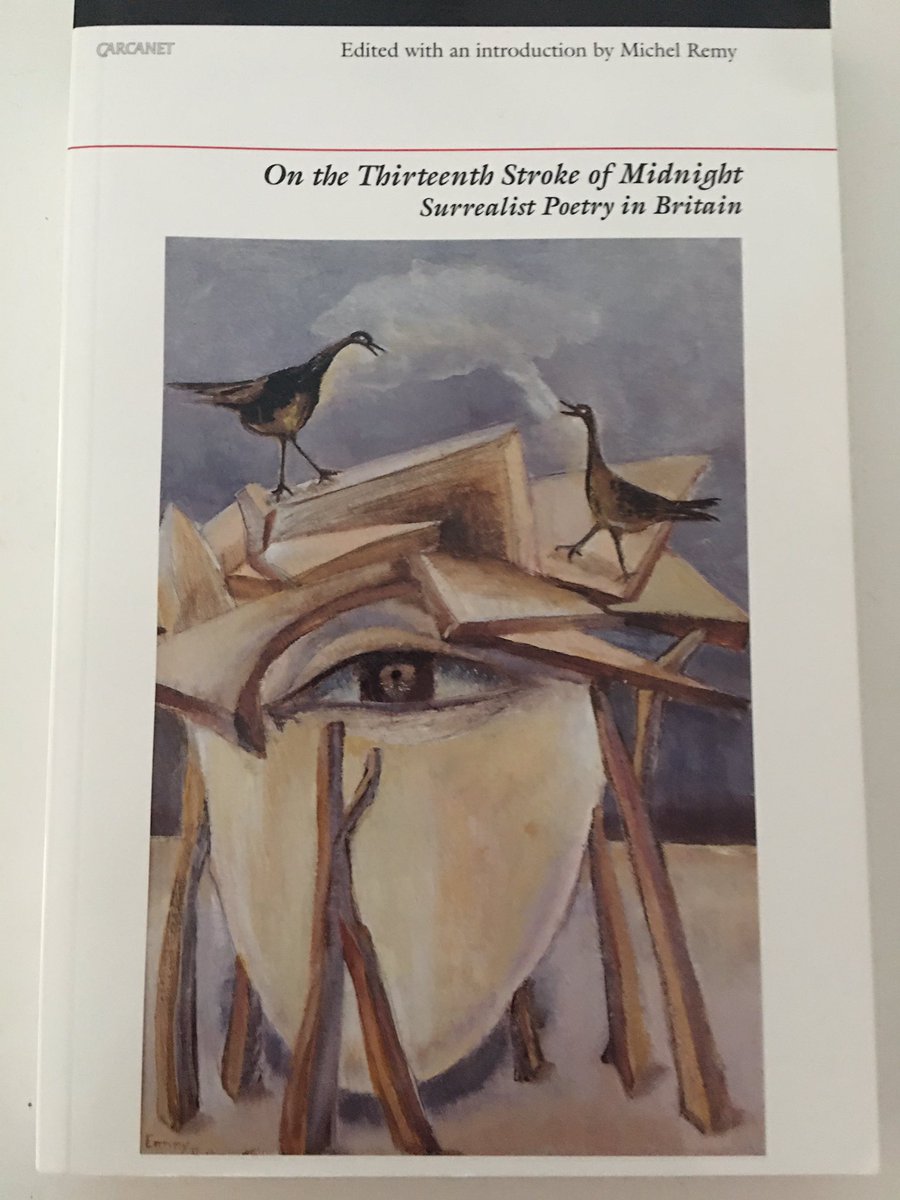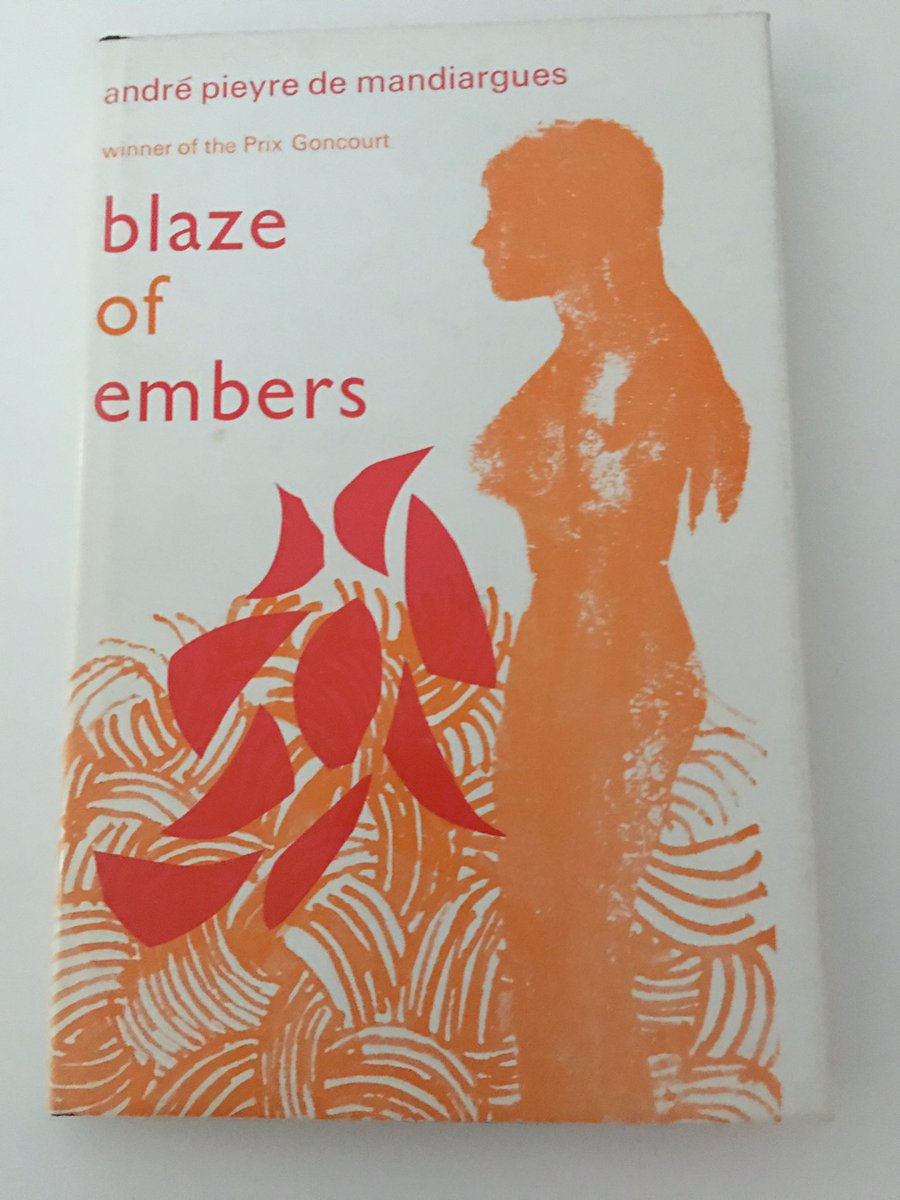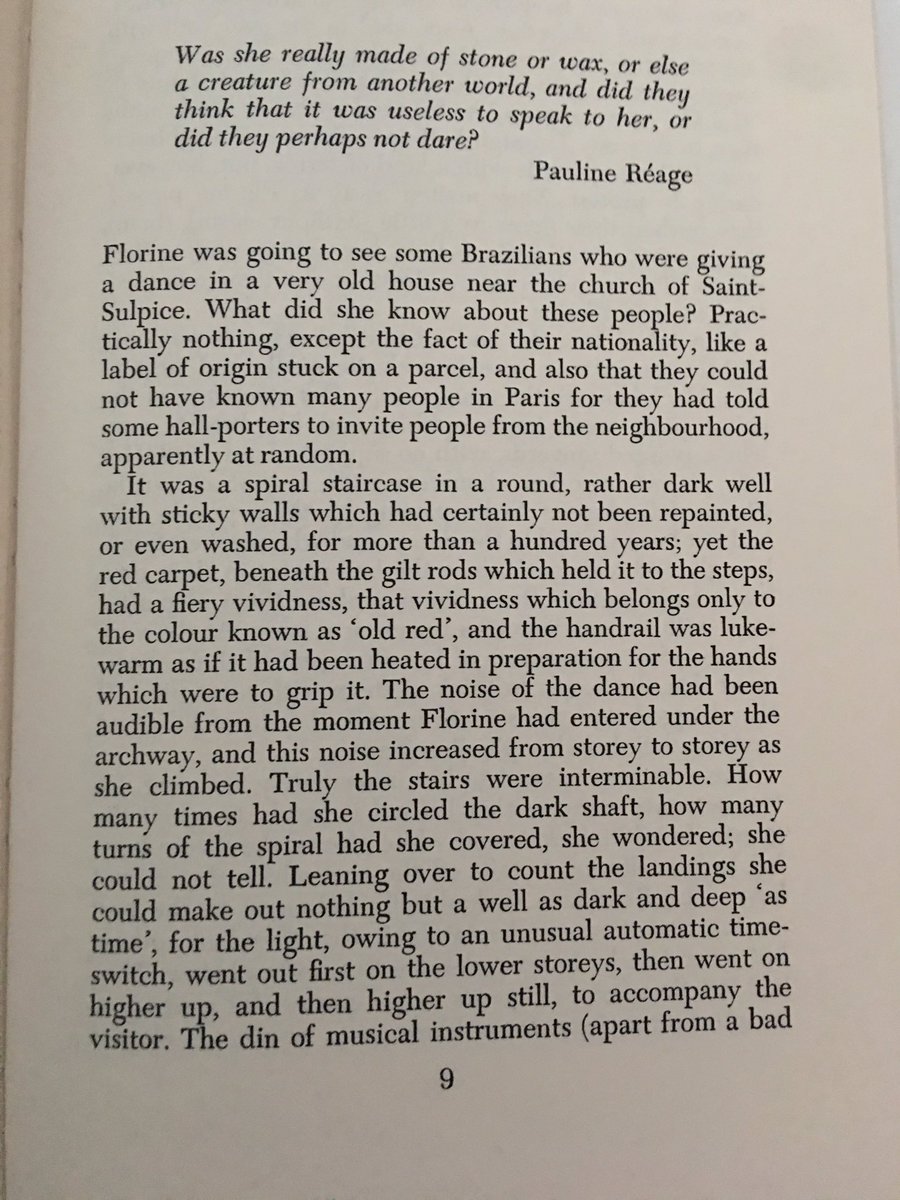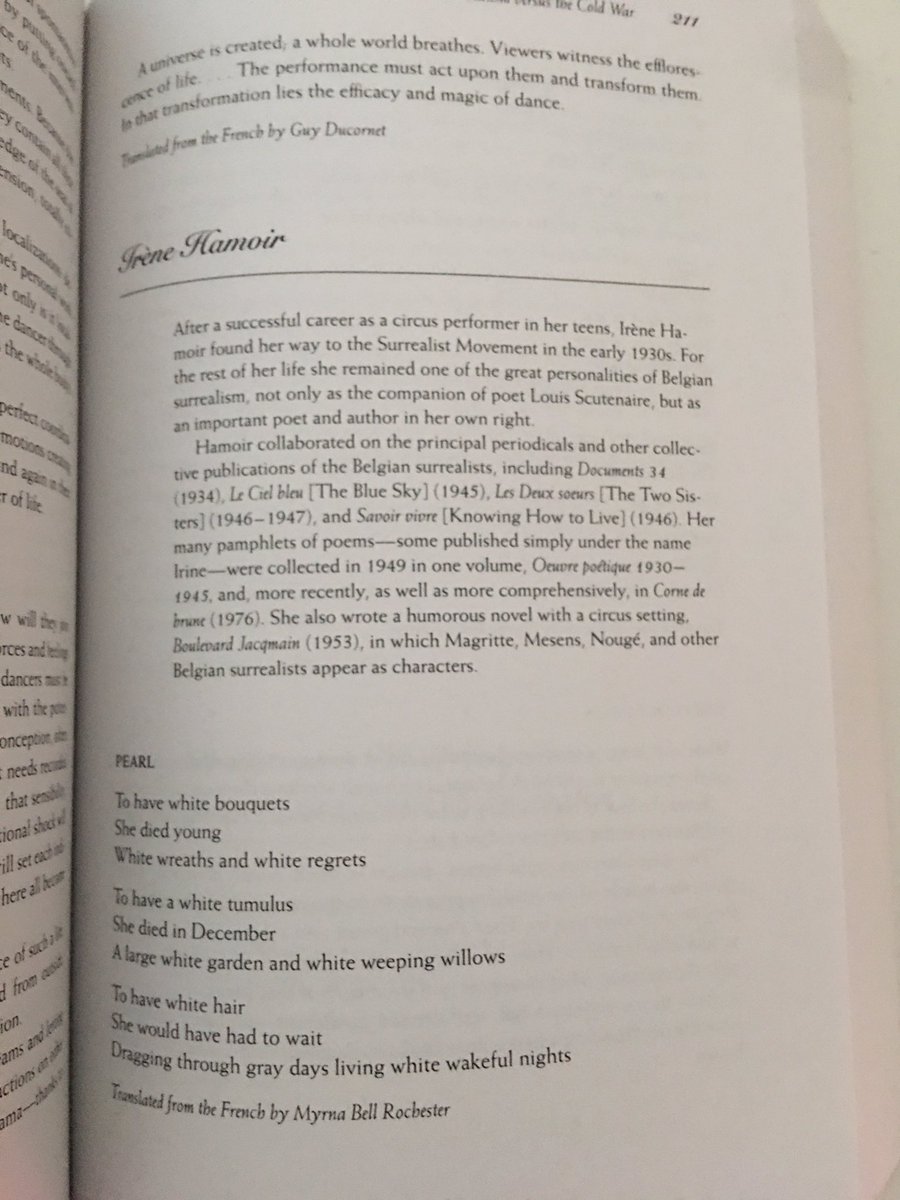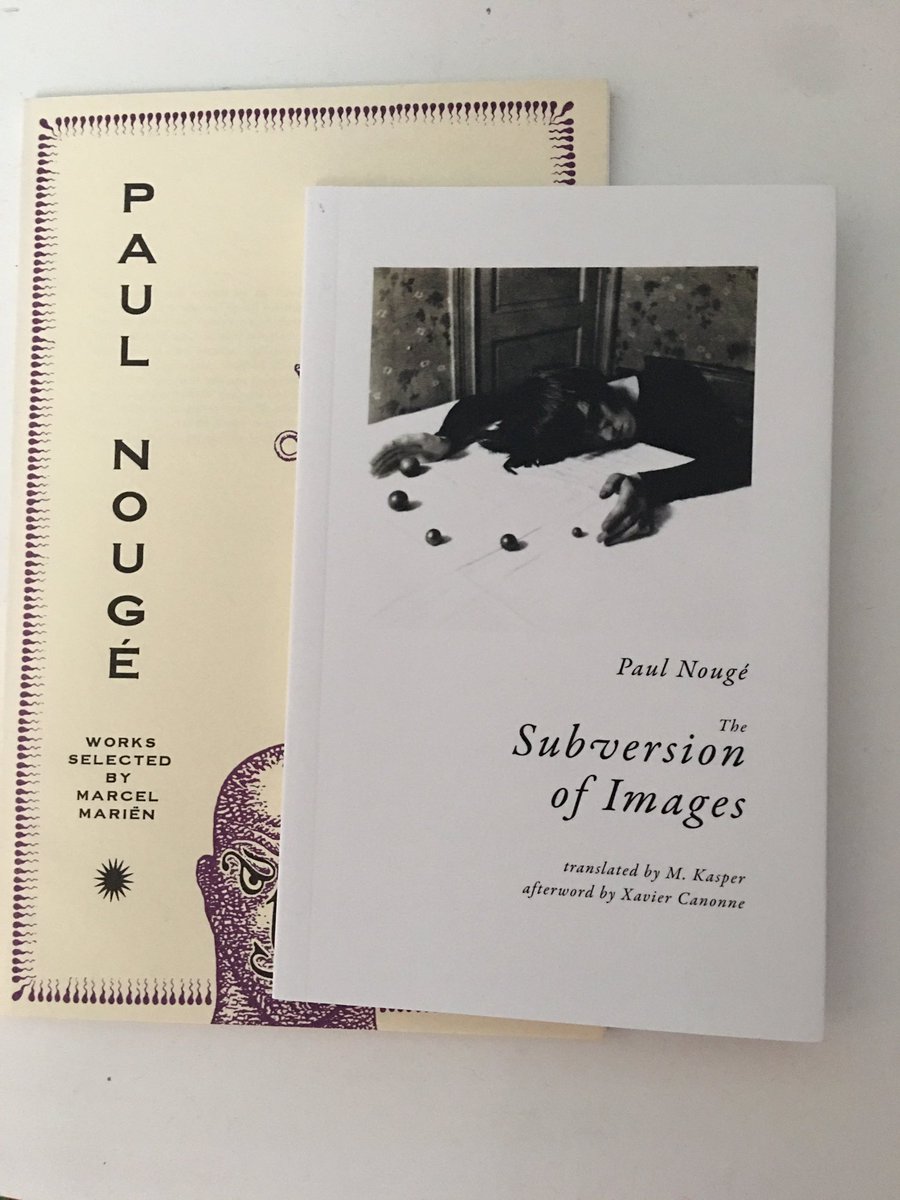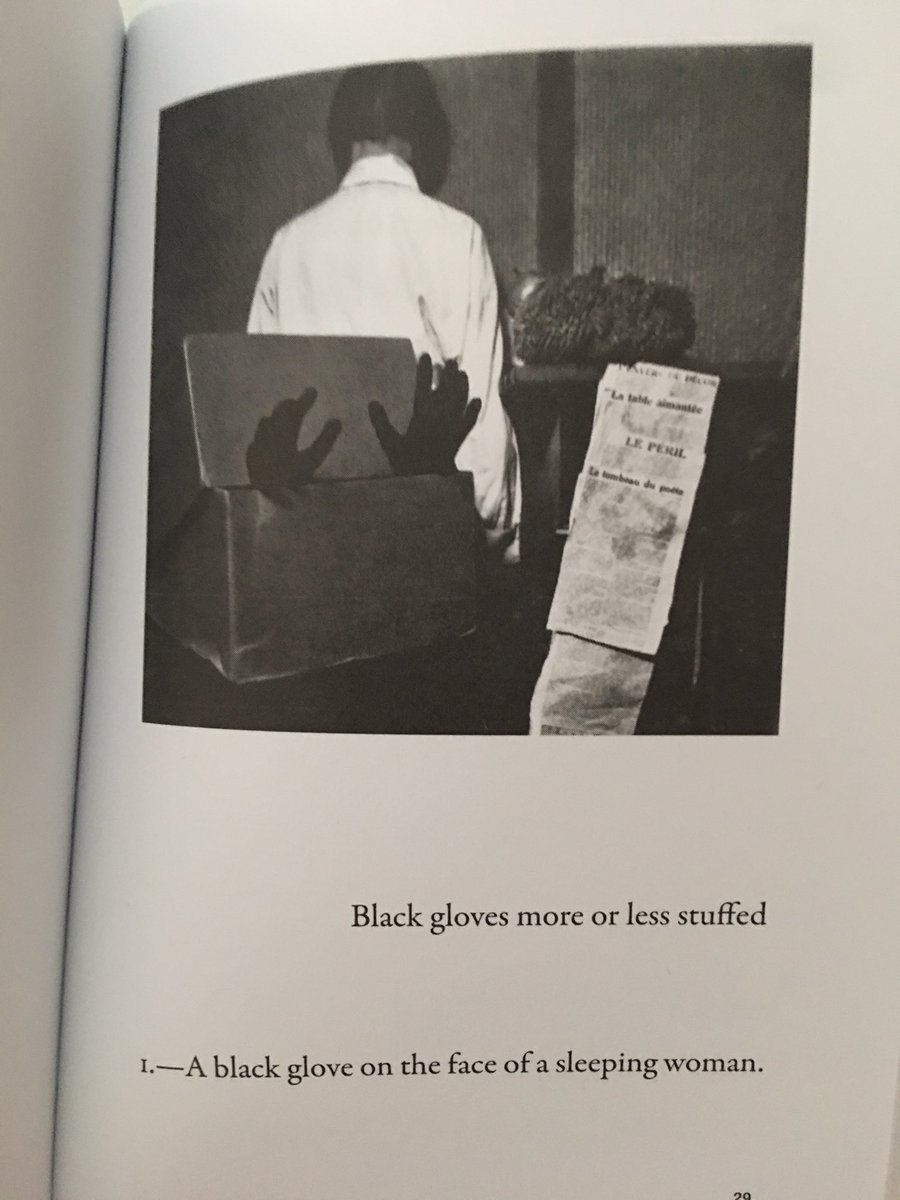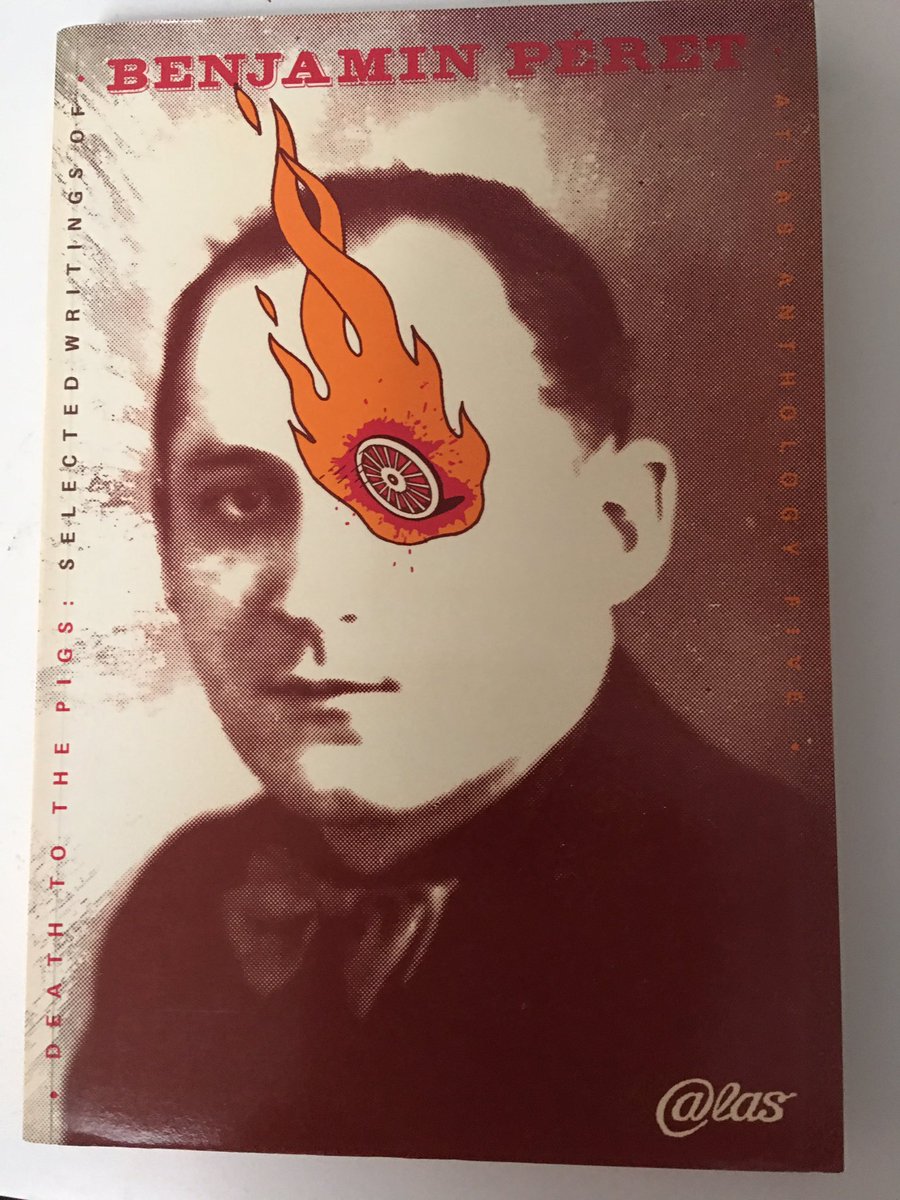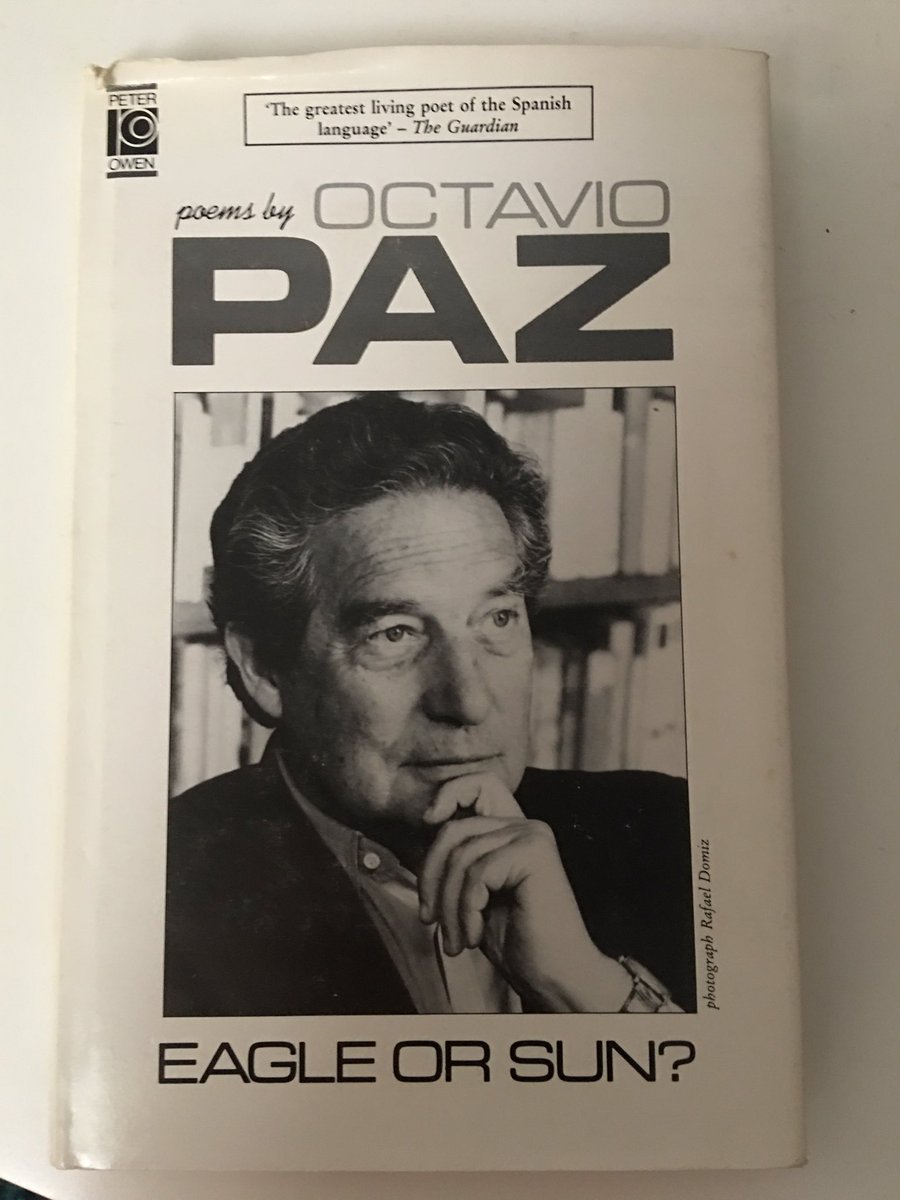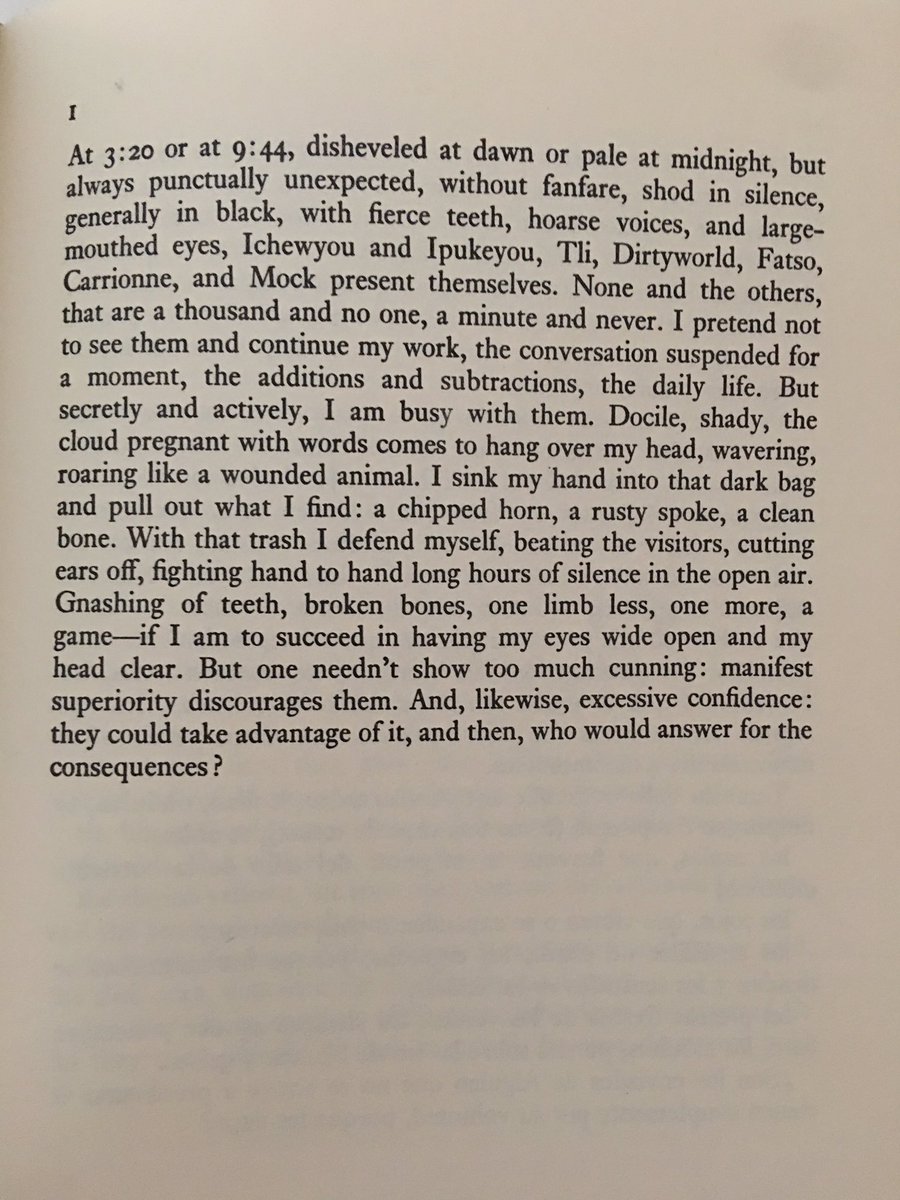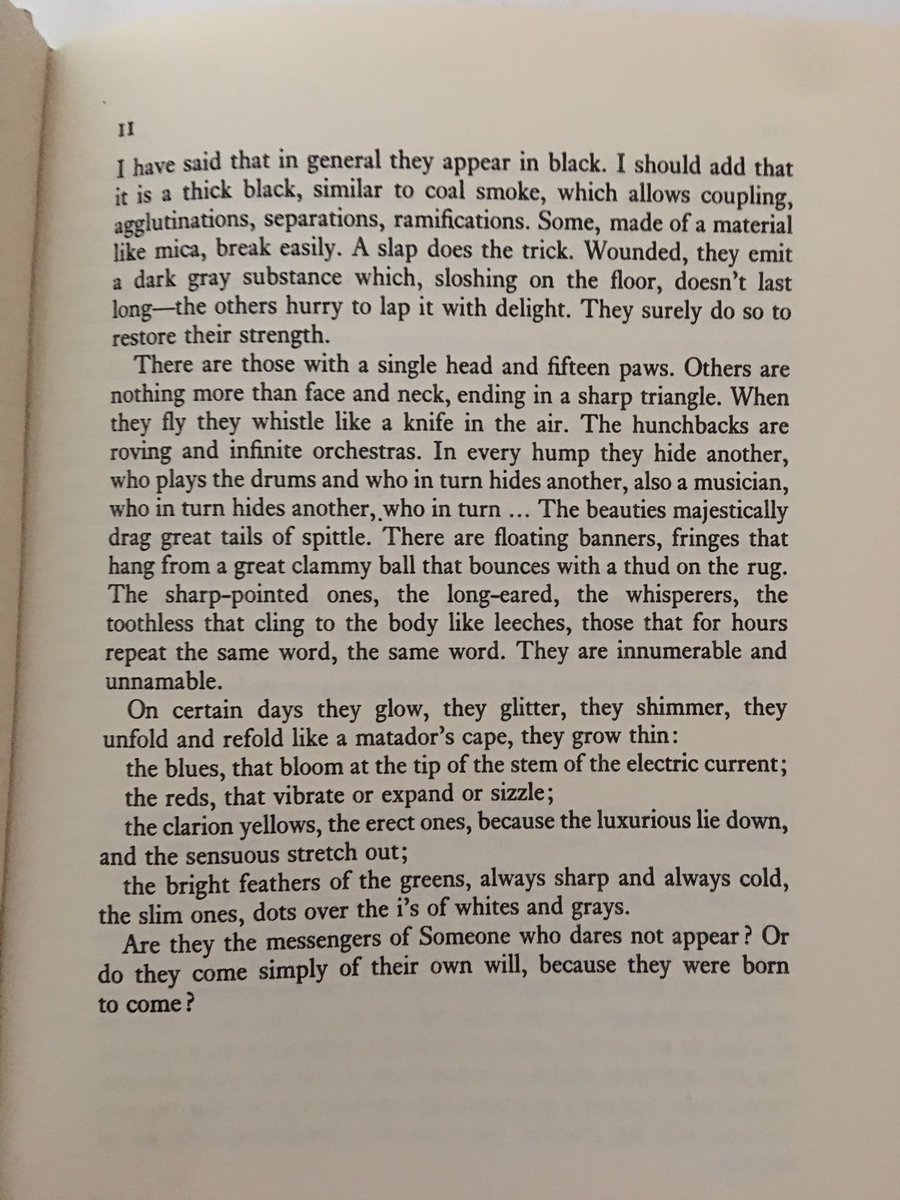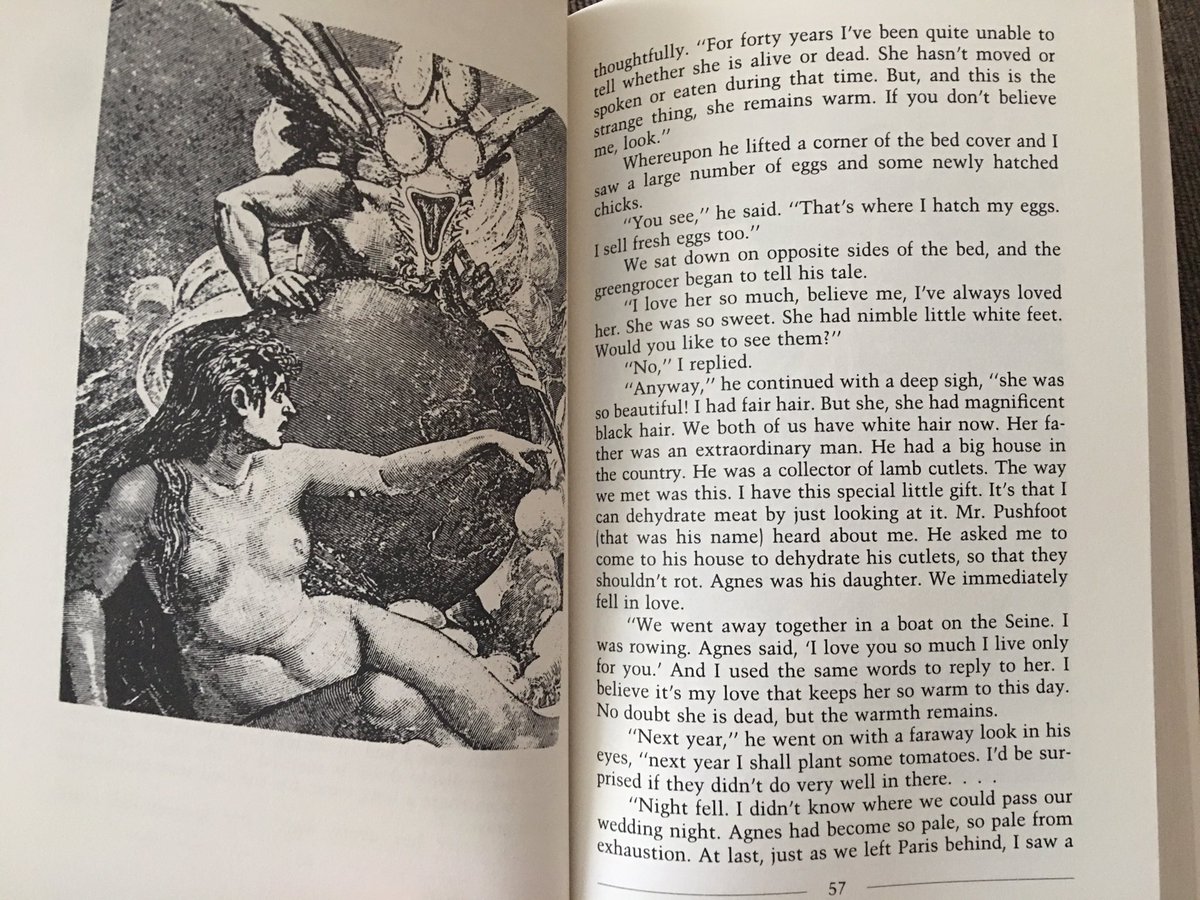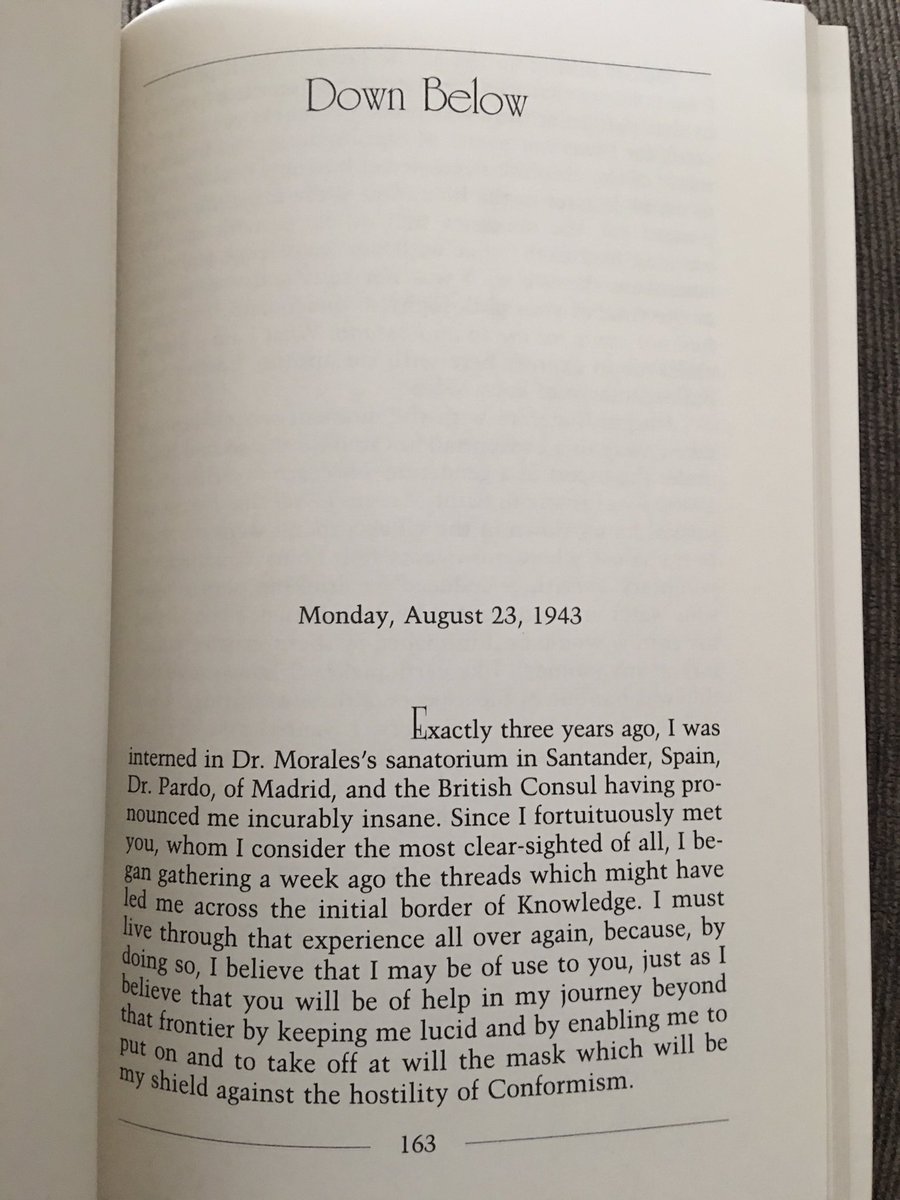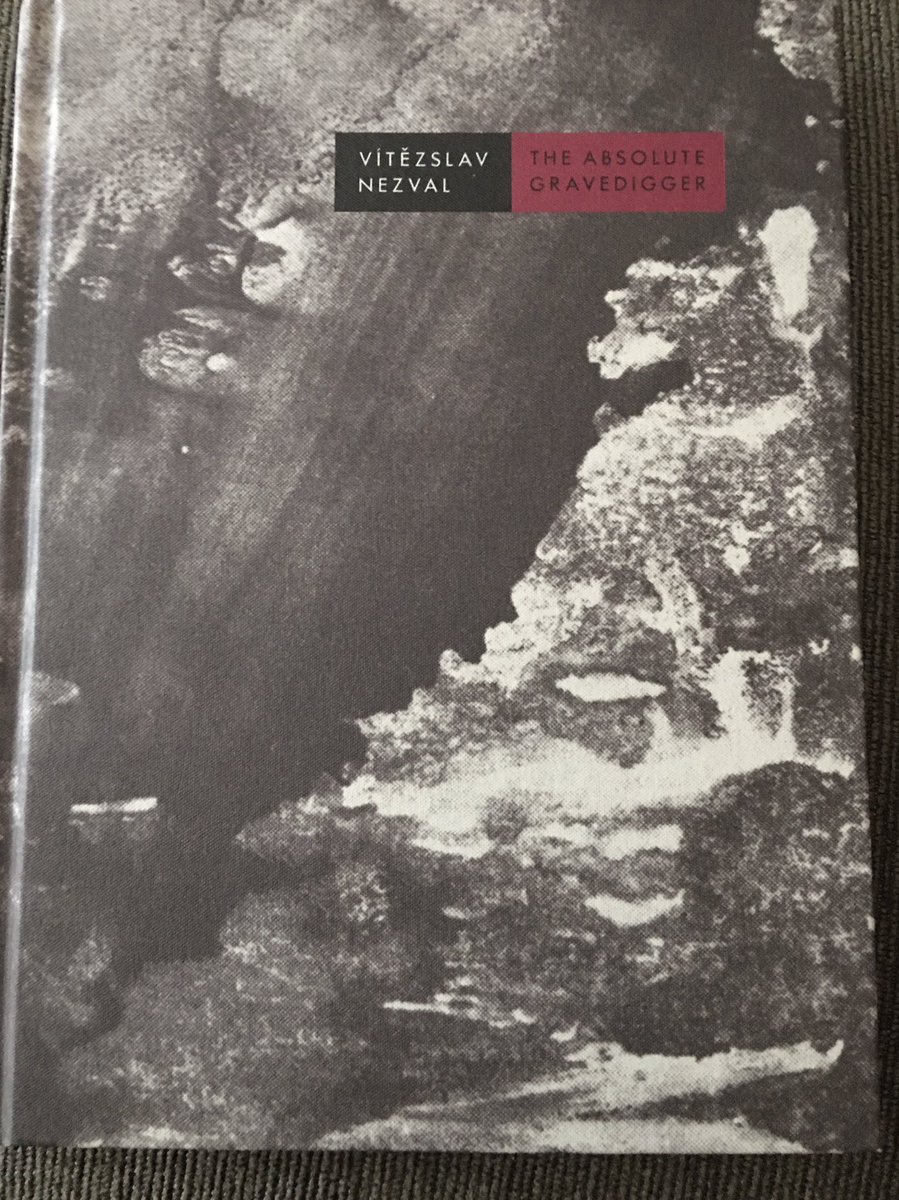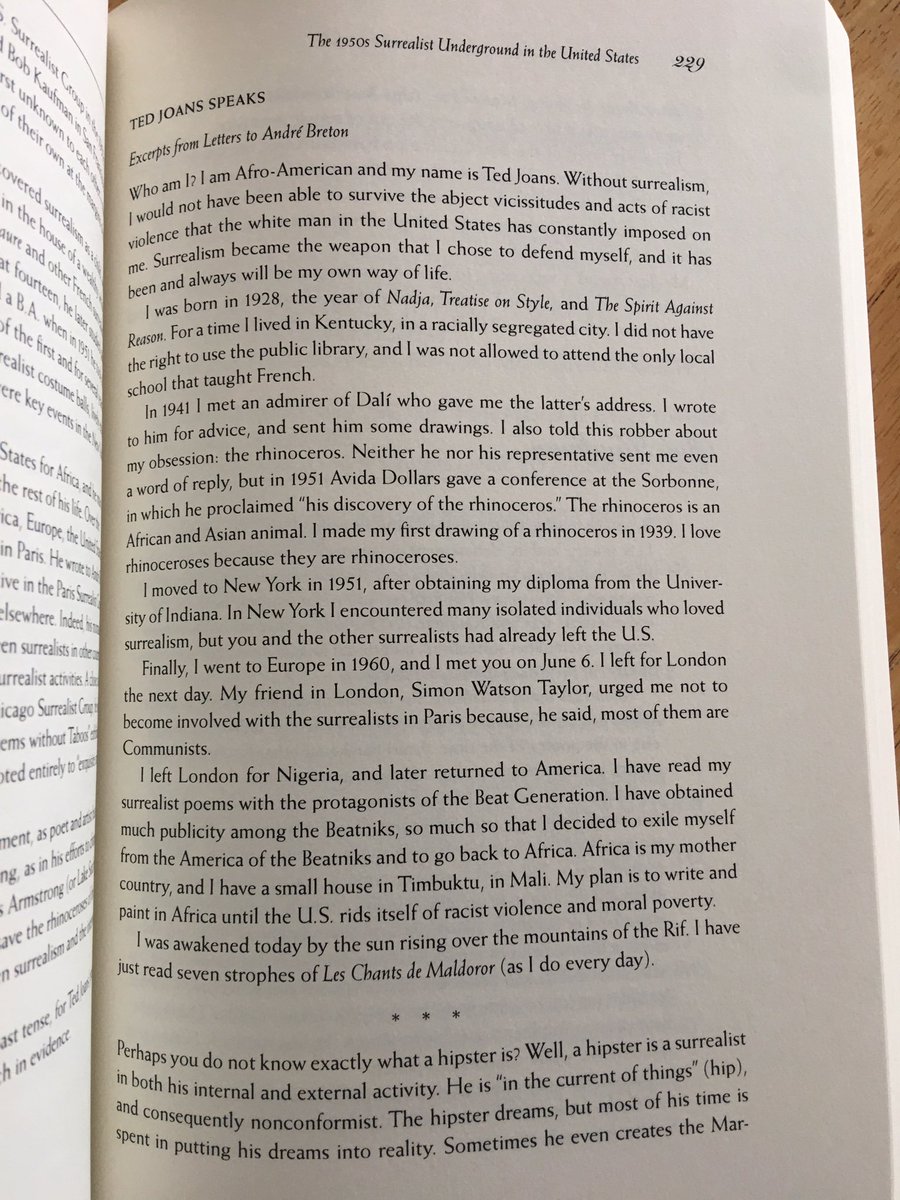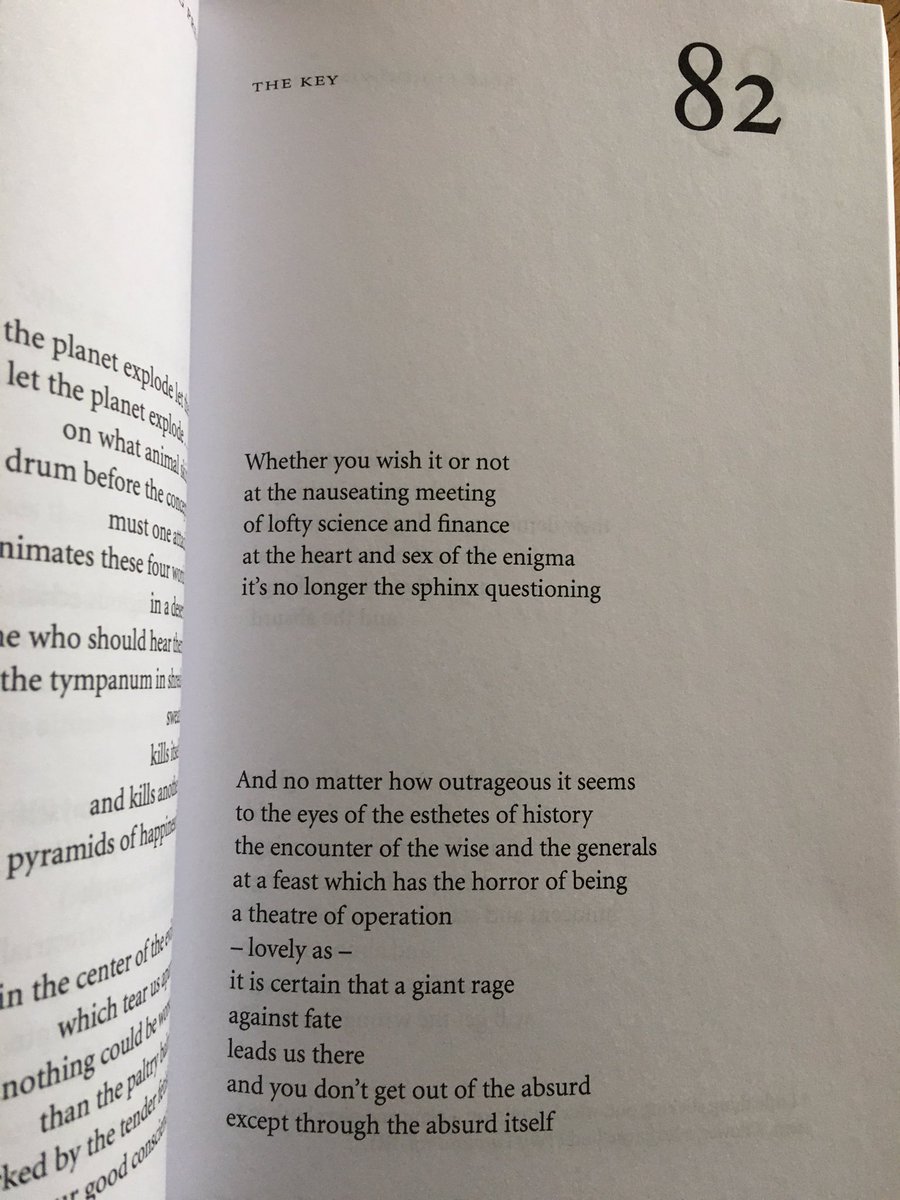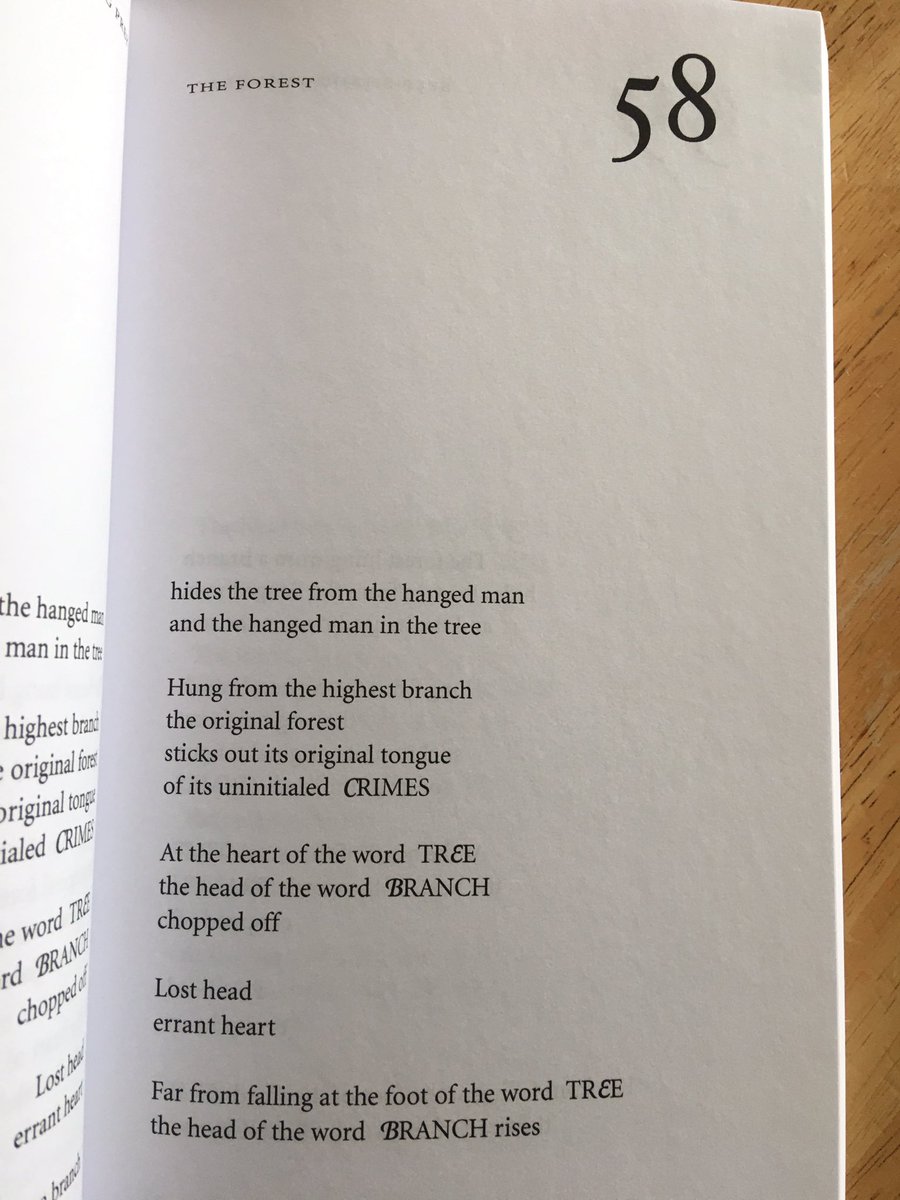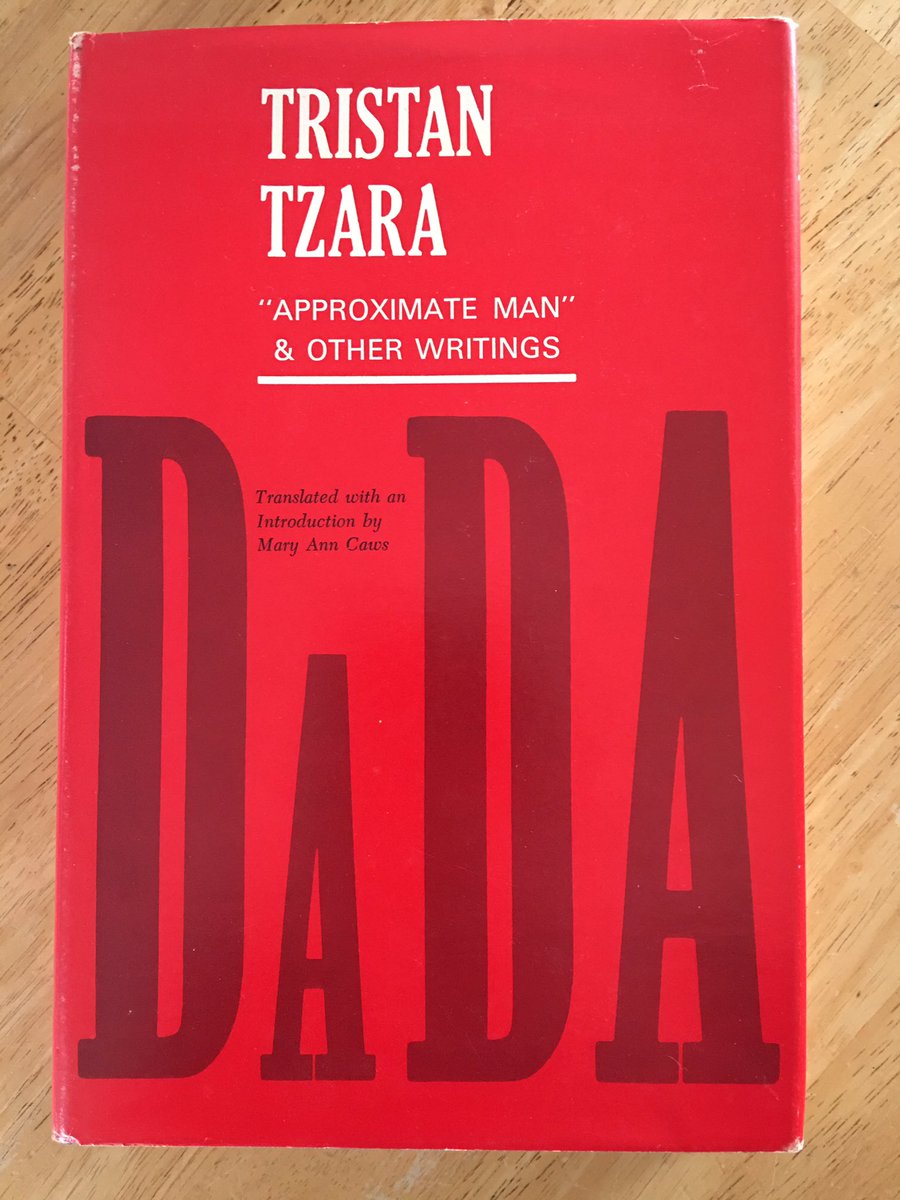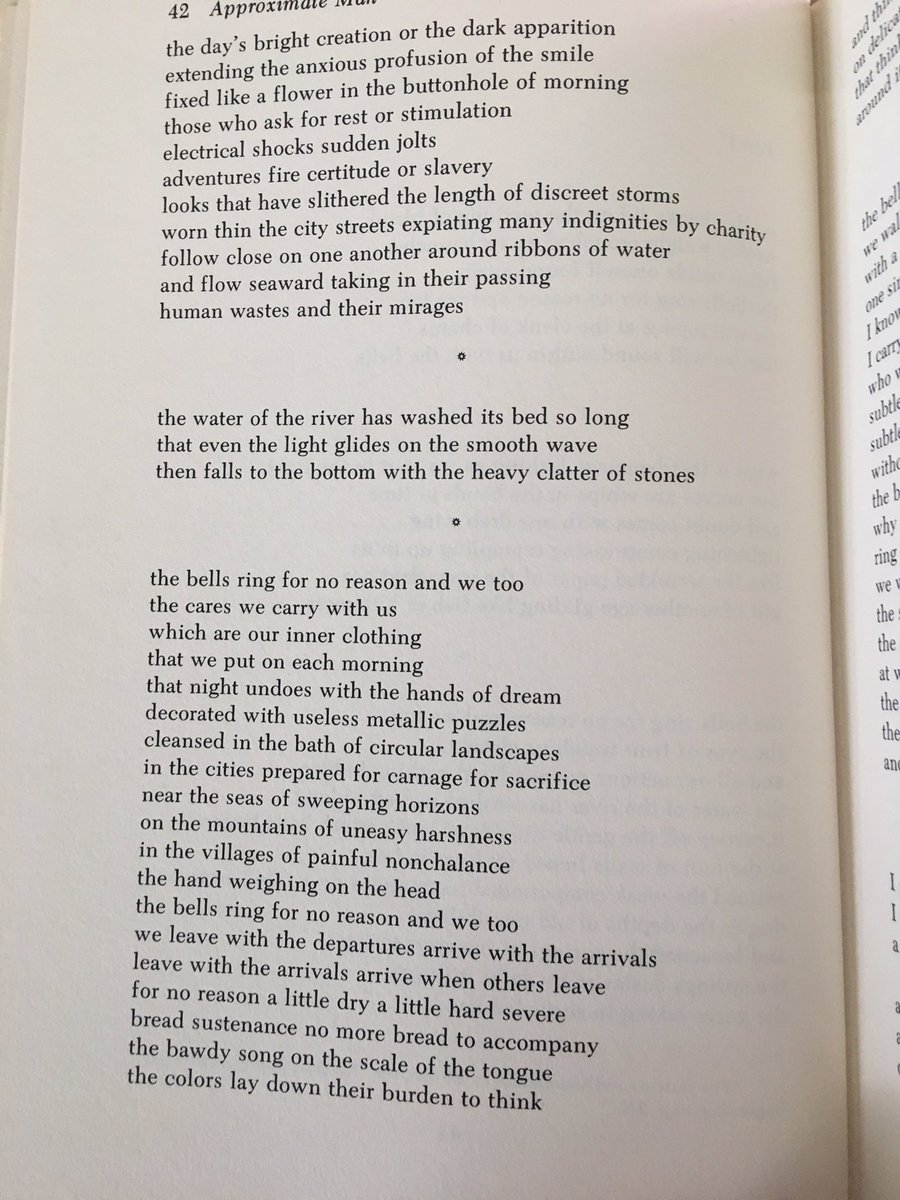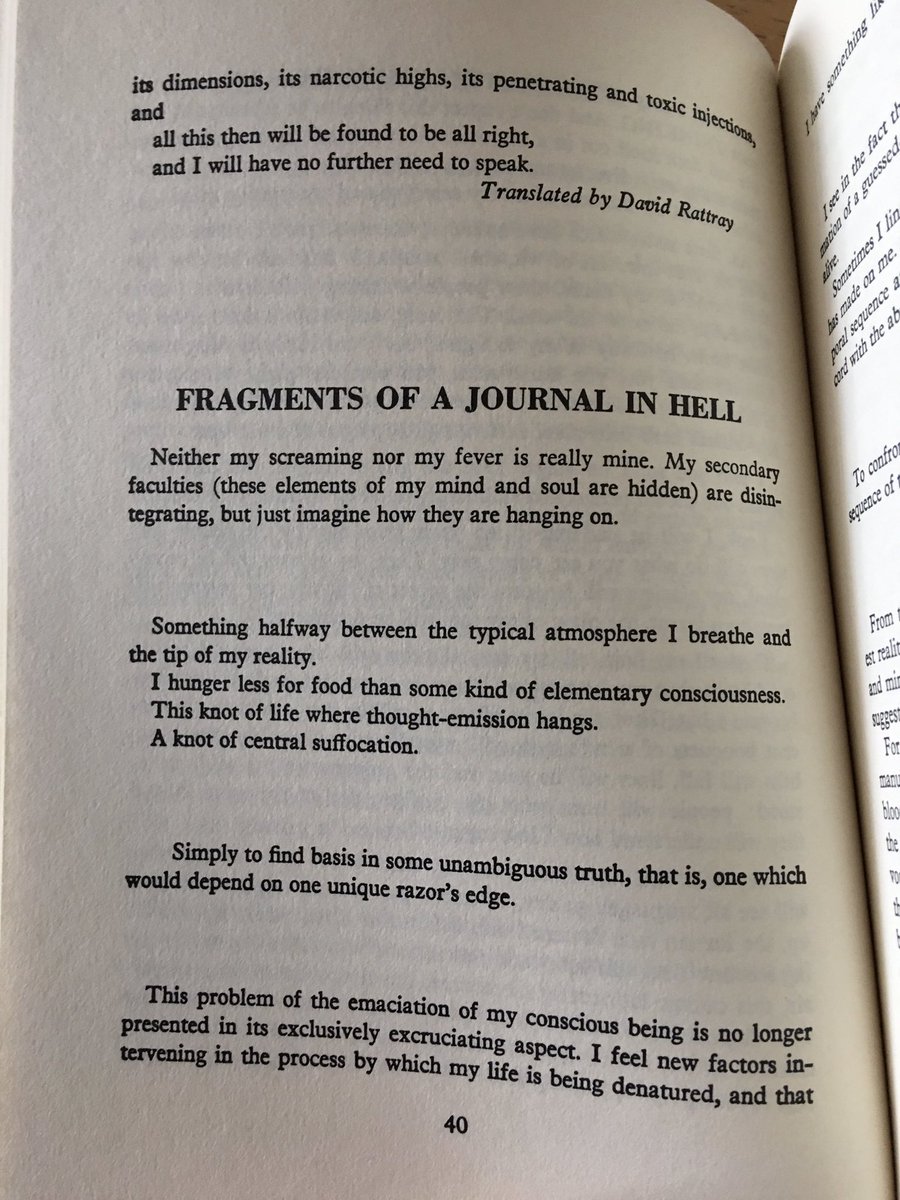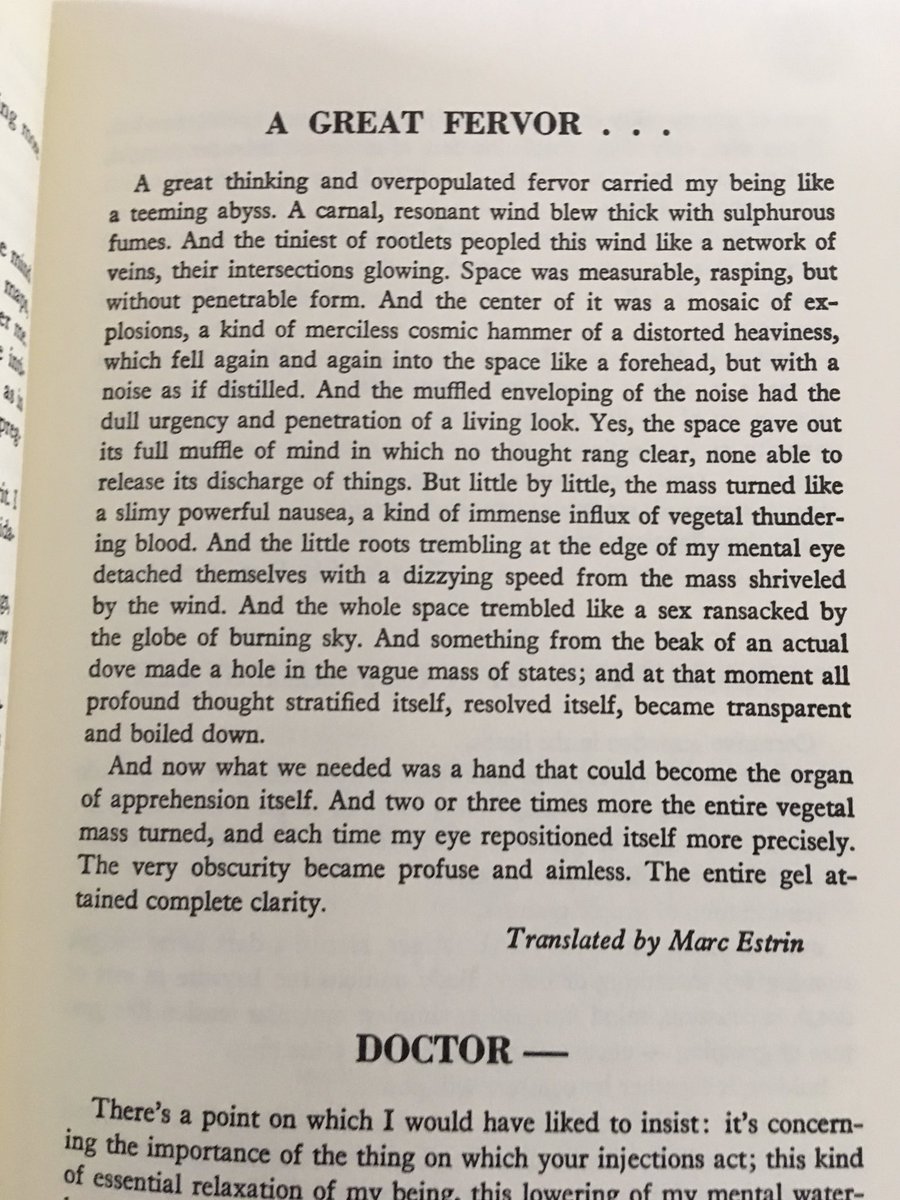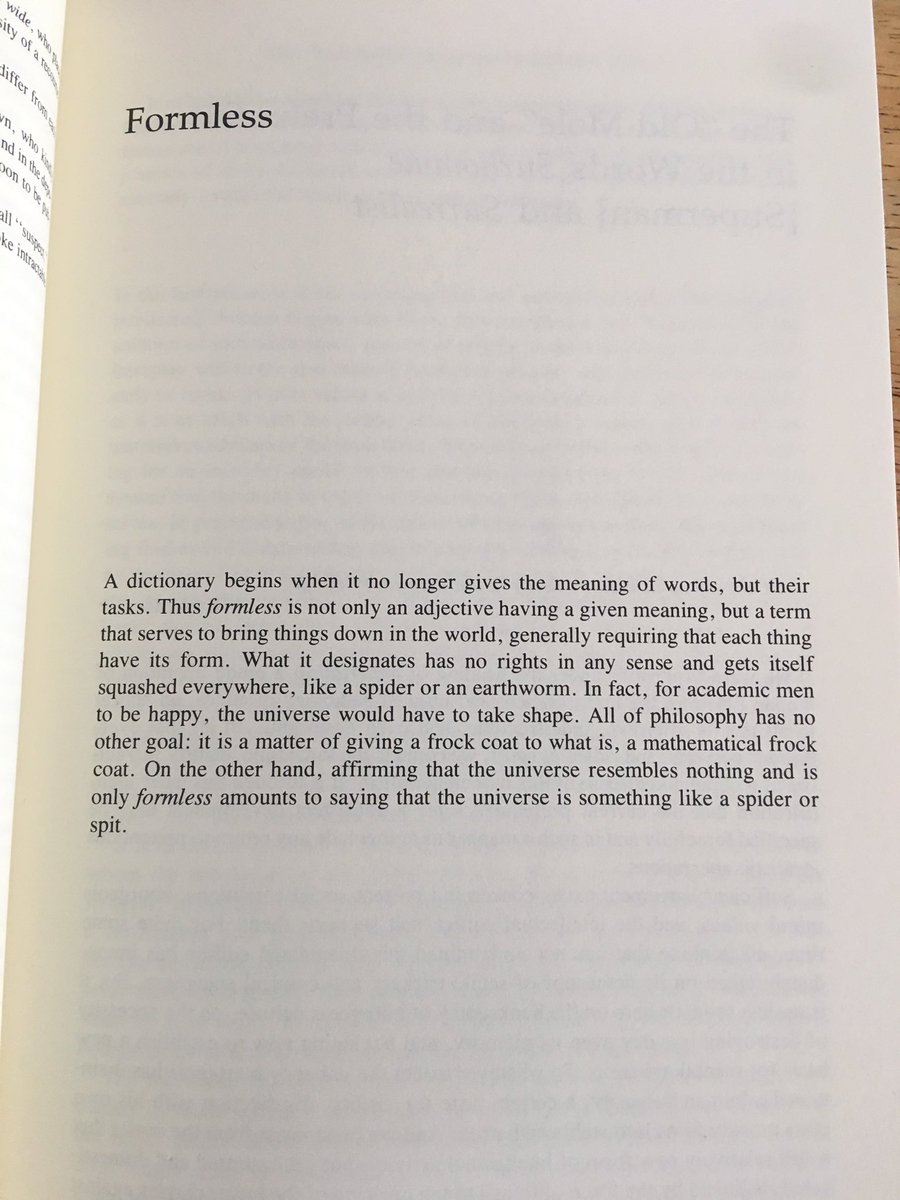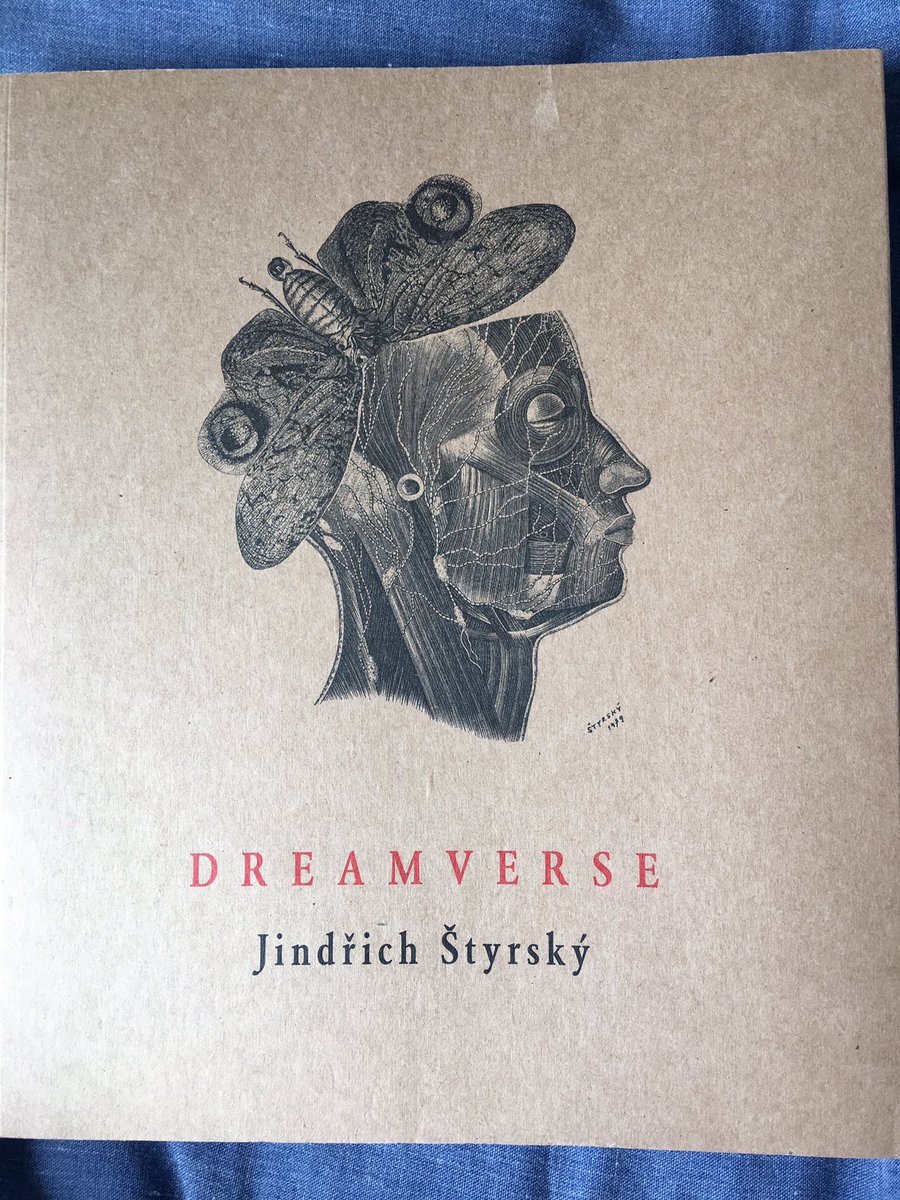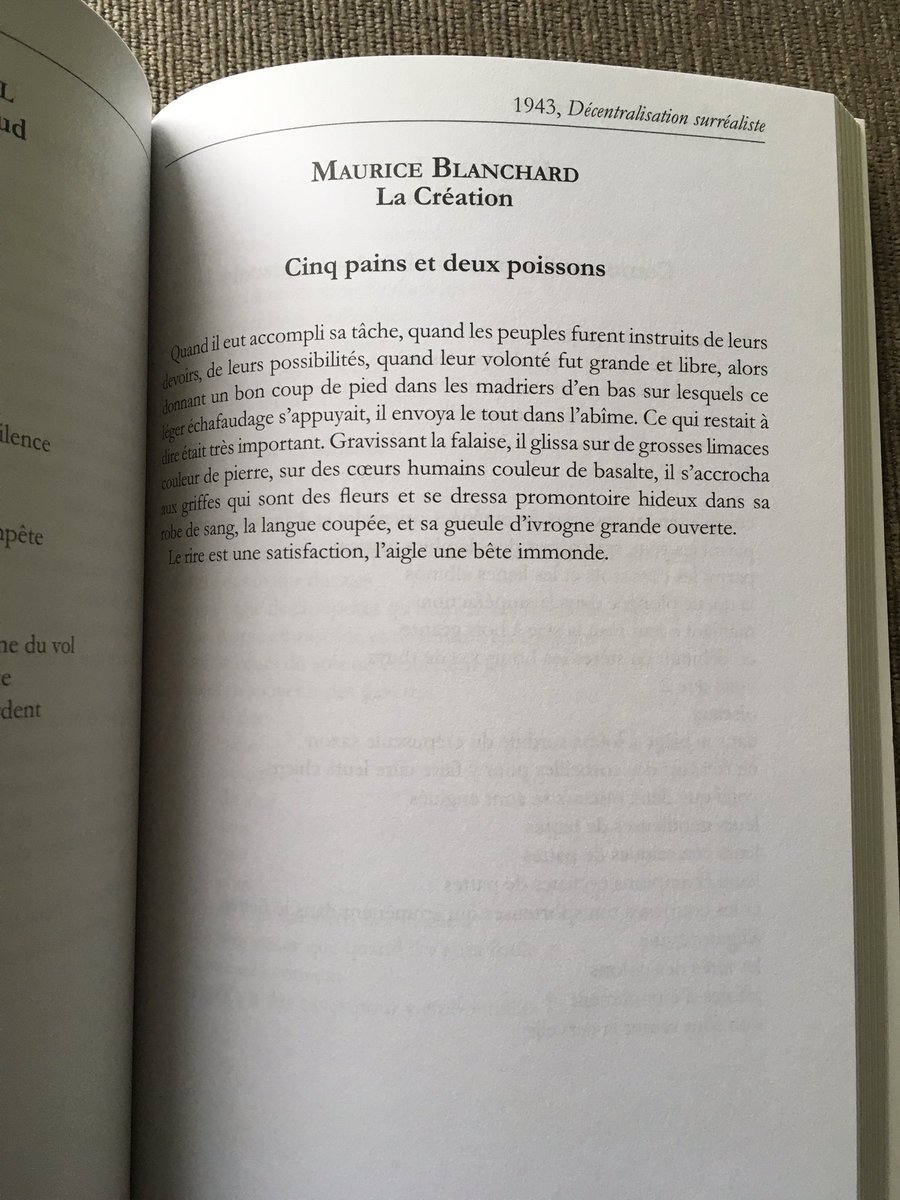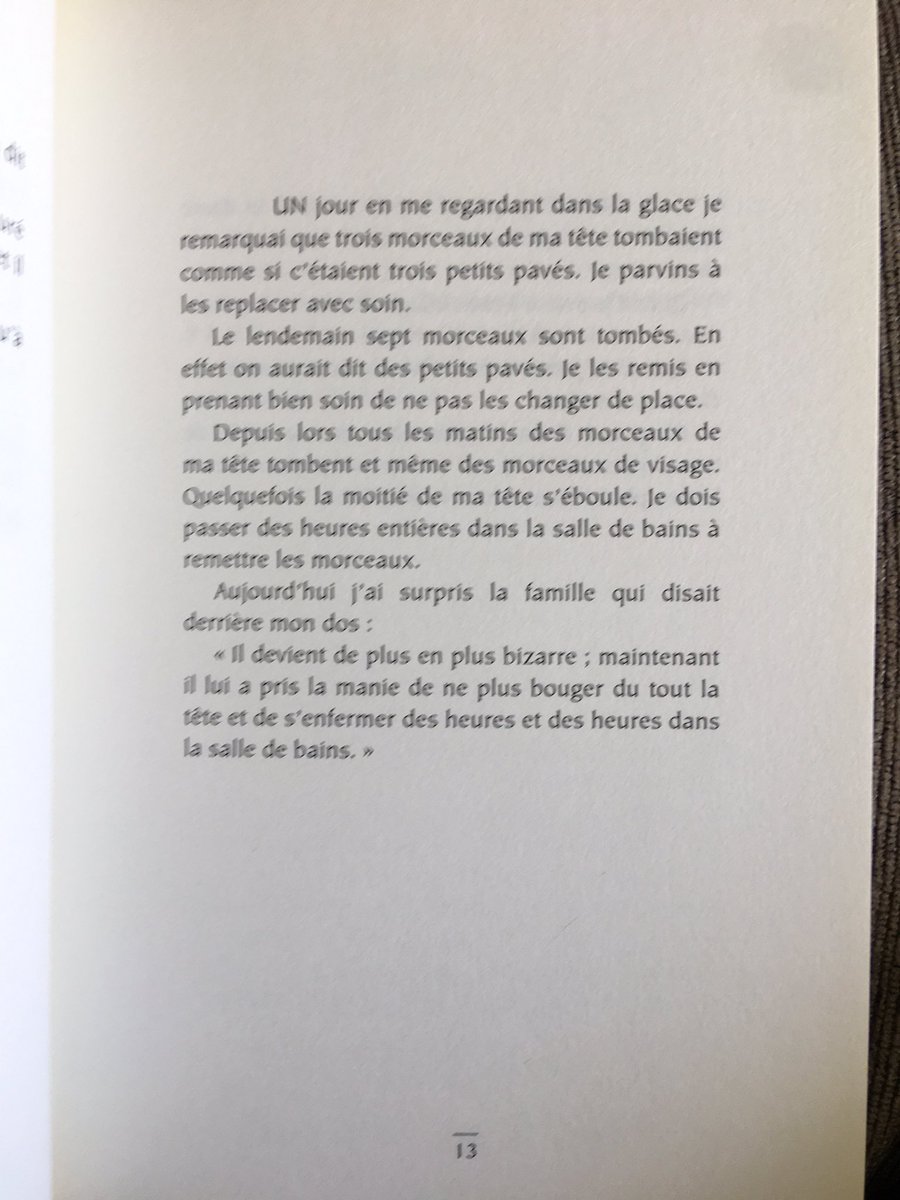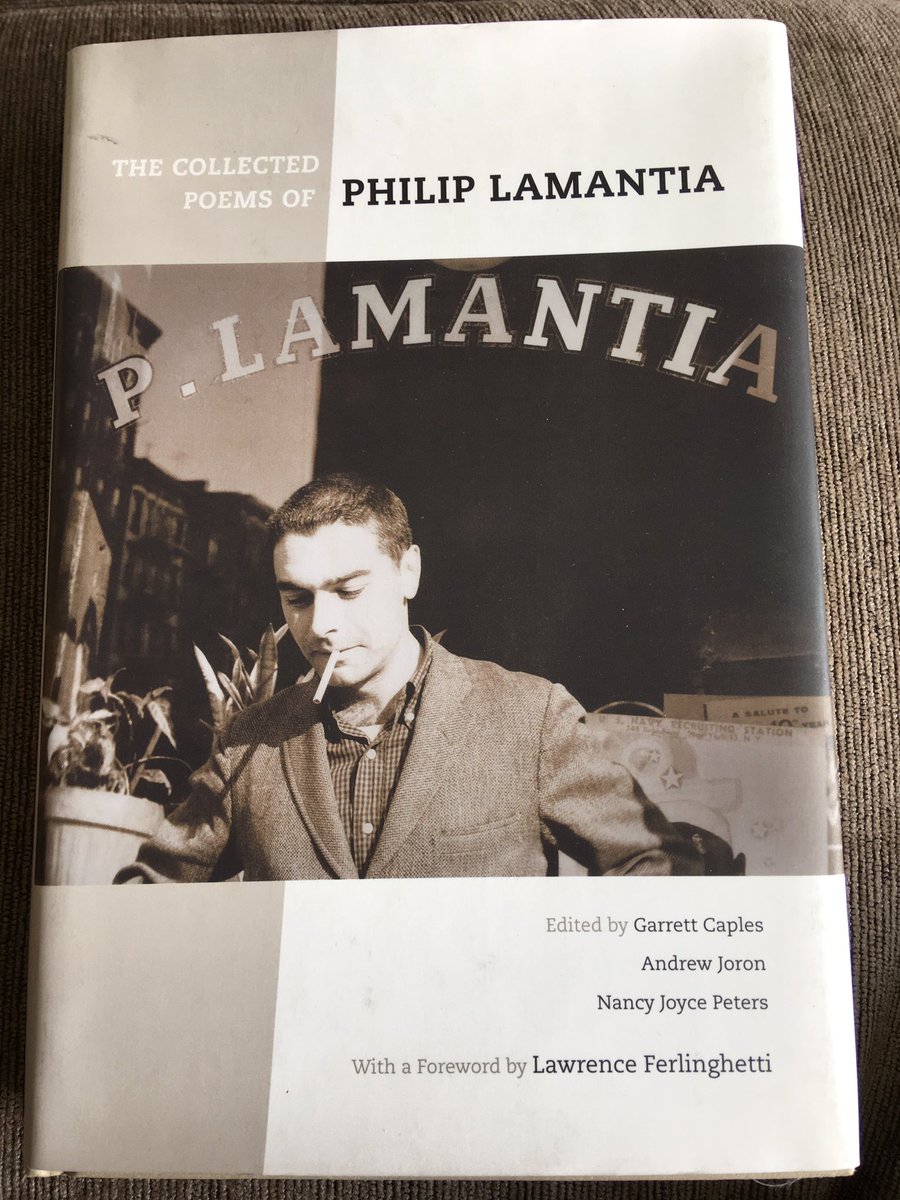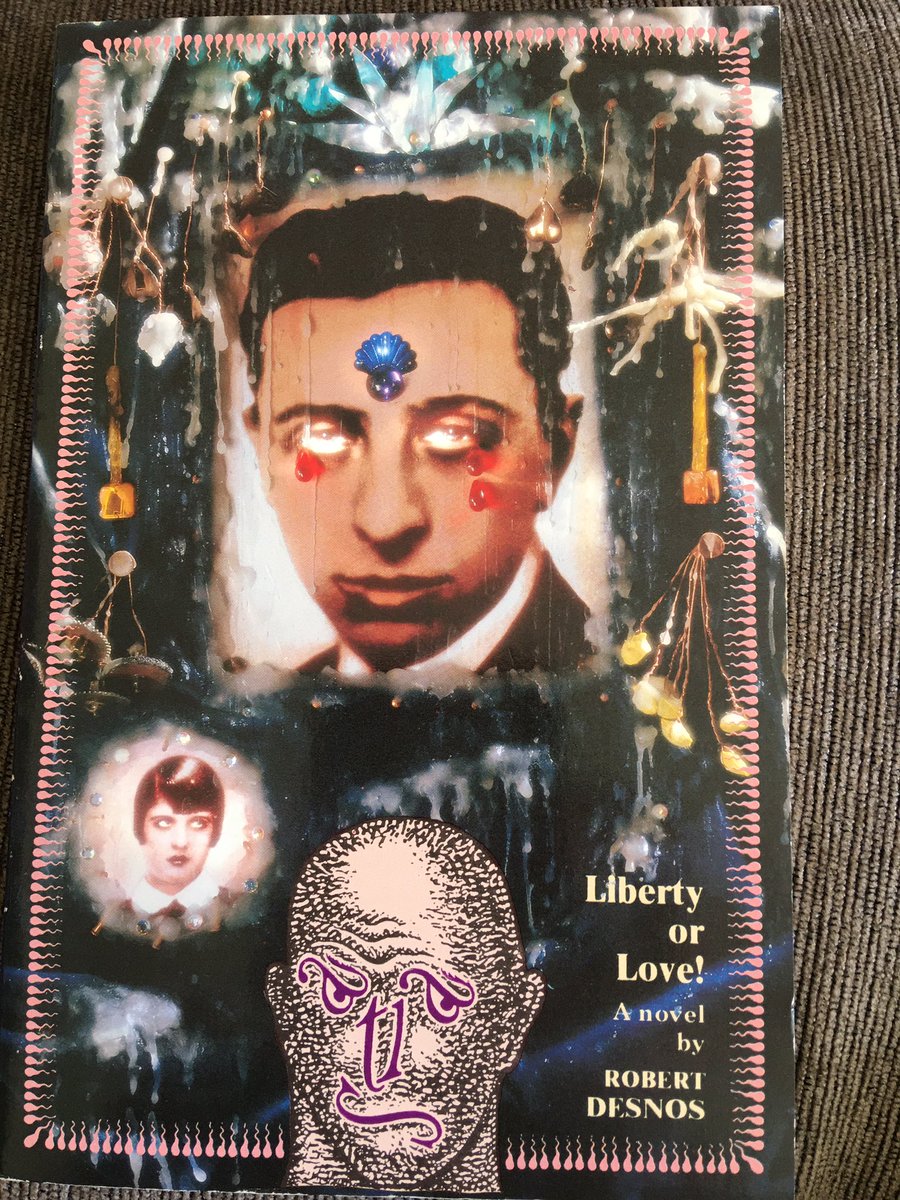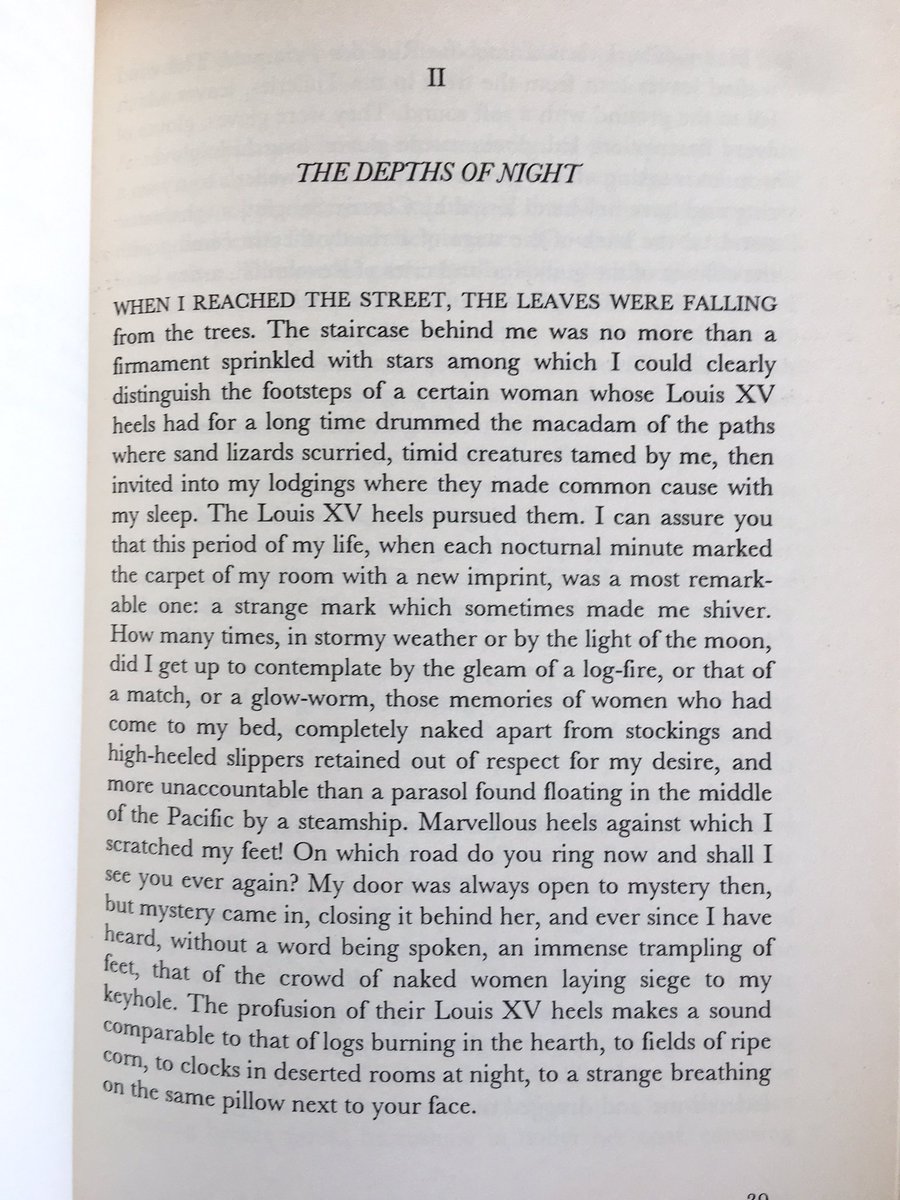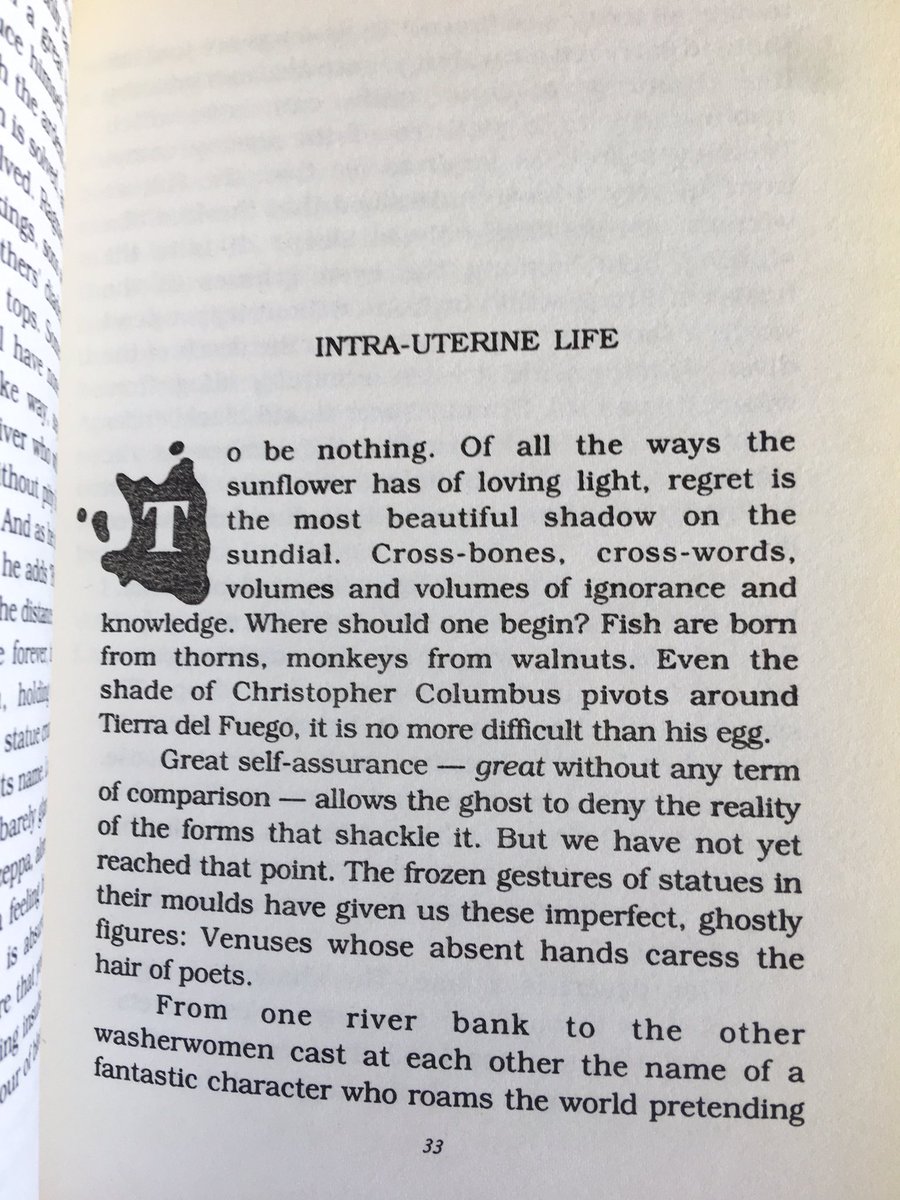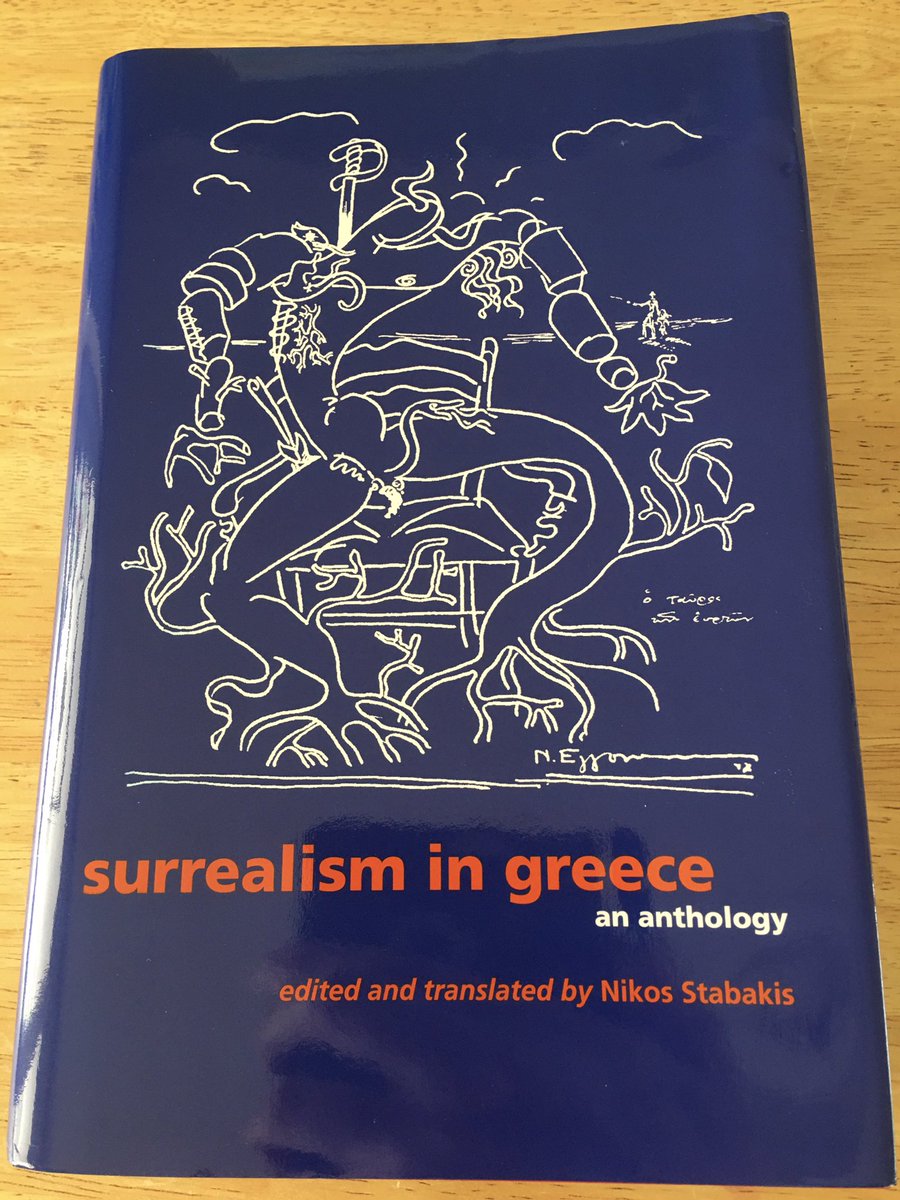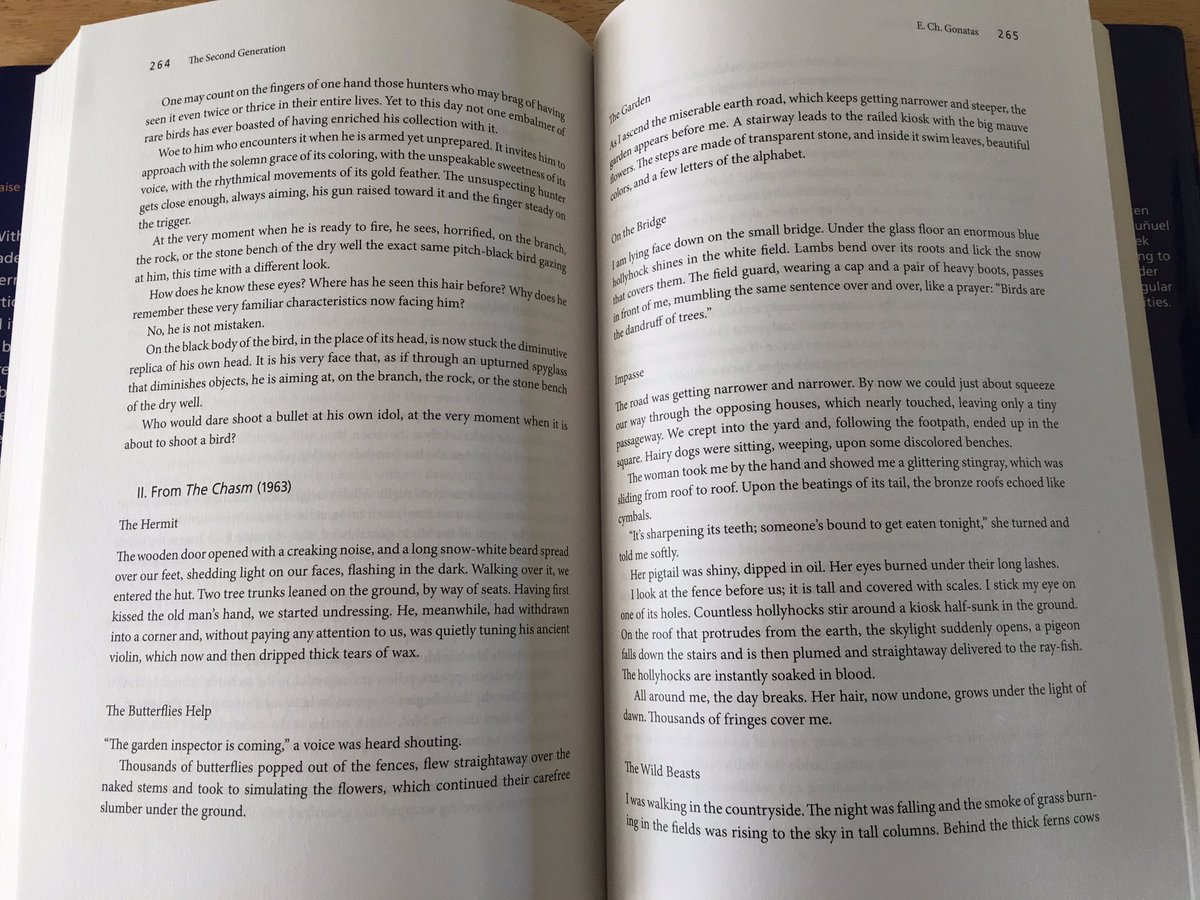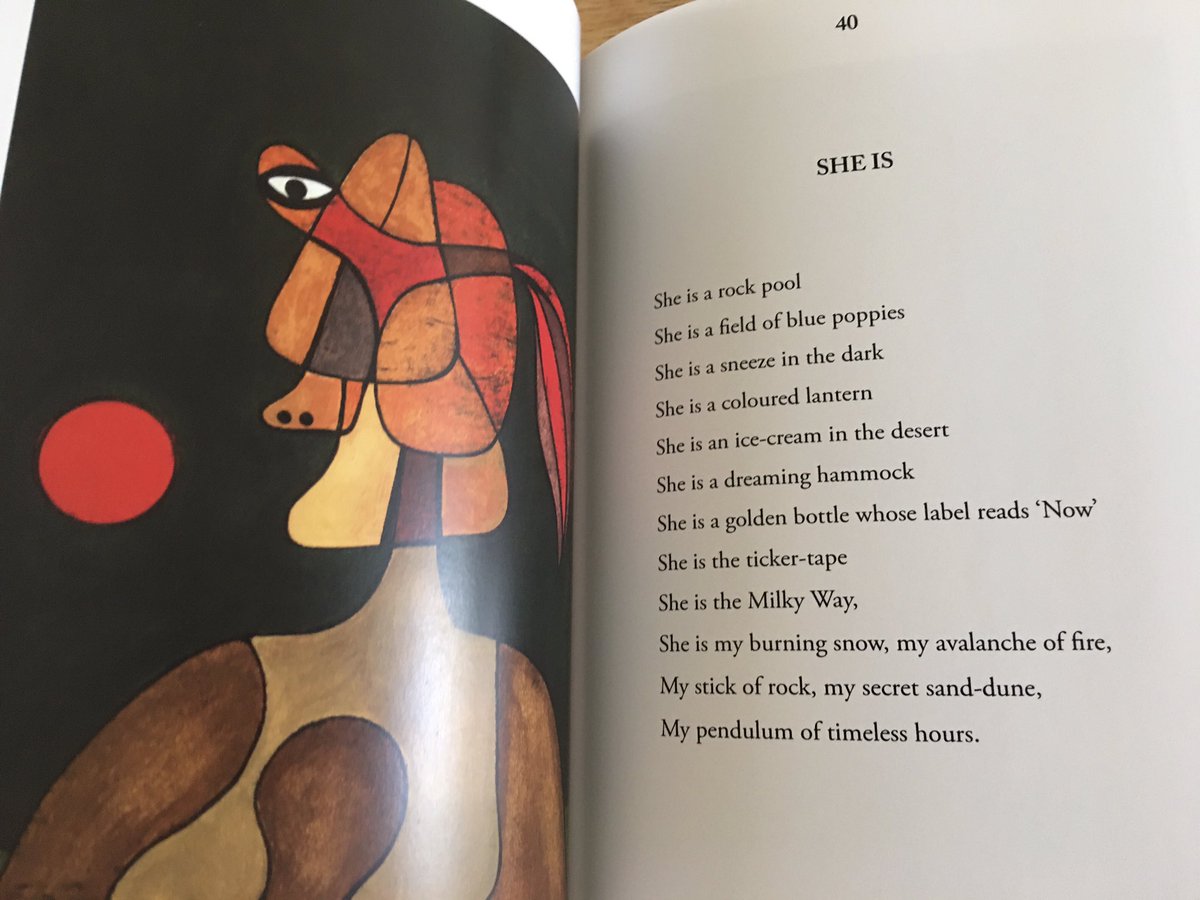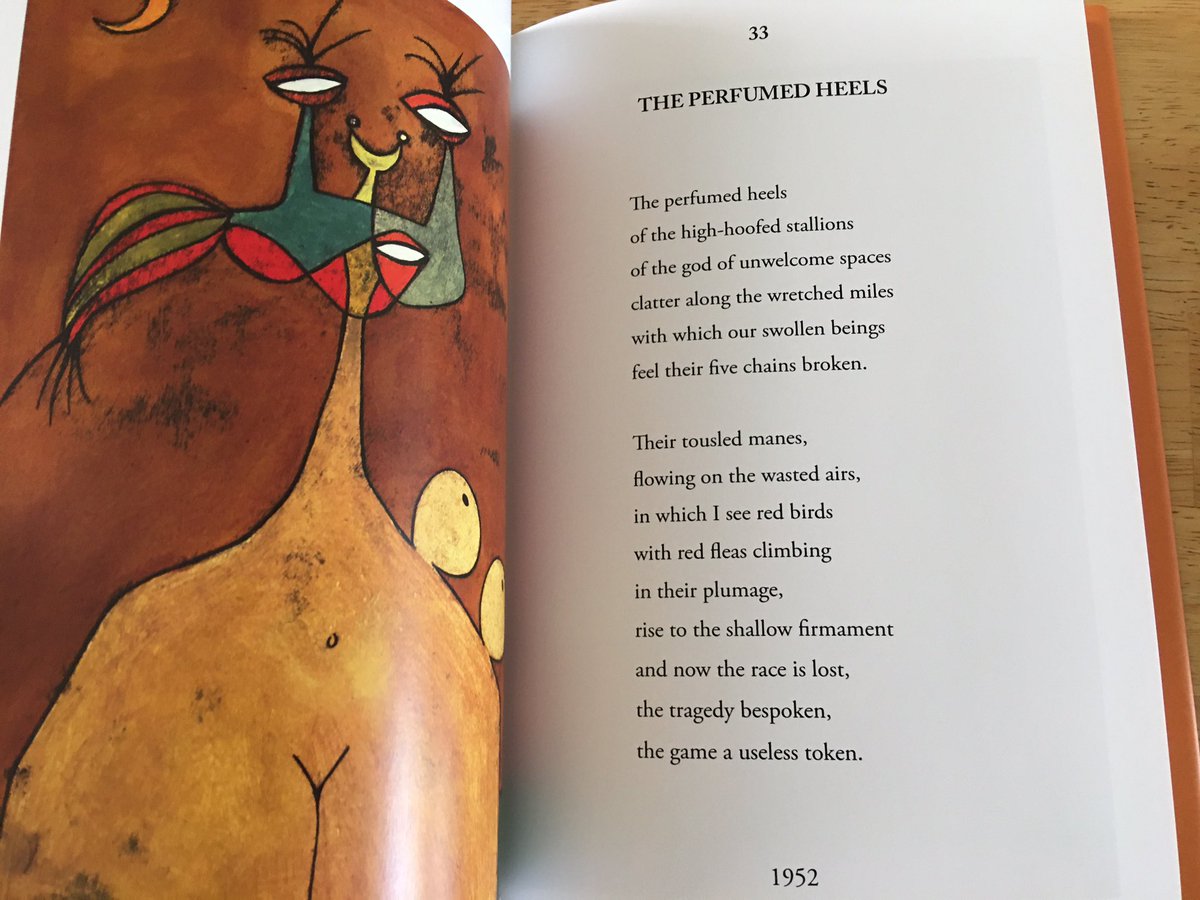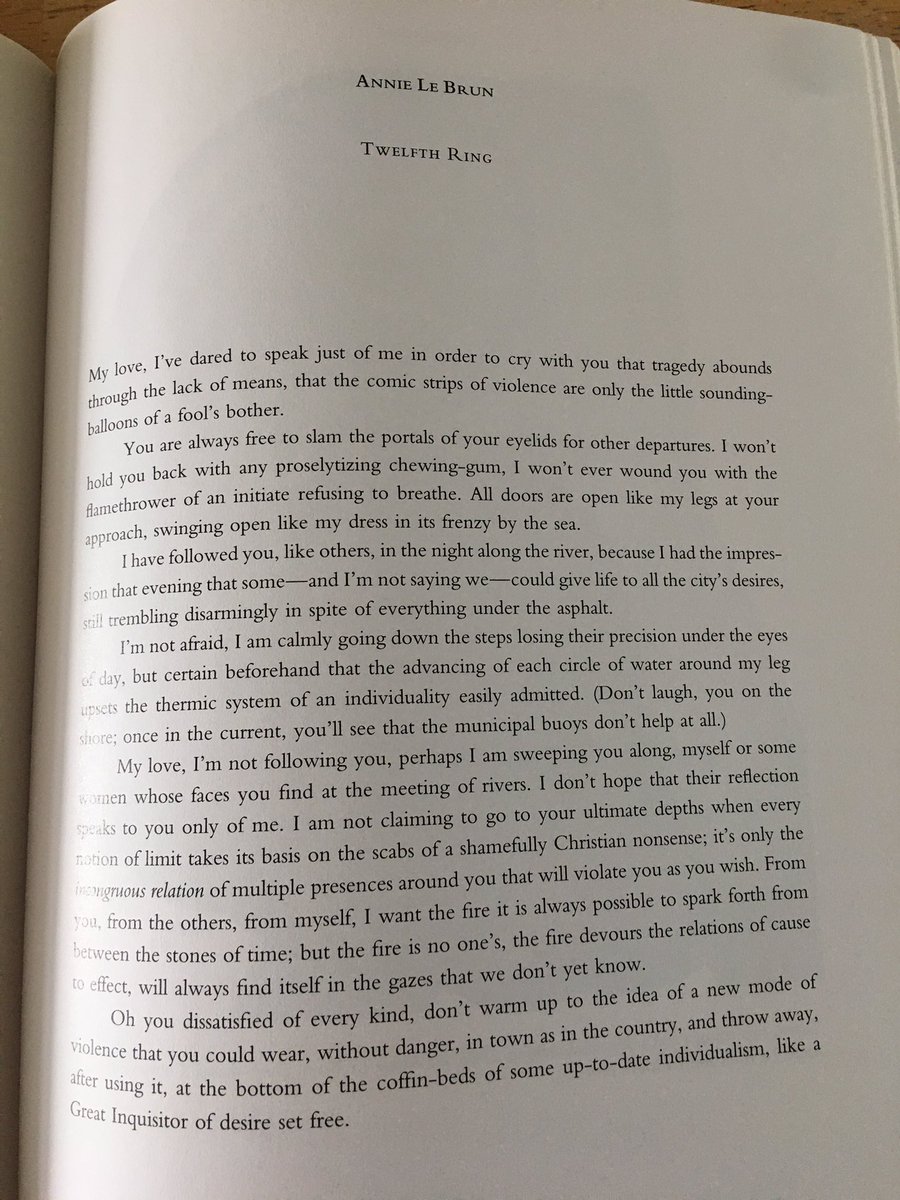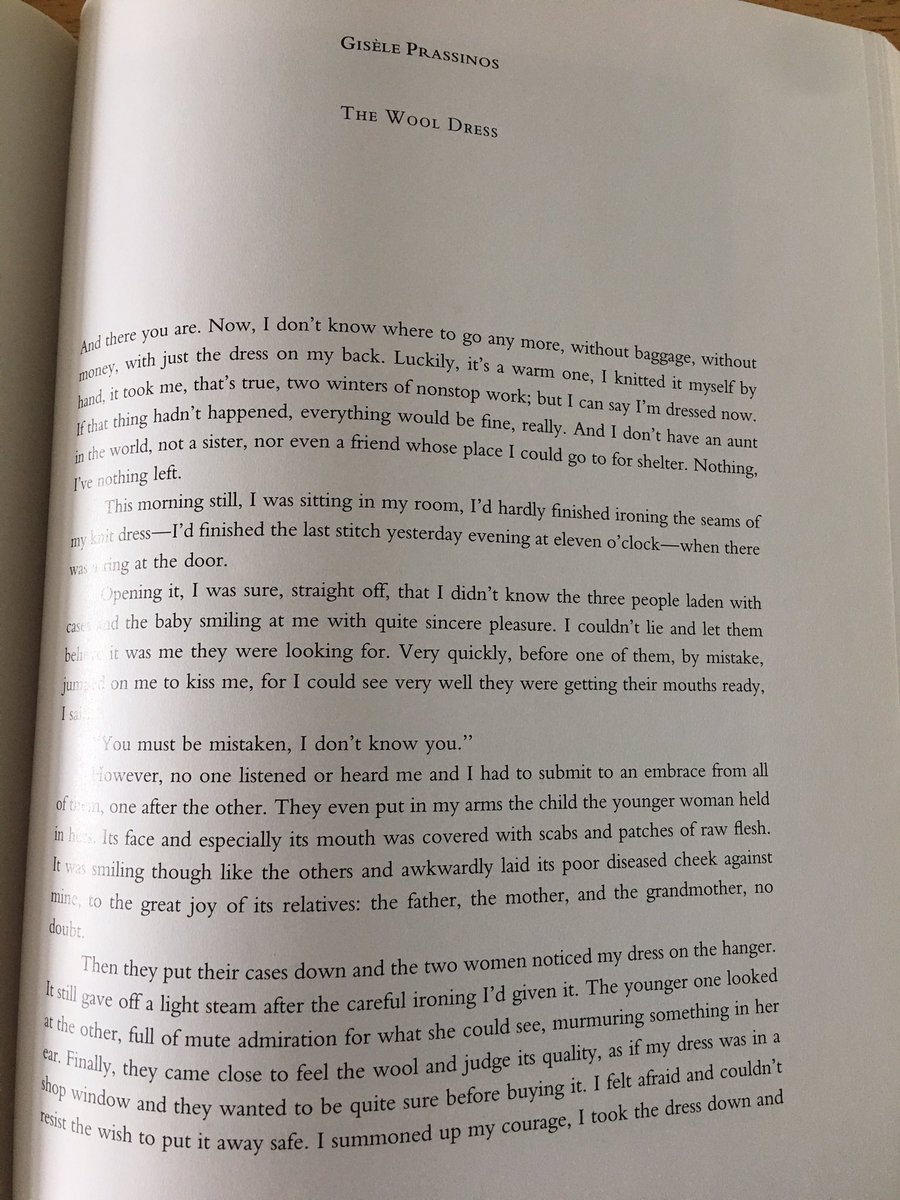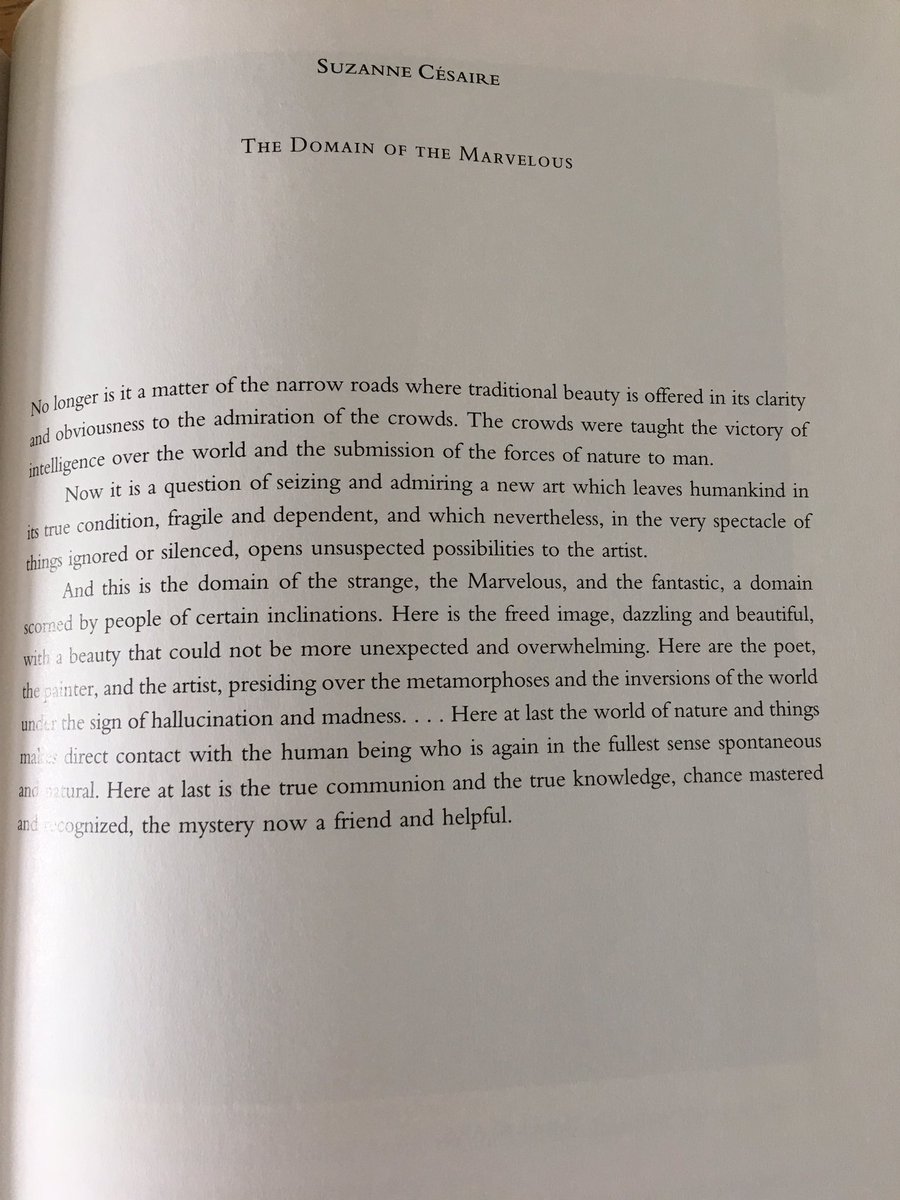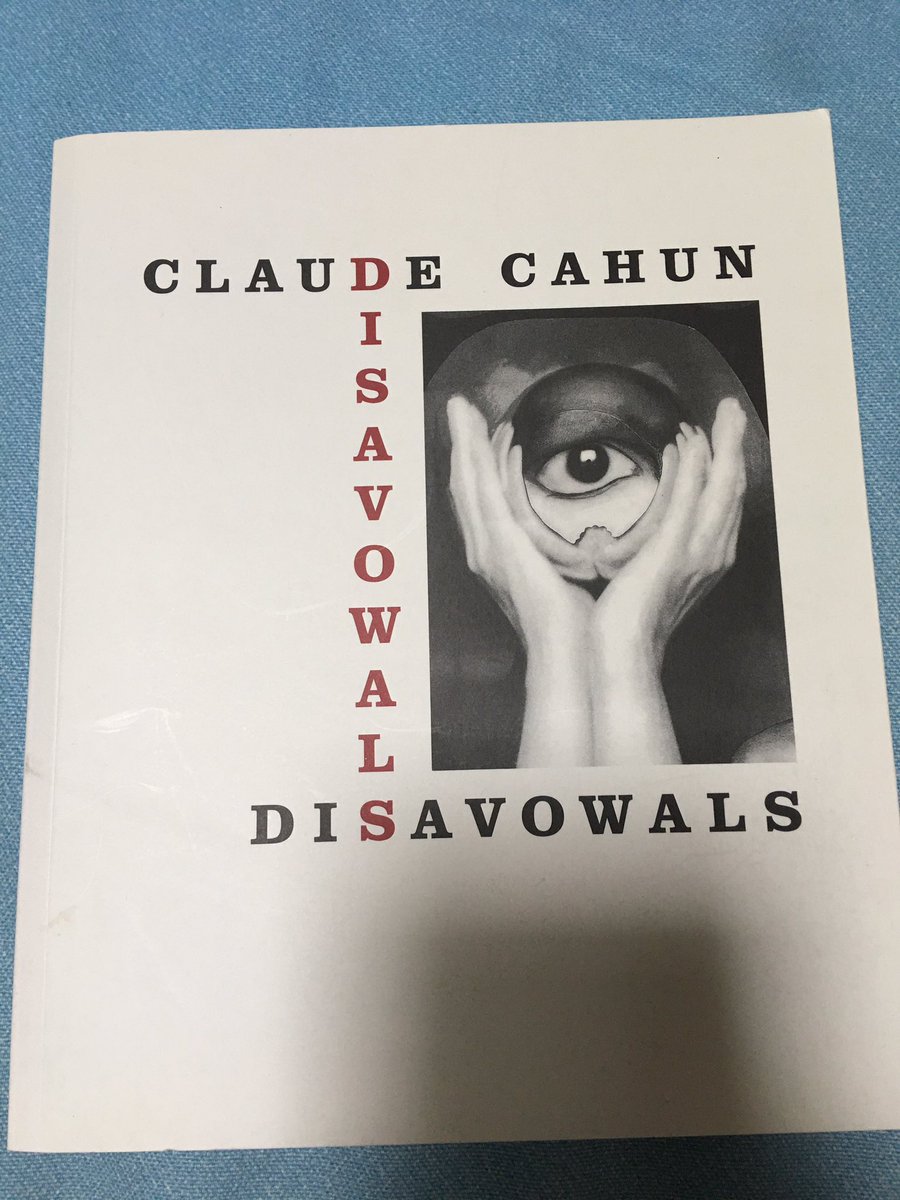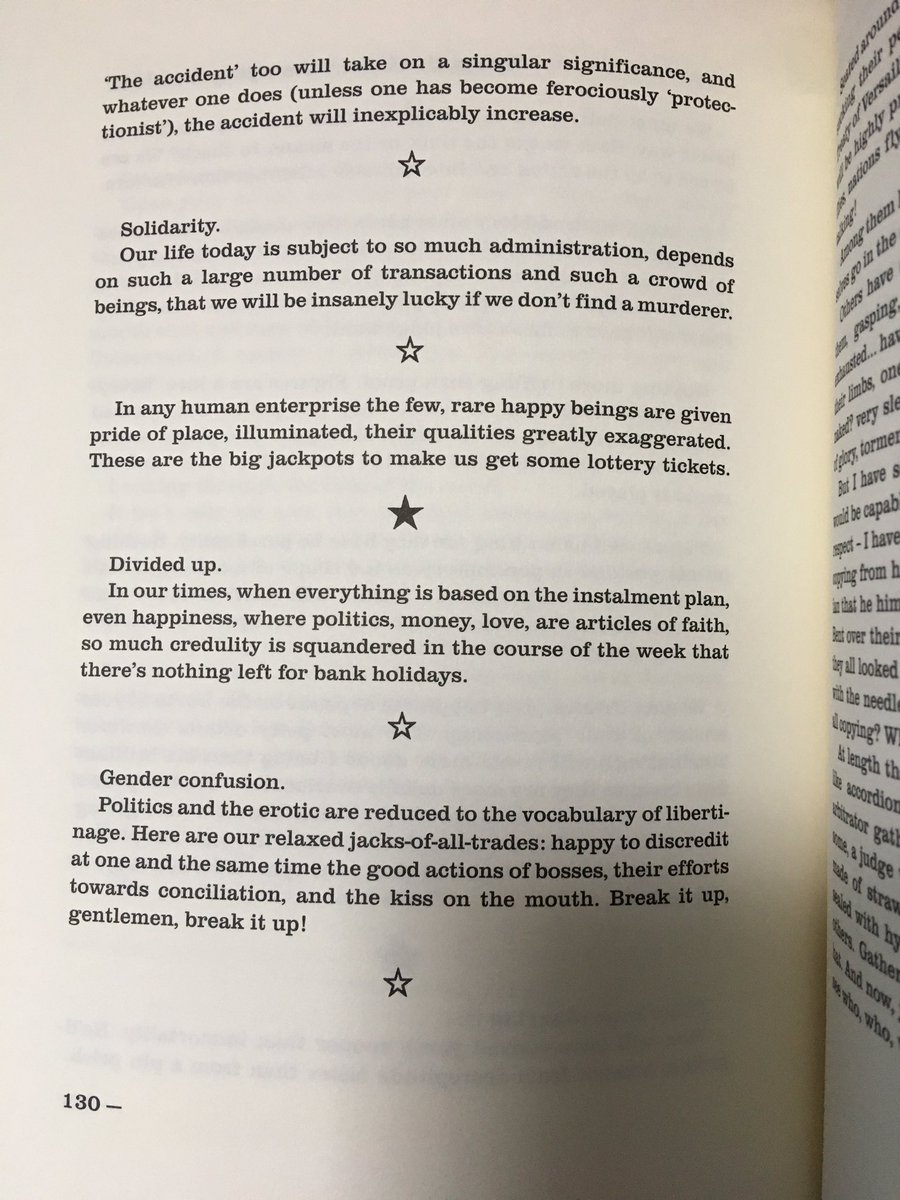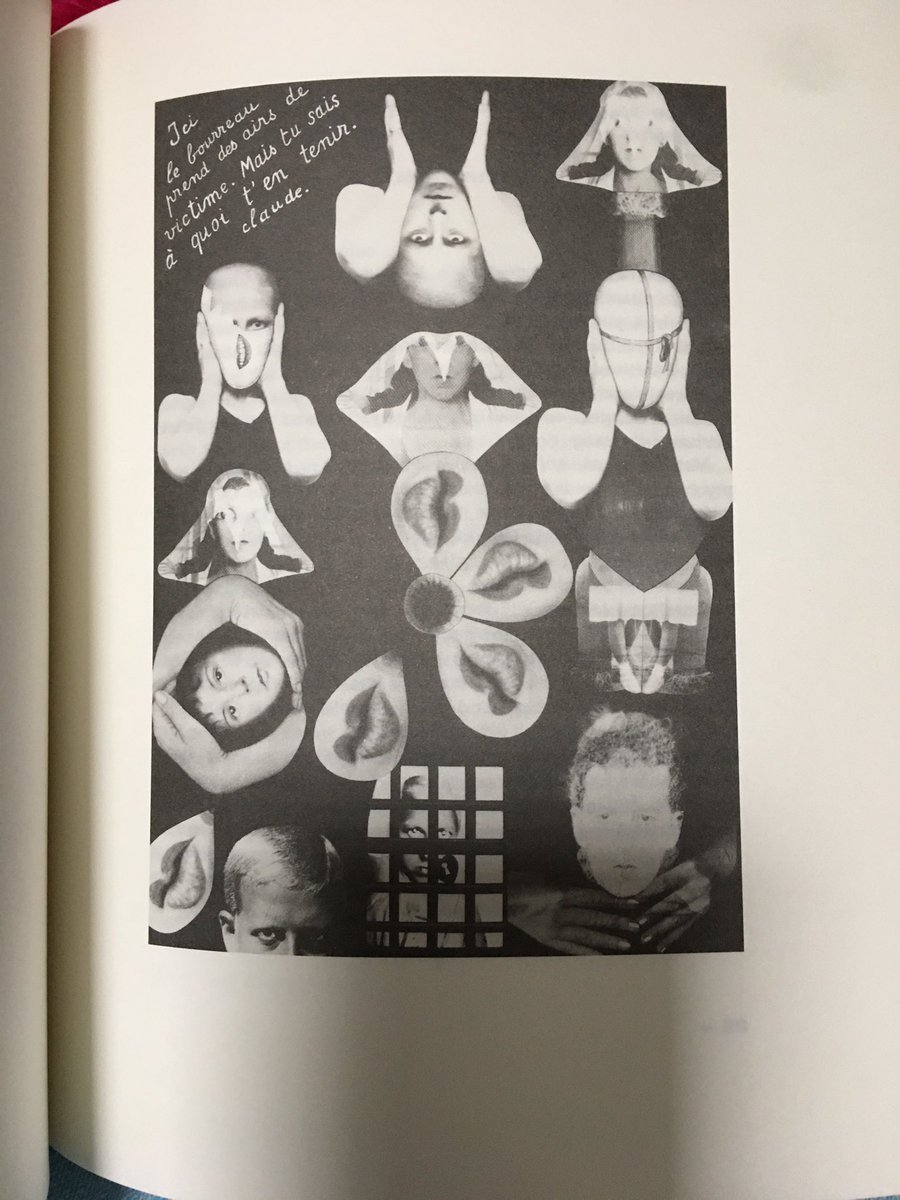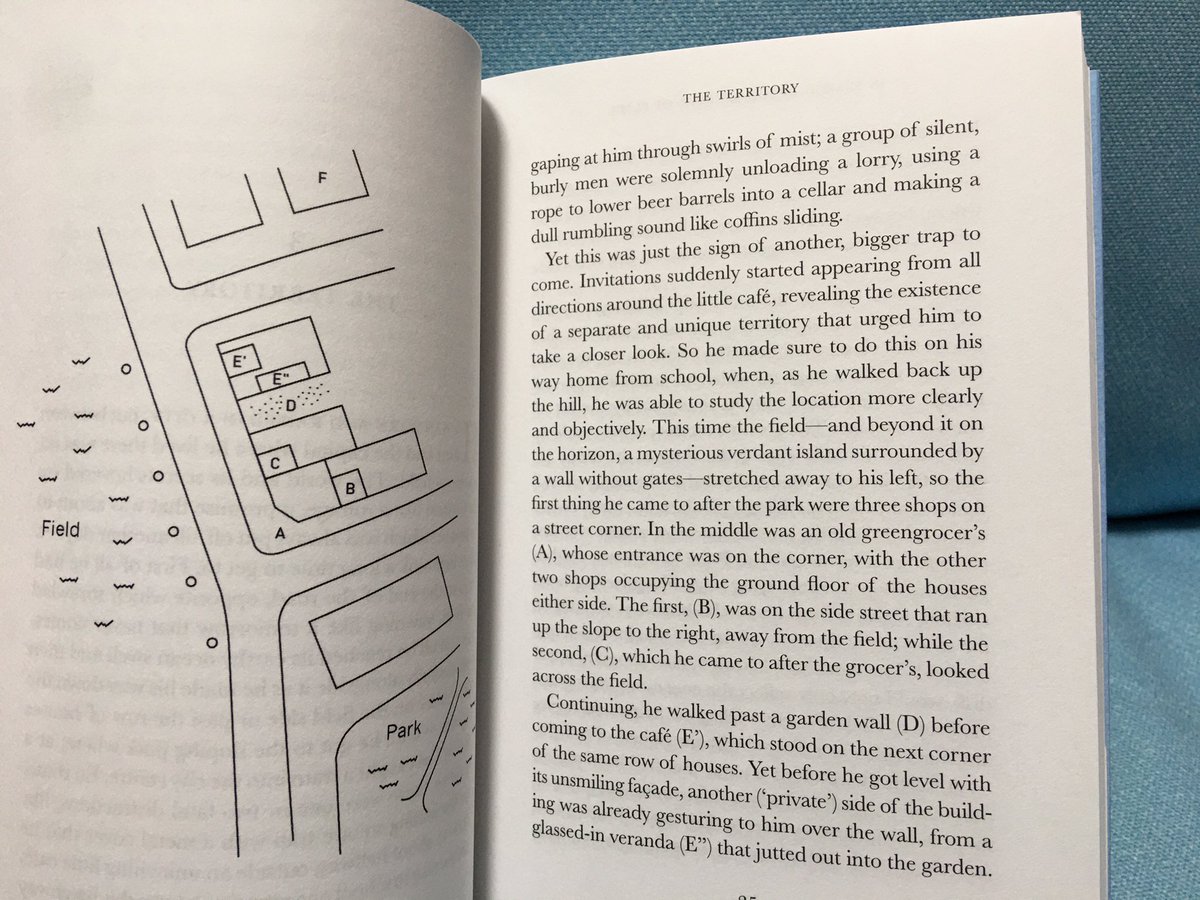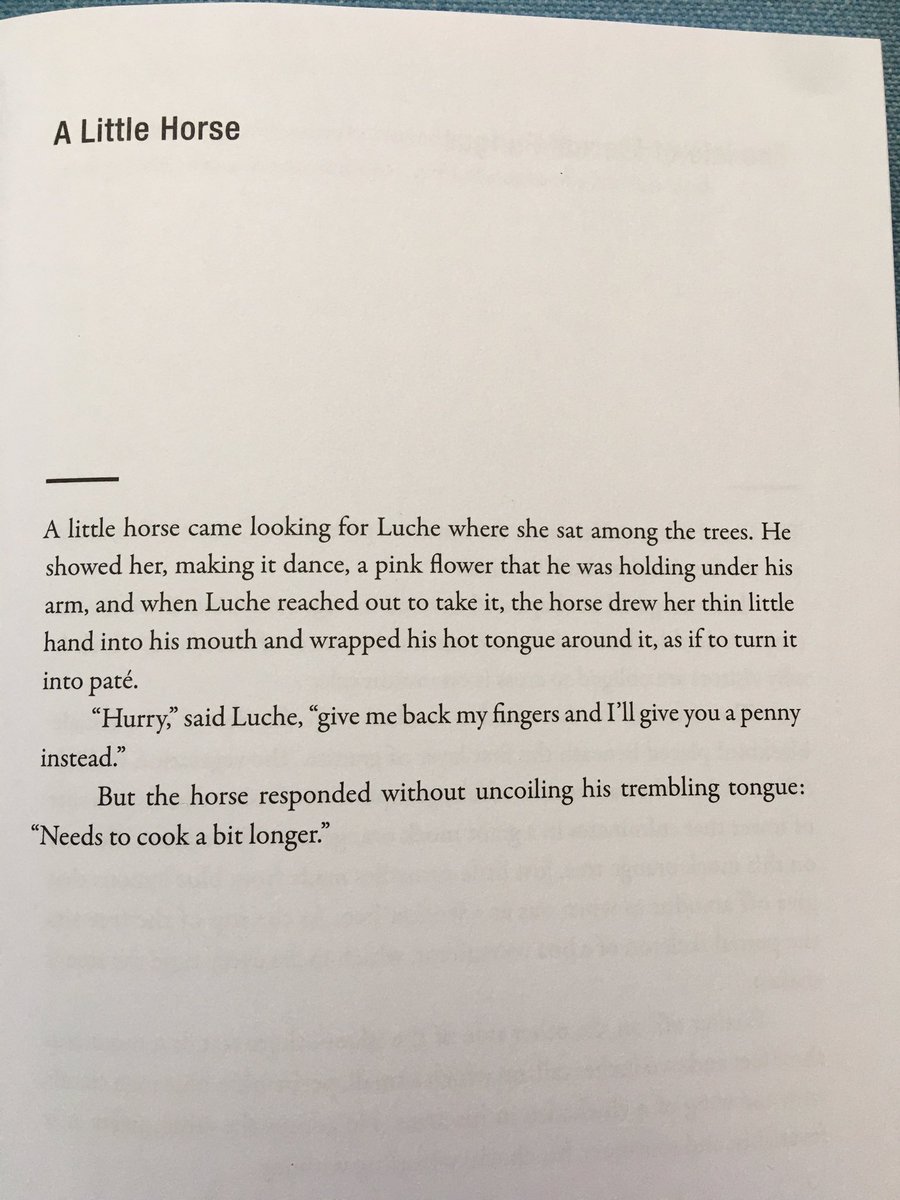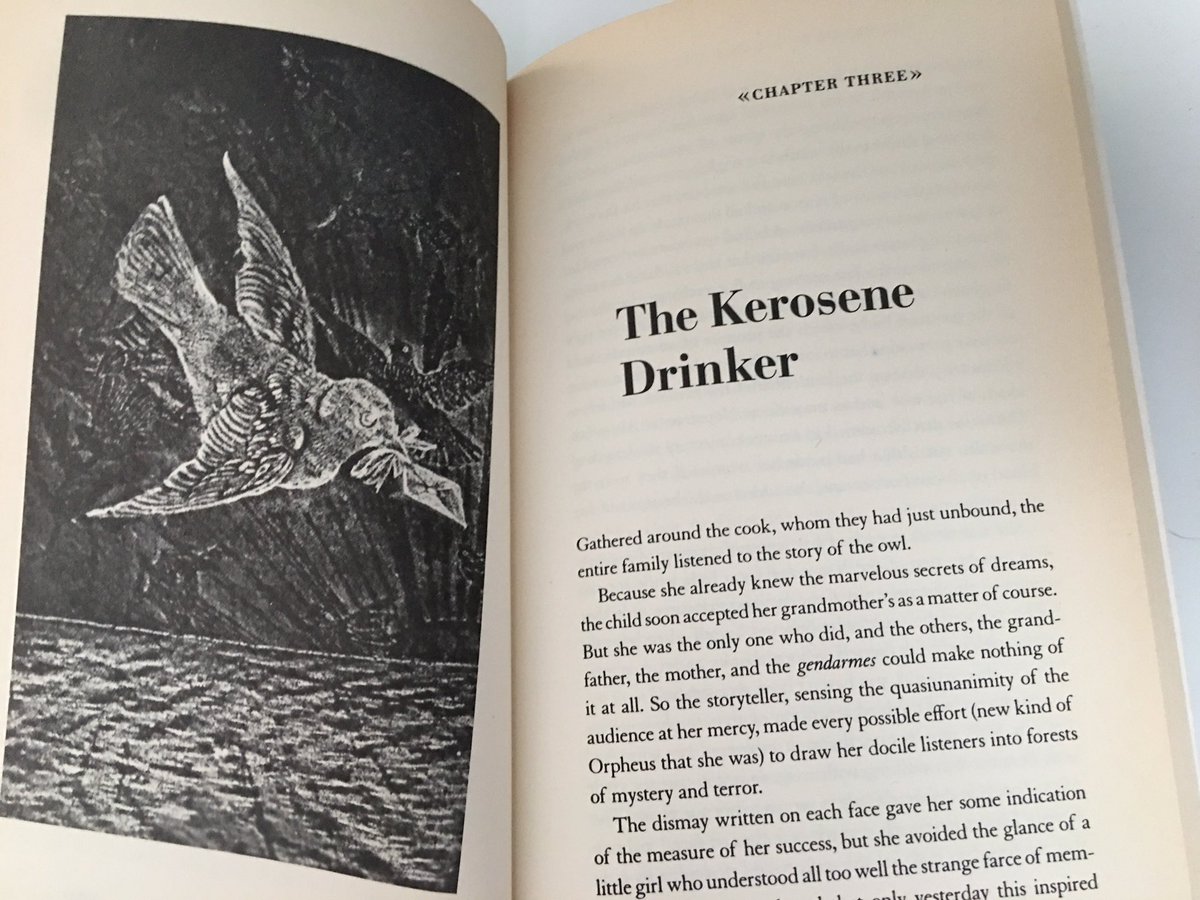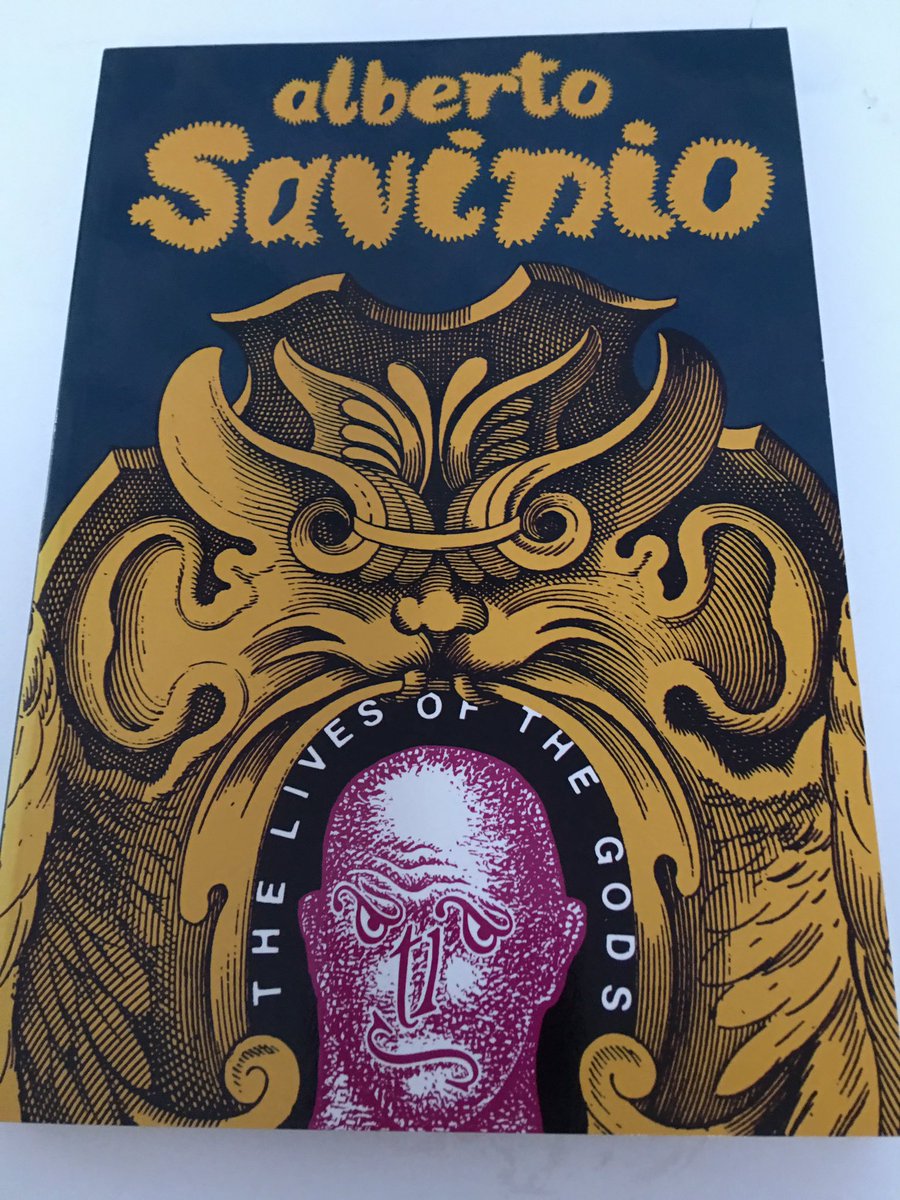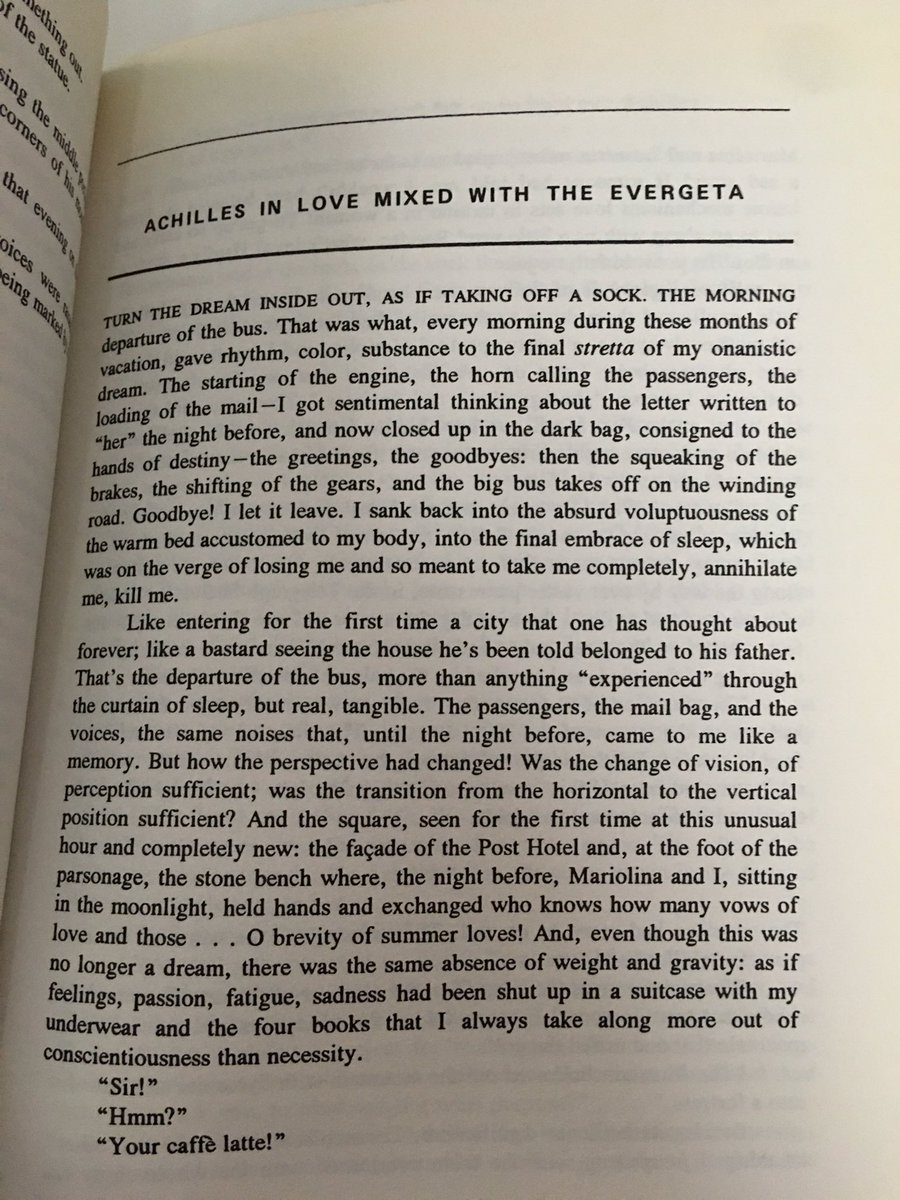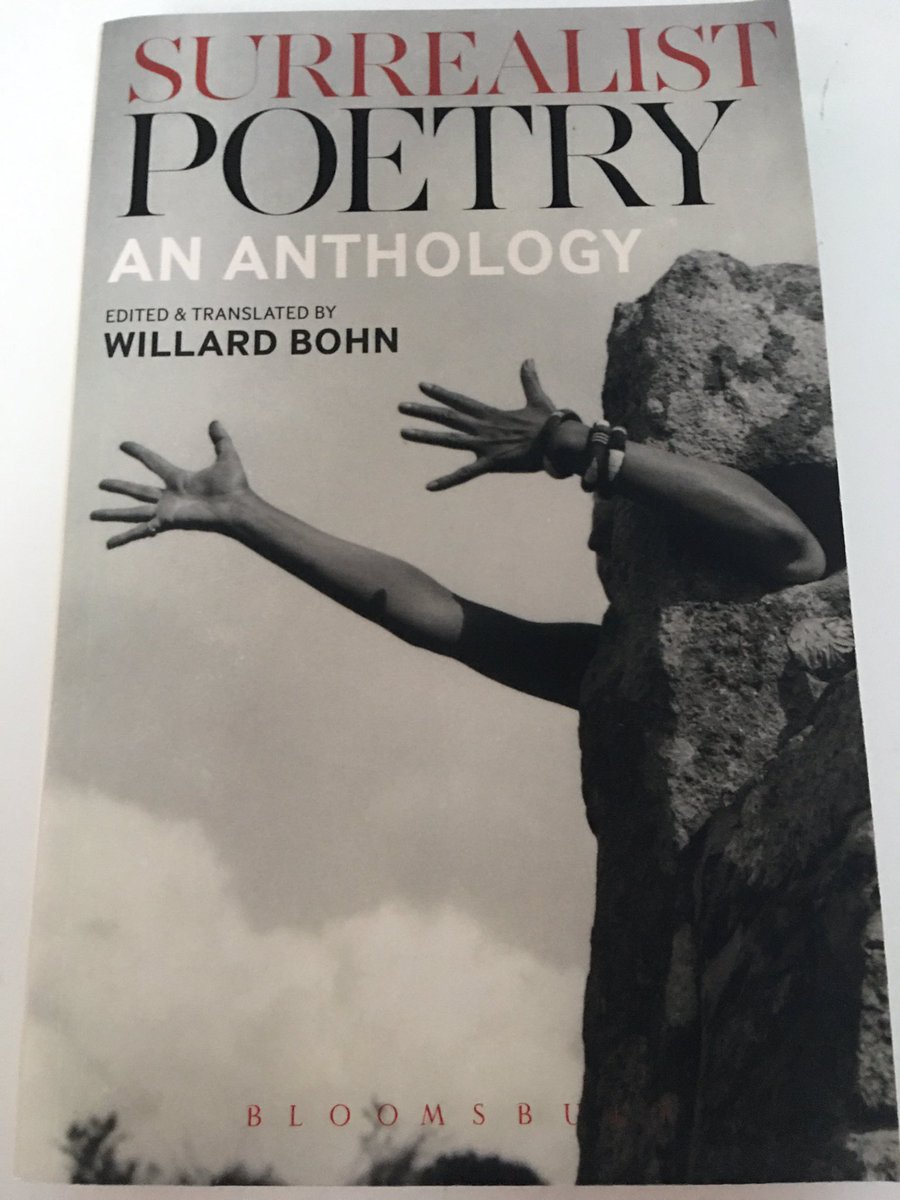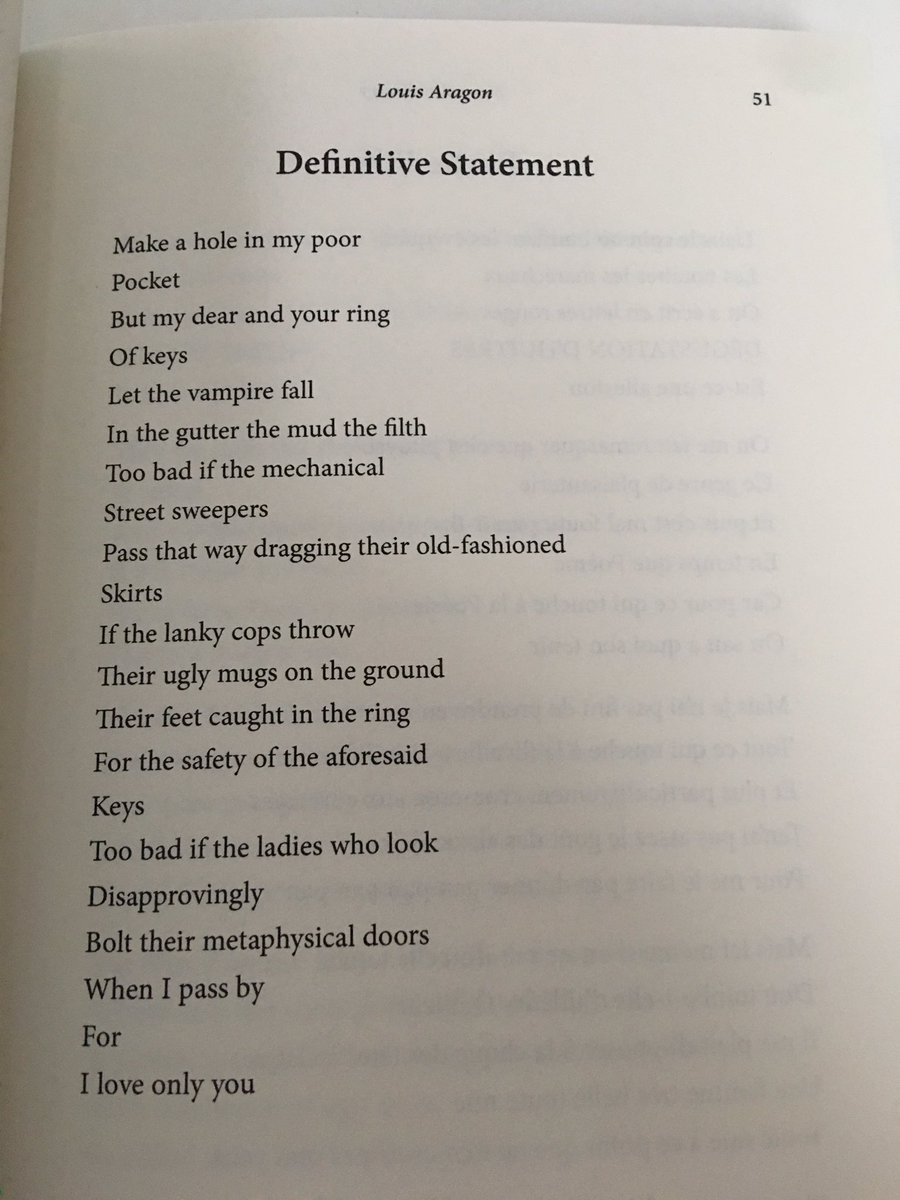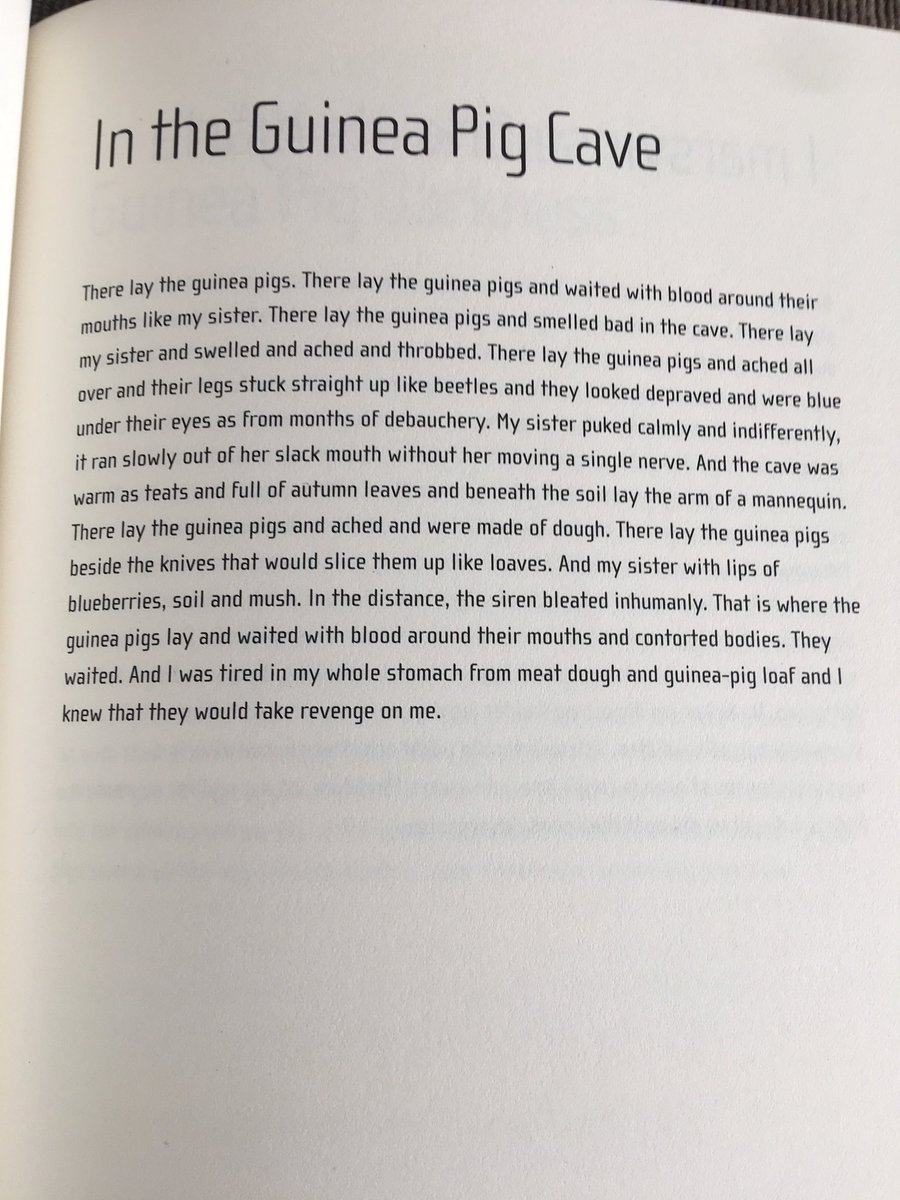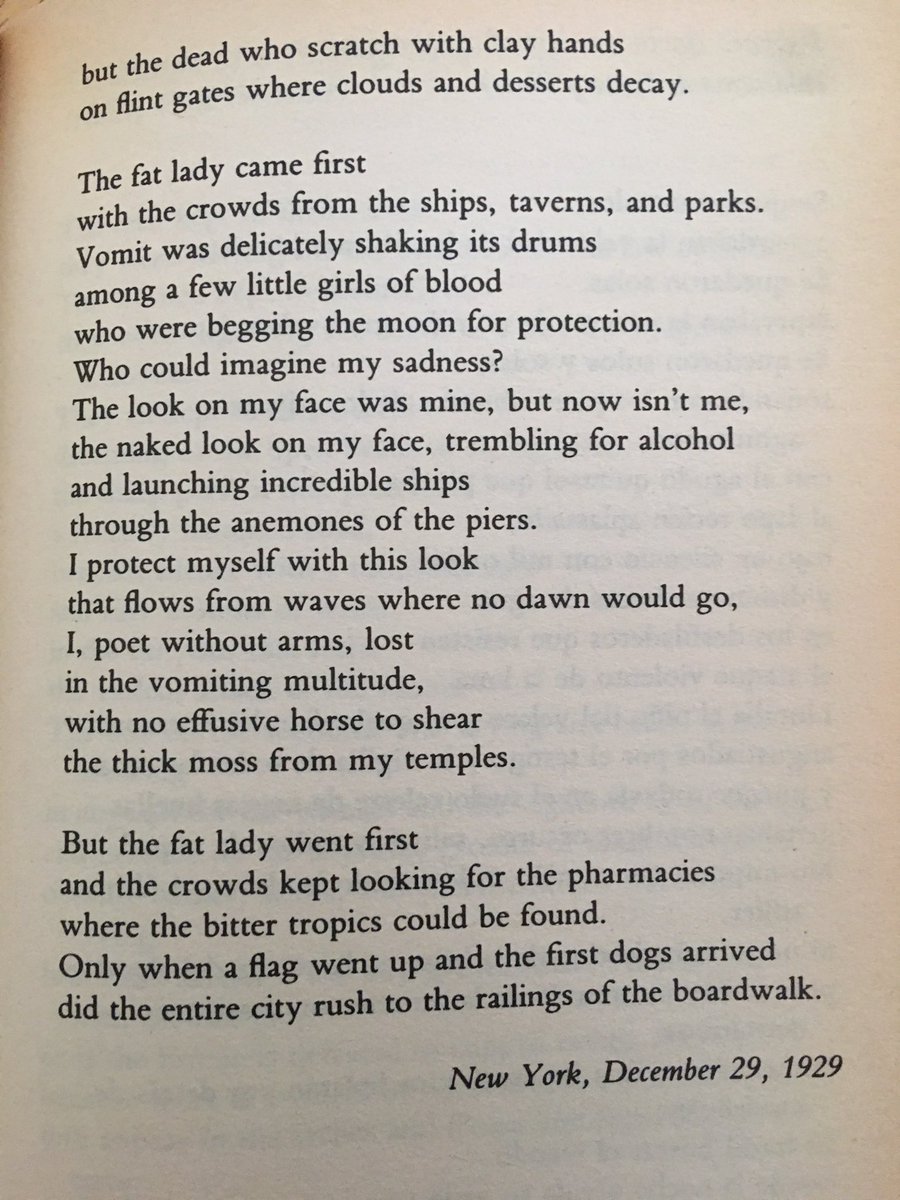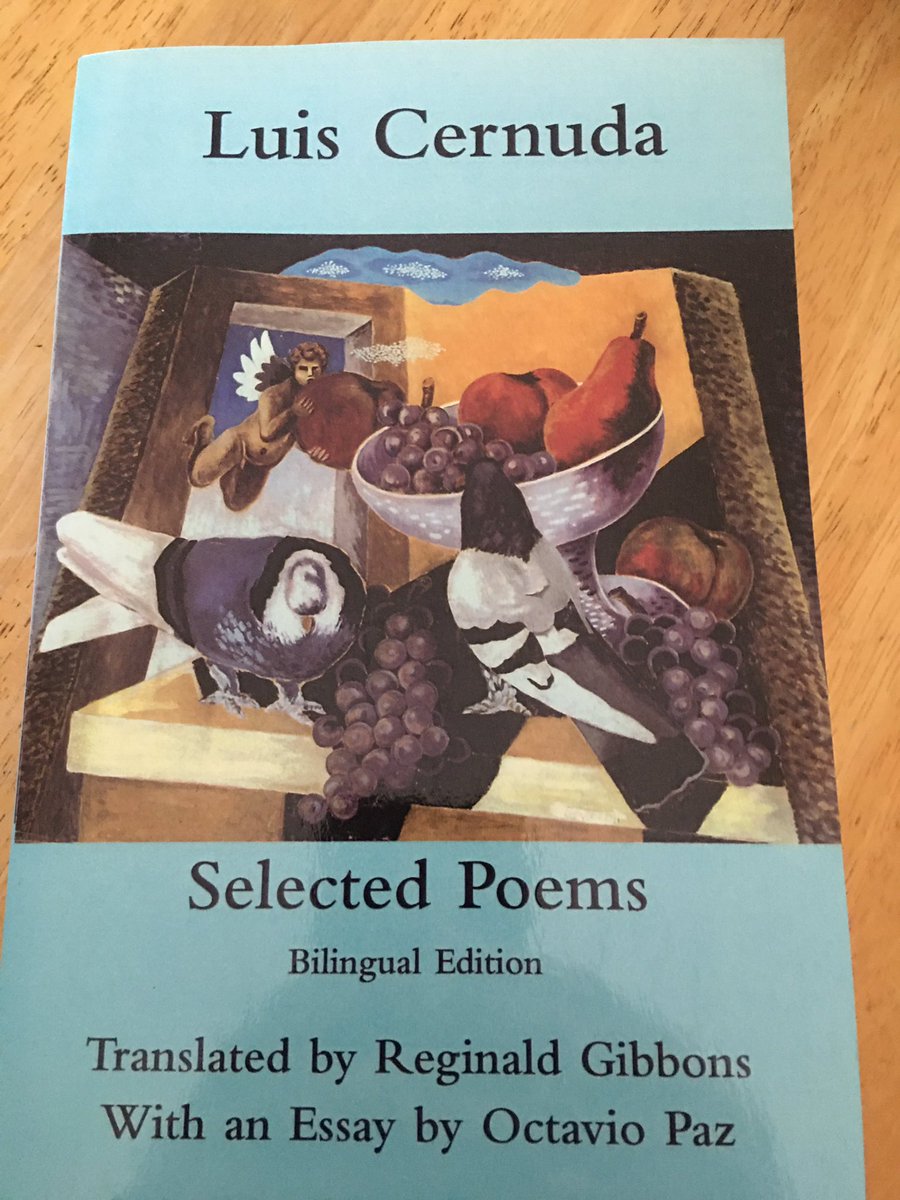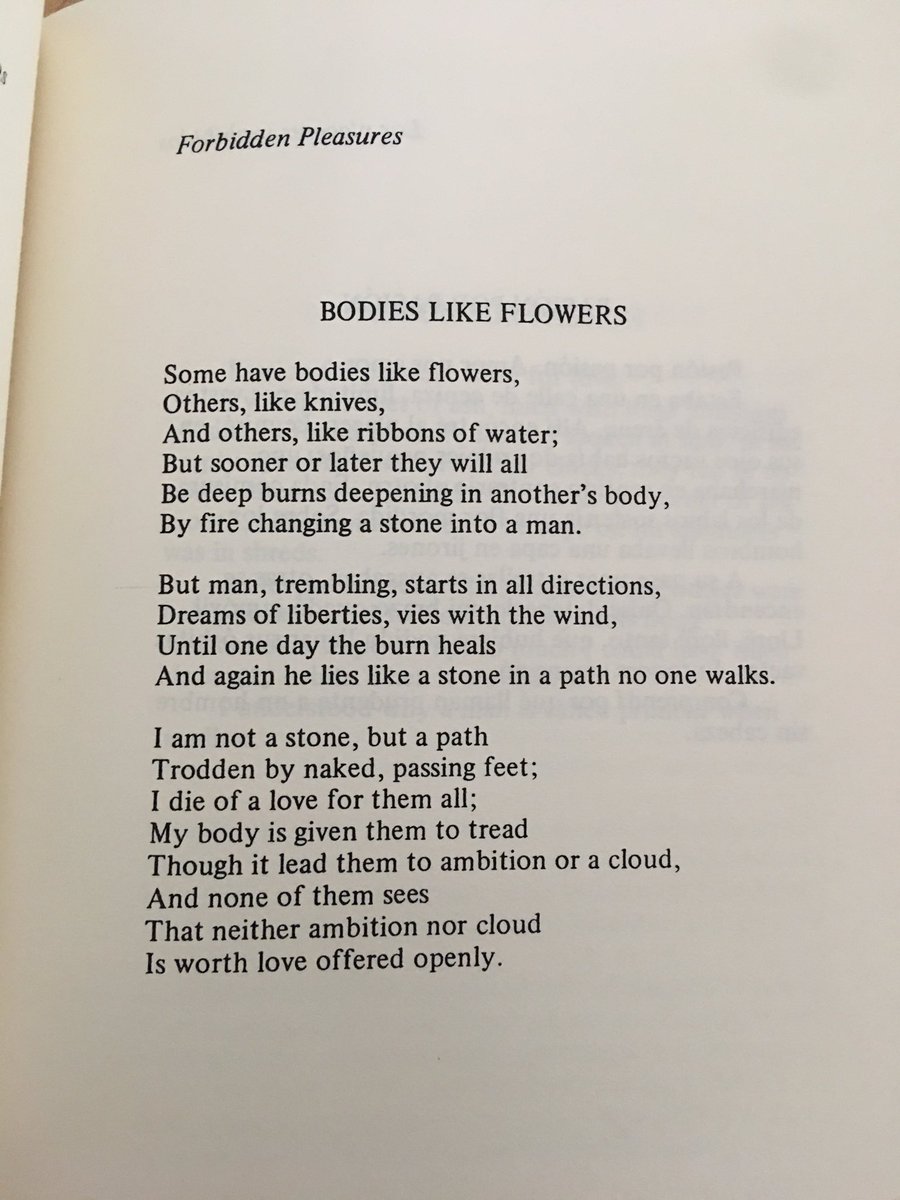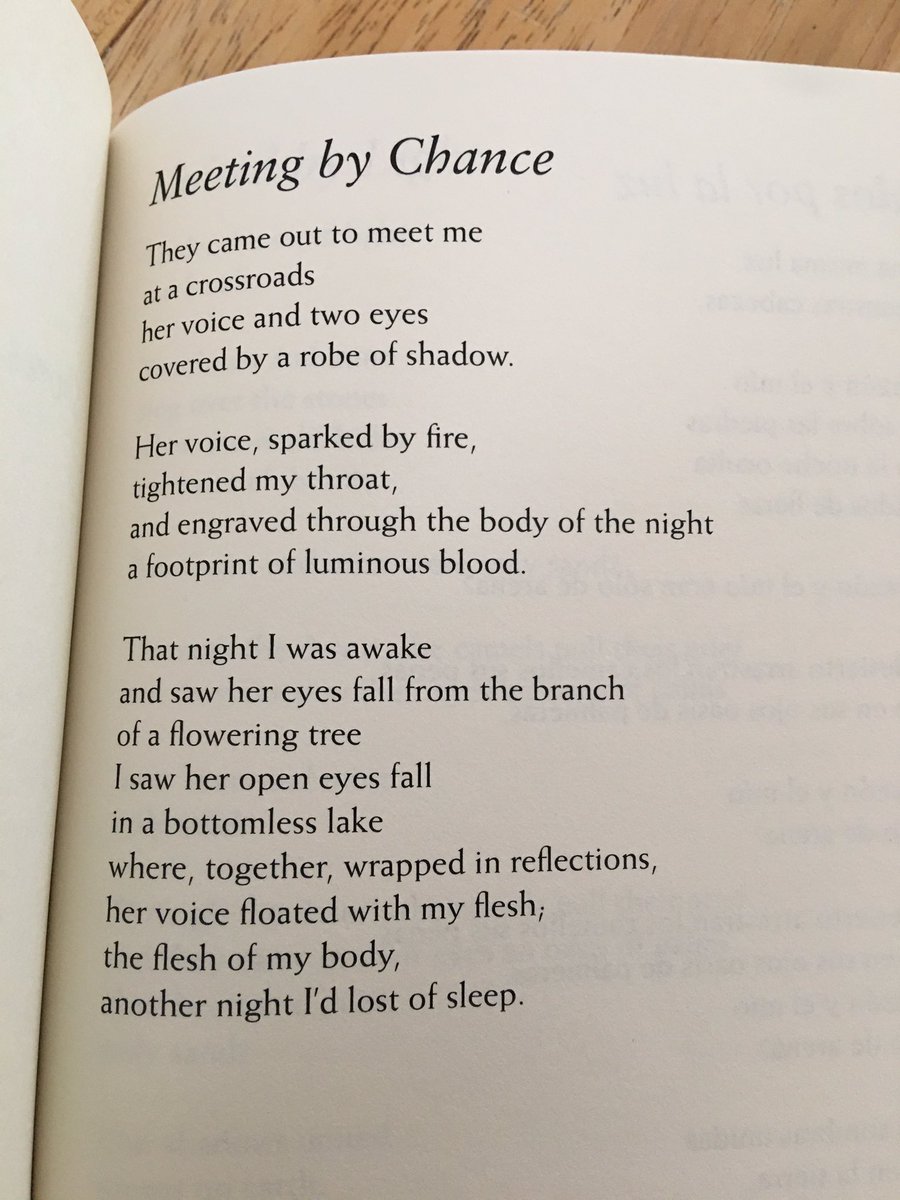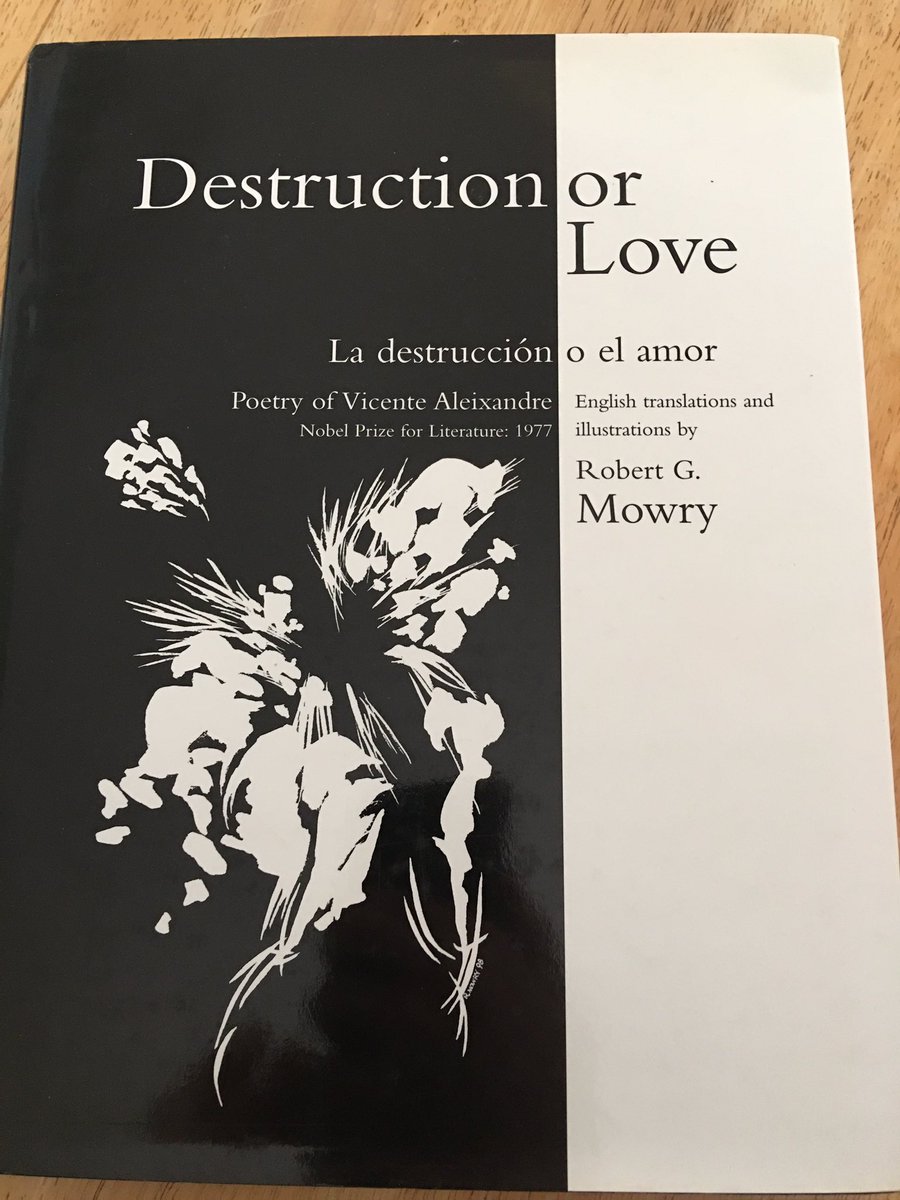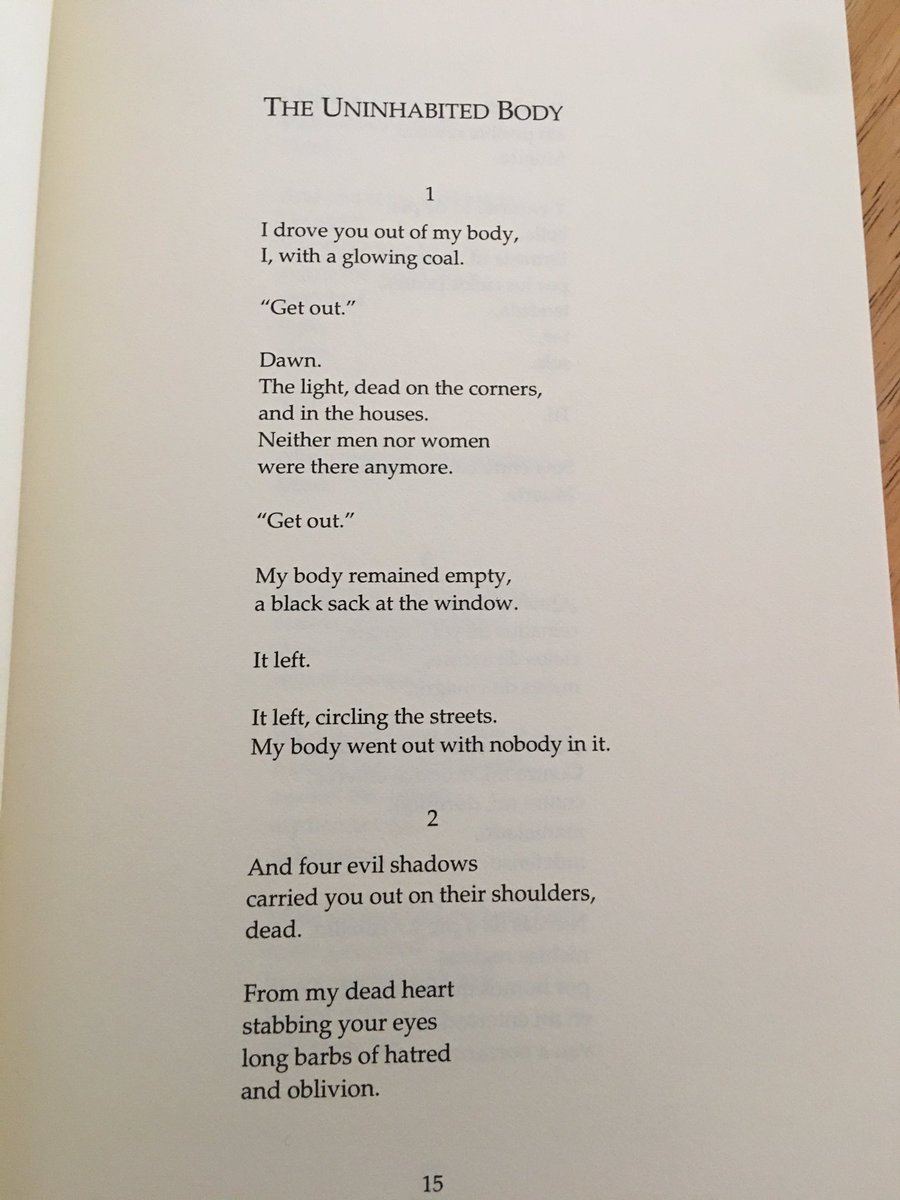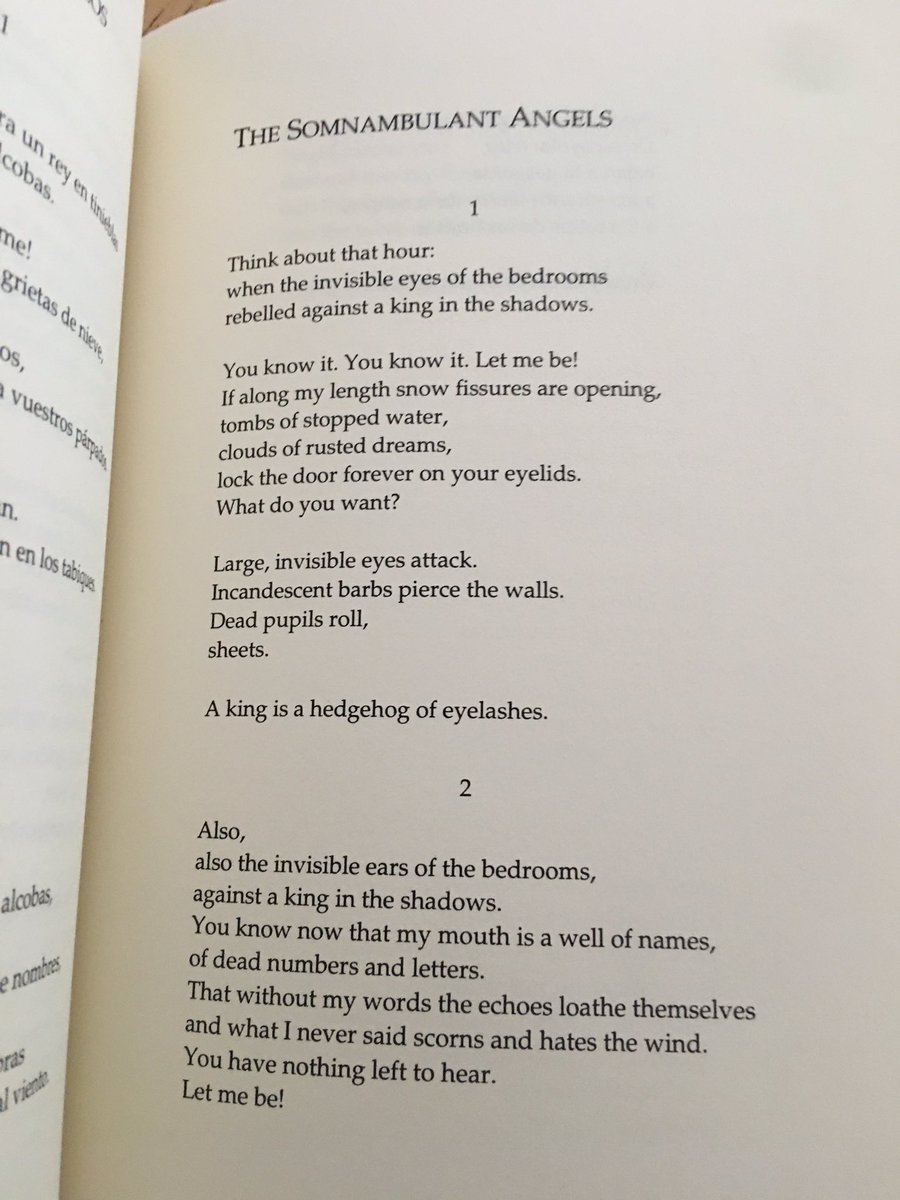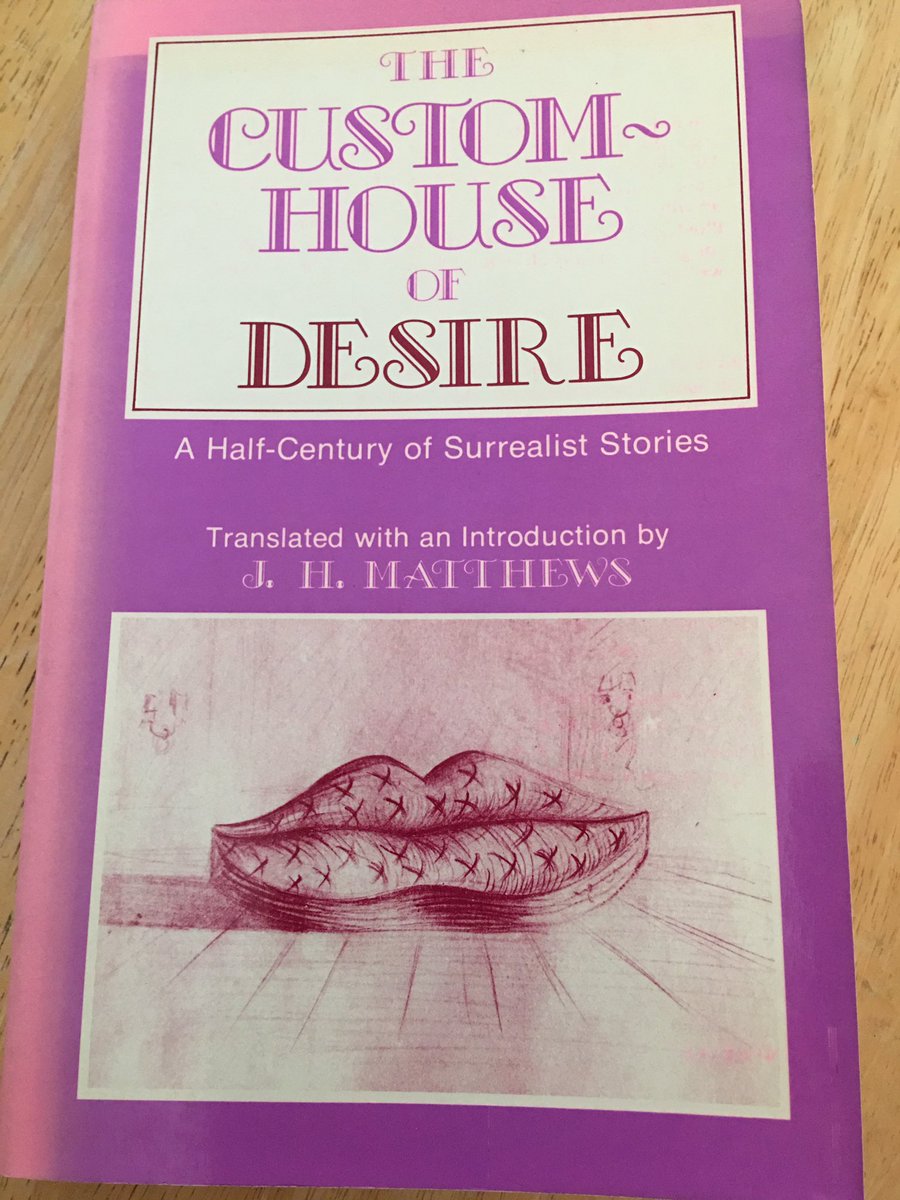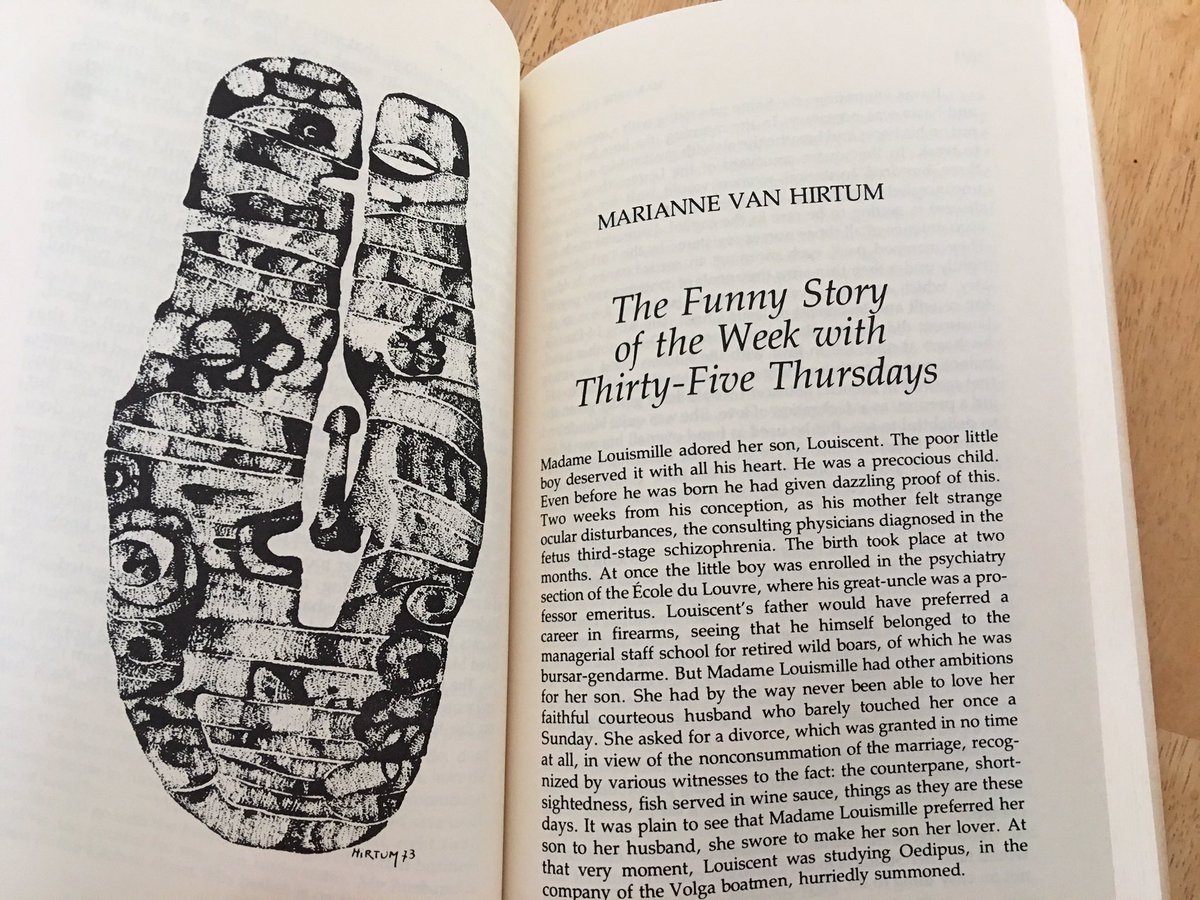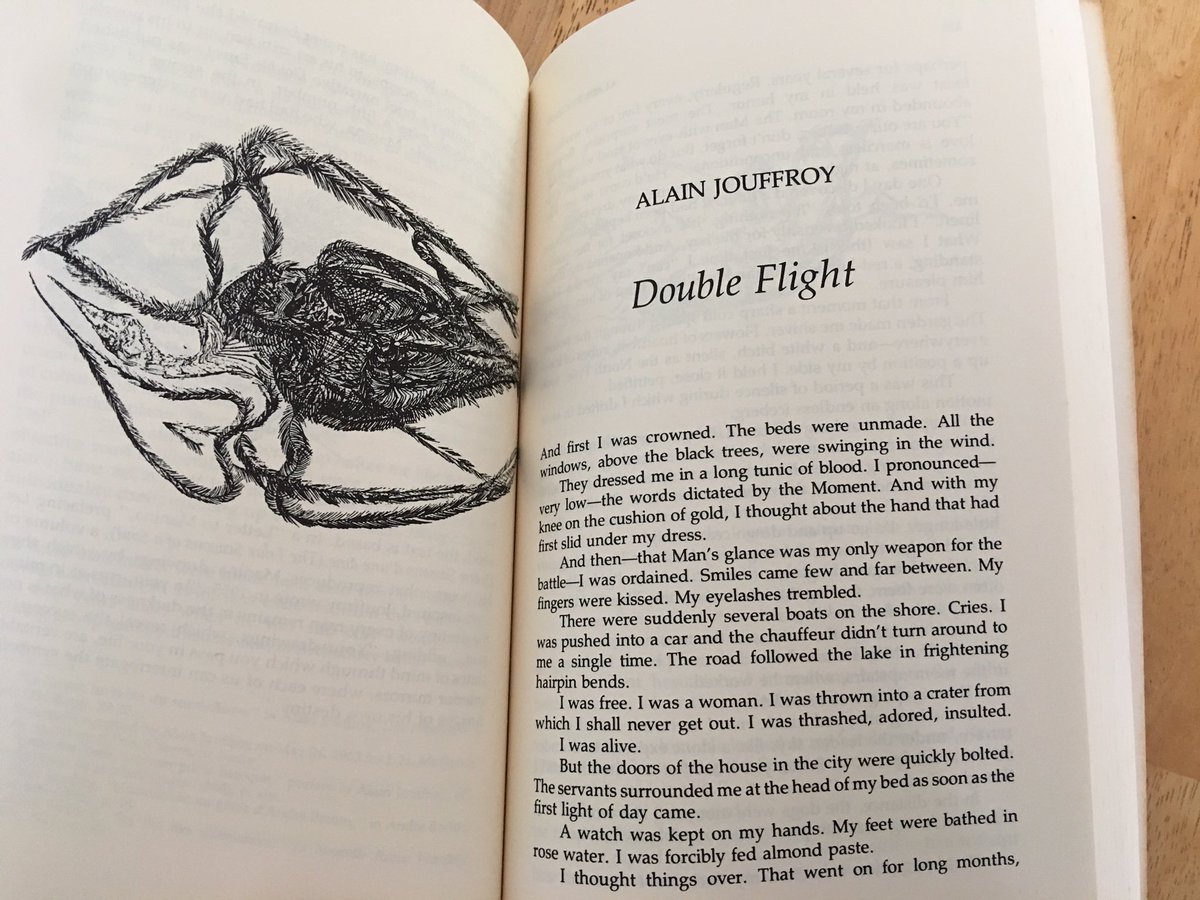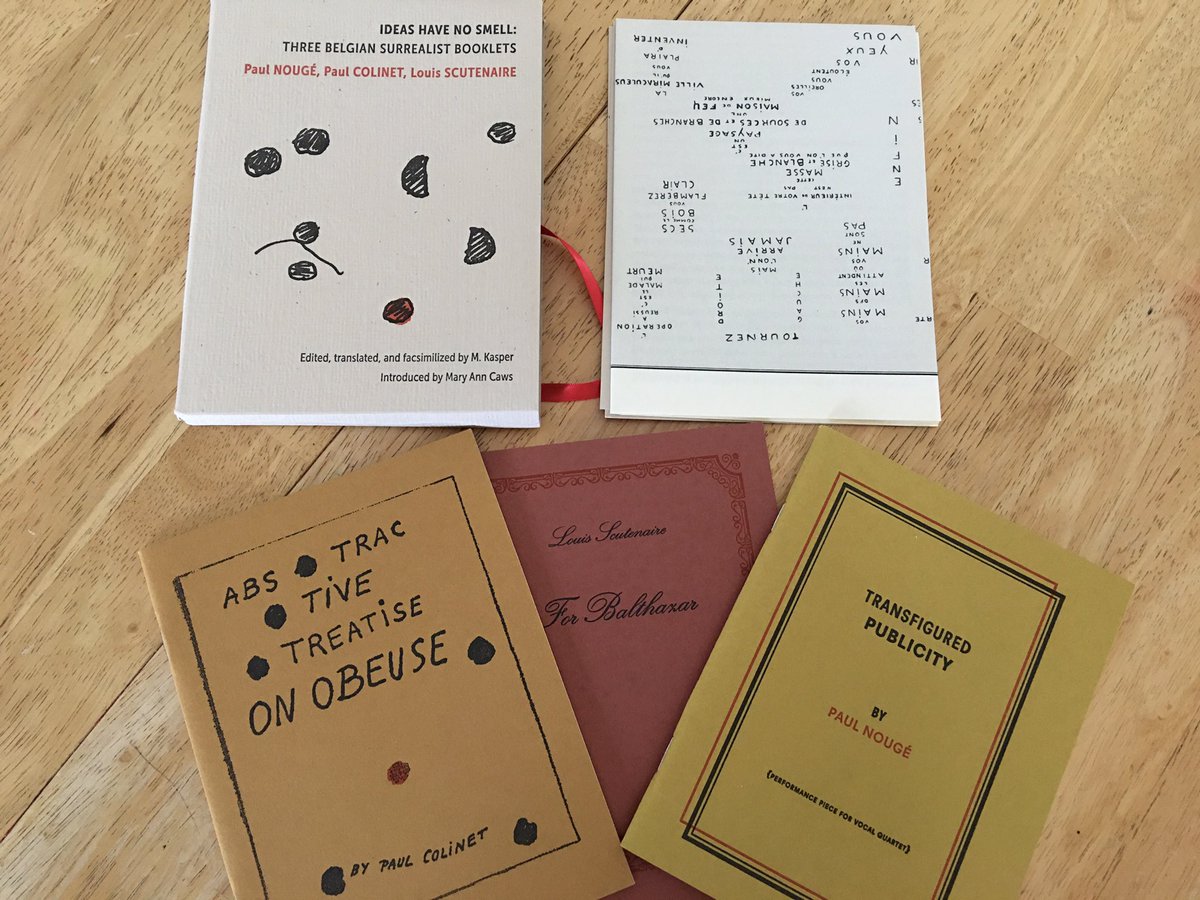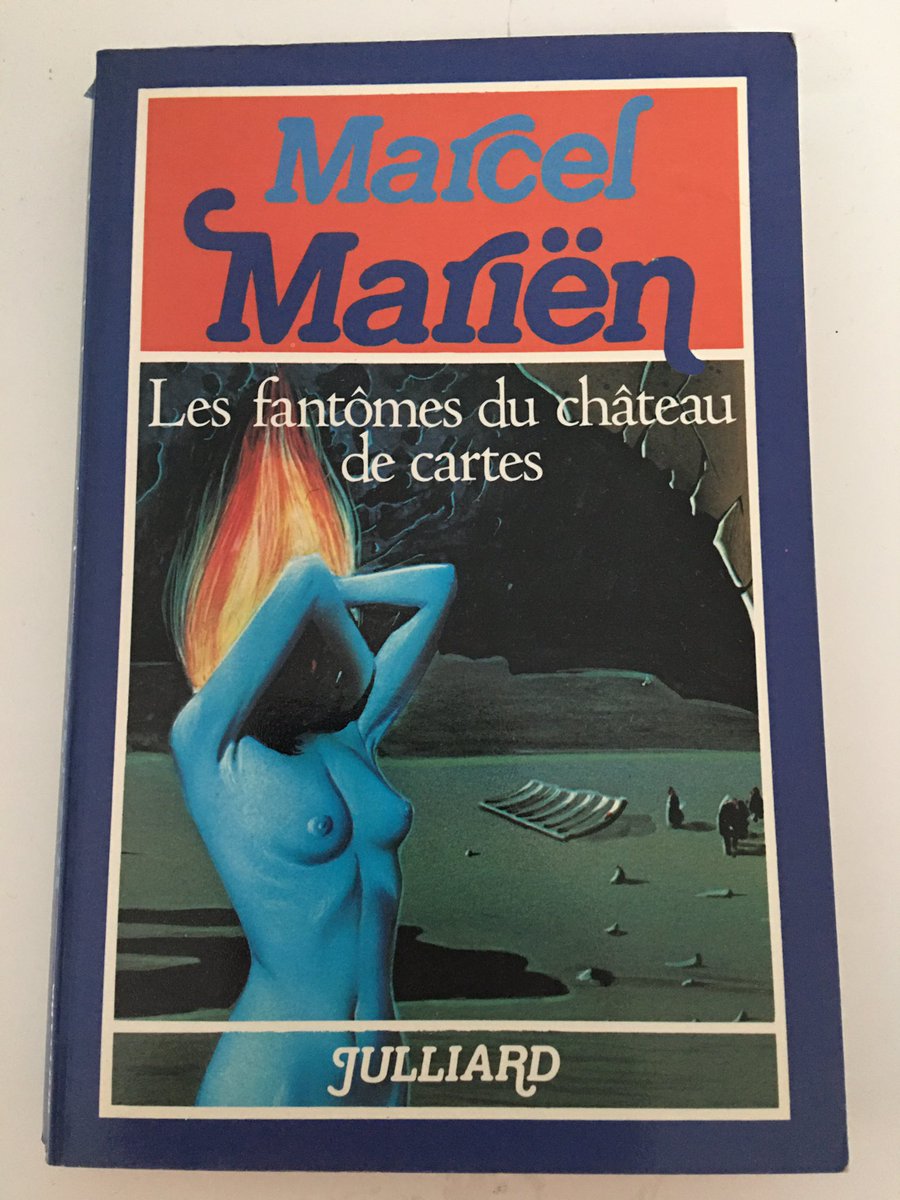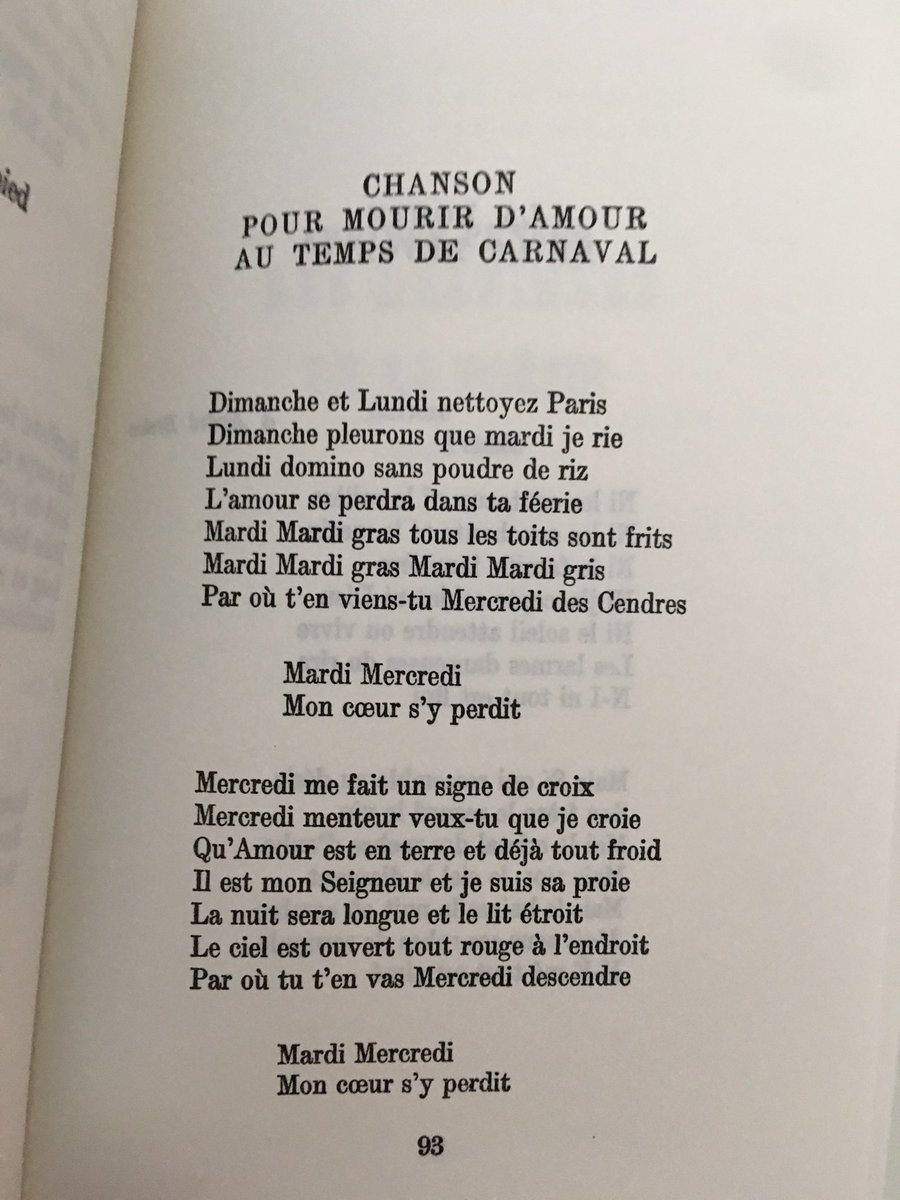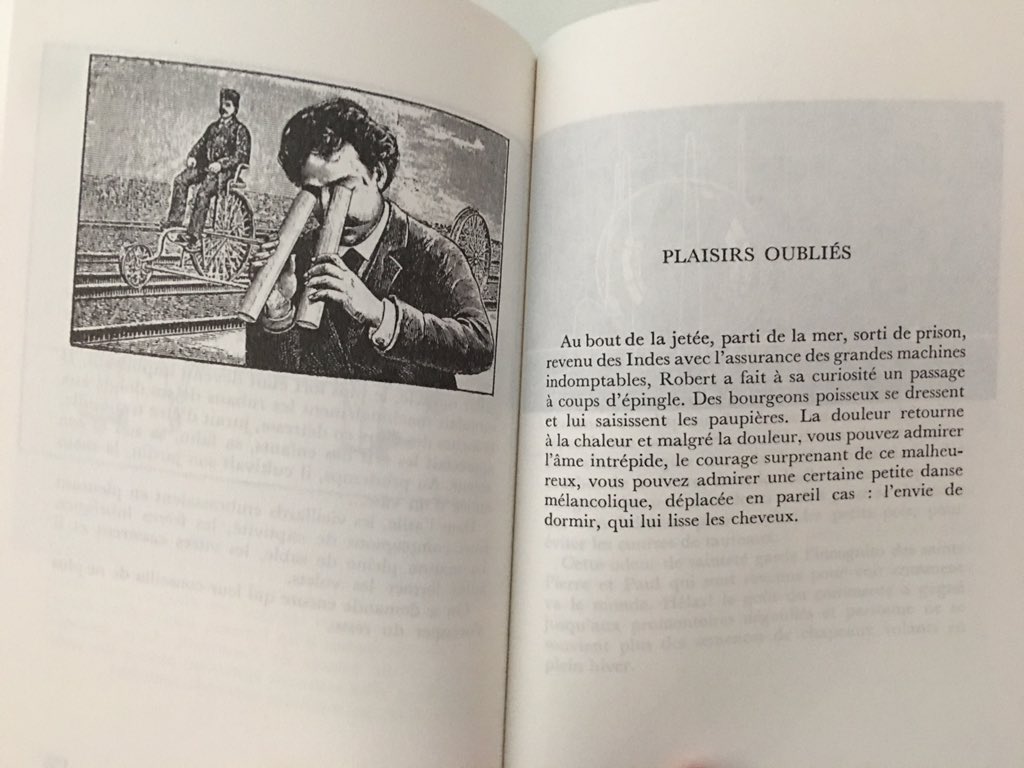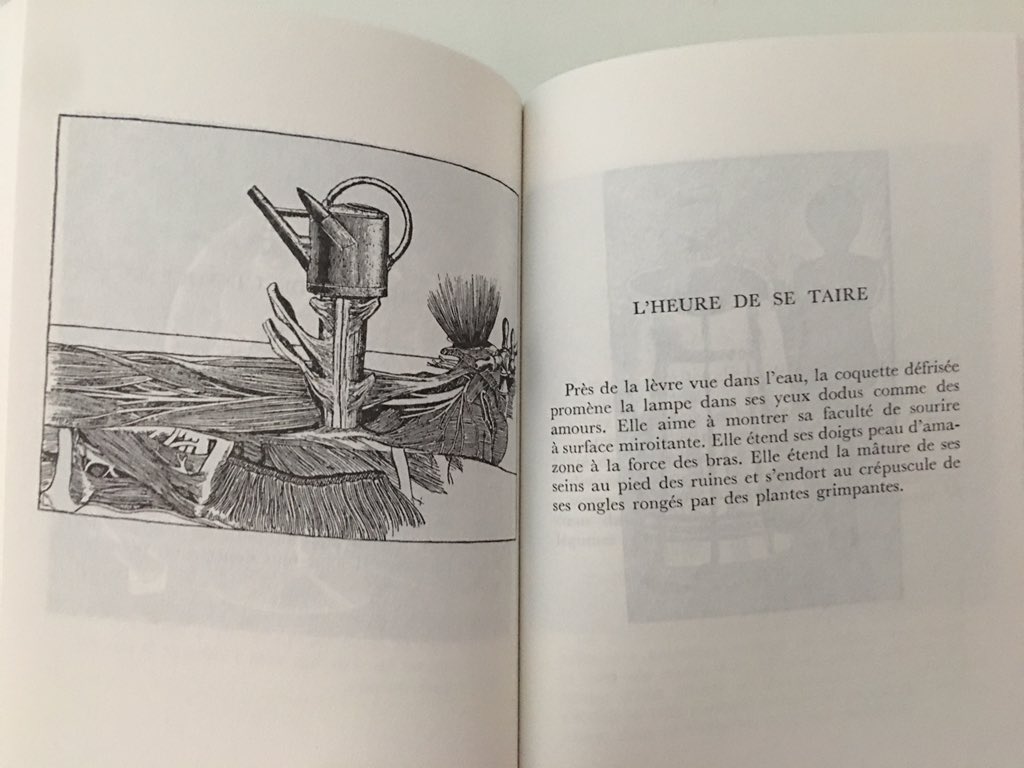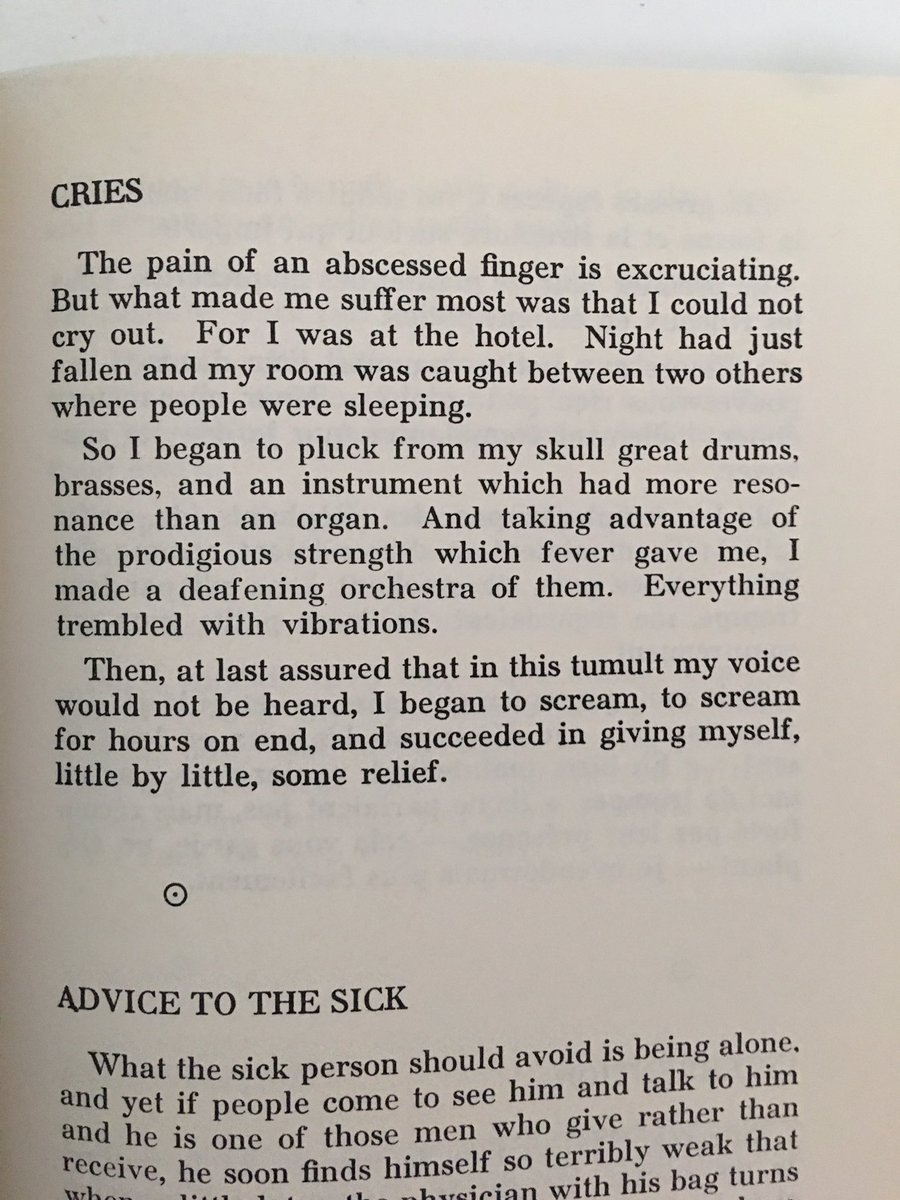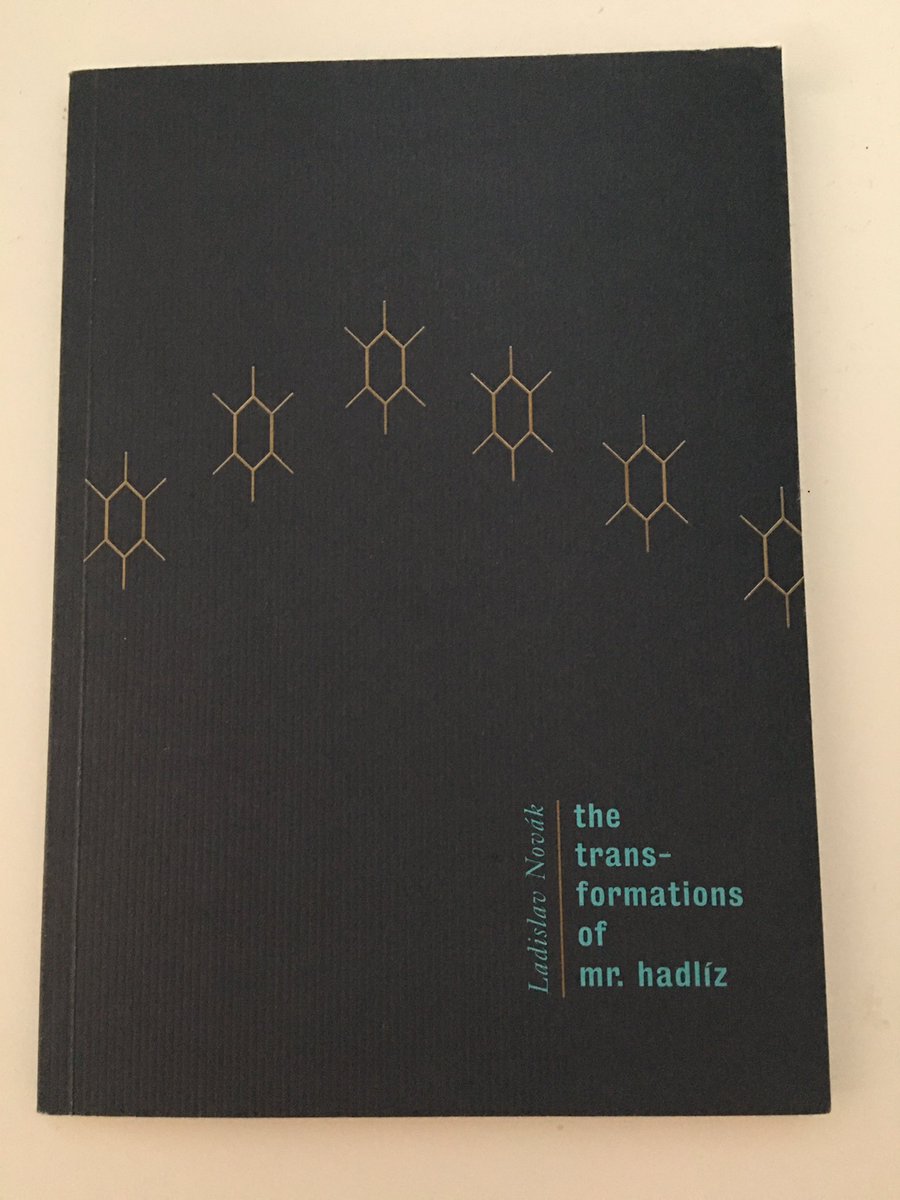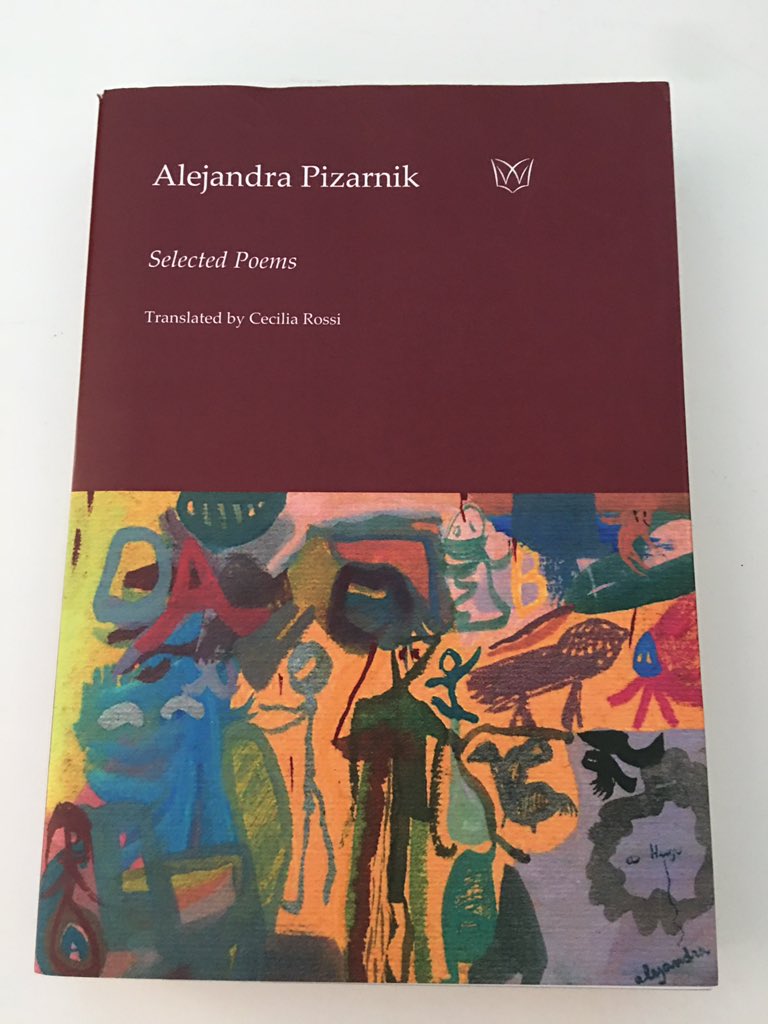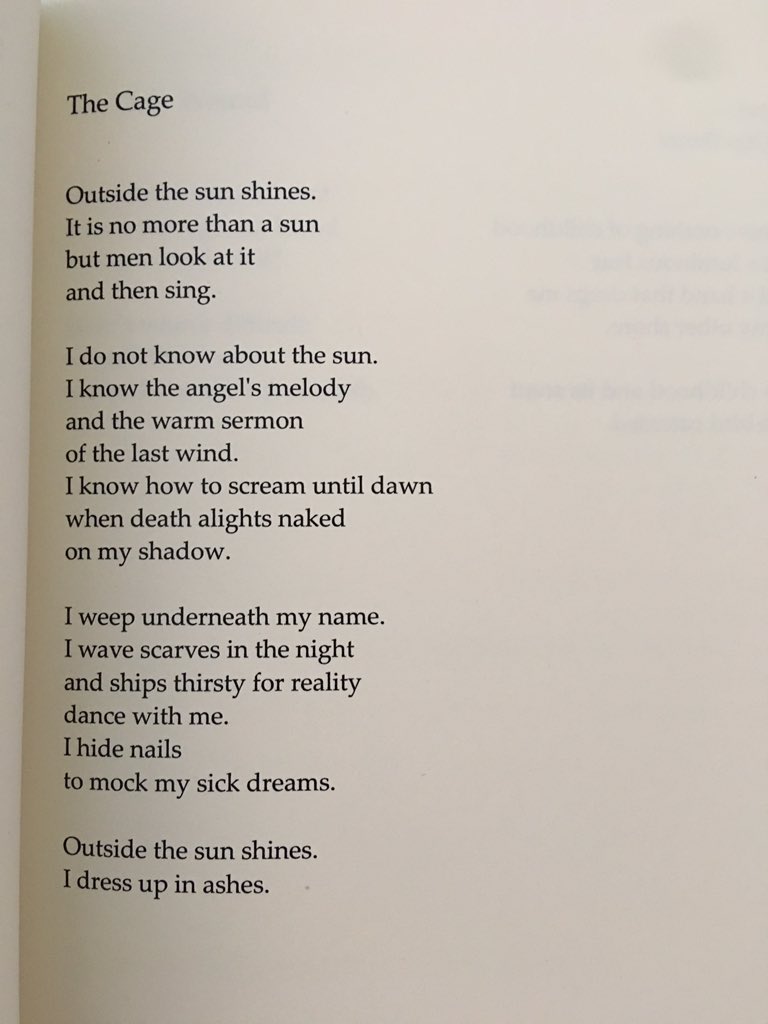Ever since I was a teenager I have been obsessed with the writings of the Surrealists. In this thread I’m going to share some thoughts on authors and books I particularly admire.
Rightly maligned as the pompous author of curiously underwhelming theoretical tests, André Breton was nevertheless a brilliant and daring poet. This bilingual edition provides a comprehensive survey of his work. In his gaze, the worlds of dream & waking reality are synthesised.
Joyce Mansour brought new energy to post-WW2 Surrealism. Her poetry often centres on her own body, as a disorientating landscape of signs and meanings.
Czech Surrealist Jindrich Heisler was a highly original poet and painter. His book From the Strongholds of Sleep is one of the most stimulating books of visual poetry in any language.
Collaboration was a key element of the Surrealist enterprise. Paul Eluard wrote some powerful prose poems to accompany Hans Bellmer’s disquieting Doll photographs.
The incendiary poetry of Aimé Césaire demonstrated that a political position could be expressed through surrealist means. His poems are elemental, complex, a riot of images.
There are some excellent anthologies of Surrealist writing out there. This one showcases British writers. Surrealism in the U.K. was more than just an imitation of the French variety.
The fiction of André Pieyre de Mandiargues combined traditionally novelistic storytelling with plots and scenes reminiscent of Dalí’s paintings in their oneiric logic and hallucinatory attention to detail.
Michel Leiris’s Aurora gives the objects and events of dreams a hard edge. No soft-focus musings here. A demanding, exhilarating novel, experimental in the true sense of the word.
This massive, wide-ranging anthology is one of the best I’ve read. Many of the authors are under-represented, in terms of books still in print.
Be warned: I have barely begun! Lots more recommendations to come.
The work of Belgian Surrealist Paul Nougé is pitifully under-represented in English translation. I recommend his photo-essay The Subversion of Images. Belgian Surrealism had its own character, distinct from the more flamboyant Parisian variety.
Benjamin Péret’s poetry and fiction best exemplifies Breton’s “pure psychic automatism” at its most compelling. There’s an aggressive, subversive, joyful energy in all his work, lots of which is in print. This book was the first of his I read, and still in many ways my favourite.
Octavio Paz was one of the most significant poets of the last century. He participated in Surrealist activities and much of his work is informed by Surrealism, not as a style but as a spirit.
Leonora Carrington was a brilliant painter and gifted writer. This collection includes fiction (illustrated by Max Ernst) and her autobiographical account of mental illness. You must read this.
Vítězslav Nezval was one of the most brilliant poets of the Czech Surrealist group. I wrote a creative review of The Absolute Gravedigger for @MinorLits, which you can read here: https://minorliteratures.com/2017/05/10/the-absolute-gravedigger-by-vitezslav-nezval-trans-stephan-delbos-and-tereza-novicka-james-knight/">https://minorliteratures.com/2017/05/1...
I’ve already tweeted about this. It deserves mentioning again. There is an incredibly rich, diverse world of Surrealist writing out there.
After Dada, Tristan Tzara participated in Surrealist activity. His epic poem The Approximate Man is a river of lava, a mercurial rush of images and cries. Dive in!
For some Surrealists, the liberation of the unconscious was just a means to artistic ends. For Artaud, it was a venture that threatened constantly to destroy him. His writing is uniquely unguarded and frighteningly powerful.
Georges Bataille is most famous for The Story of the Eye. His body of work is a putrescent corpse shimmering with the iridescence of bluebottles’ wings.
Jindřich Štyrský’s astonishing, disquietingly beautiful work includes painting, photography, collage, poetry and narrative prose. Dreamverse is a gorgeous, inexhaustibly wonderful book.
Now for a few books not yet available in English. Marcel Lecomte was one of the finest Belgian Surrealist poets. His prose poems are closer in spirit to the nouveau roman of Alain Robbe-Grillet and Claude Simon than to the more heated outpourings of the French Surrealists.
This anthology of writings by the Surrealists who remained in Nazi-occupied Paris during WW2 is utterly fascinating. Some important writers and texts here, worthy of further exploration.
Fernando Arrabal is best known for his plays (usually labelled the catch-all “theatre of the absurd”). This seminal book of Surrealist prose poems is one of my all-time favourites. I wrote a response to it for @MinorLits https://minorliteratures.com/2018/05/25/untranslated-fernando-arrabals-la-pierre-de-la-folie-a-panic-text-by-james-knight/">https://minorliteratures.com/2018/05/2...
Philip Lamantia was one of the finest American poets of the twentieth century. As a teenager he was hailed by André Breton as “a voice that rises once in a hundred years.” Breton was right about that.
I couldn’t write this thread without acknowledging Surrealism’s great magician, Robert Desnos. His poetry is beautiful and mesmerising. So too is his funny, dark, oneiric novel Liberty or Love!
Another collaboration, this time between André Breton and Paul Eluard, from a period when the Parisian Surrealists were embracing the paranoiac-critical approach of Salvador Dali.
This scholarly anthology offers a comprehensive survey of Greek Surrealism. A nice counterbalance to the view that the Francophone world dominated Surrealism. Some of the poetry in this volume is stunning.
Desmond Morris, best known as a zoologist, is also a Surrealist painter and writer. Headworks juxtaposes his distinctively colourful, biomorphic paintings with some strikingly off-kilter poems.
This anthology contains all the usual suspects and several unusual ones. An exciting collection that illustrates the multifariousness of the Surrealist venture.
Claude Cahun’s prescient work explores the ambiguity of identity, playfully performing a variety of guises and asking questions of particular relevance now.
Unica Zürn’s work looks at the world through the lenses of illness and crisis. Paradoxically, beauty and hope emerge as recurring themes.
Czech Surrealist Petr Král constructs the wonder and mystery of place, and his identity in relation to it, in this quiet, evocative book.
Gisèle Prassinos wrote all the fiction in this collection between the ages of 14 and 24. They are a masterclass in effortlessly surreal storytelling.
René Crevel’s writings are complex and unique. There is a lushness of expression that intoxicates the reader. I recommend Babylon, illustrated by Max Ernst.
Alberto Savinio was Giorgio de Chirico’s brother. His fiction mixes classical figures, tropes and narratives with his own personal mythology.
This refreshing anthology goes beyond the interwar Parisian Surrealists (though they’re here too), and includes several Spanish poets of the Generation of 27, among others.
Aase Berg’s incomparable work demonstrates that the territory of Surrealism need not be confined to the world of dreams. Her poems luxuriate in abnormal biology and necropastoral antilyricism. @JohannesGoranss’s translations are electrifying.
A small diversion now: the Spanish Generation of 27. A loose group of writers and artists who had a strong affinity with Surrealism. I’ll recommend some books that illustrate that connection.
Federico García Lorca’s experiences in New York precipitated a revolution in his poetic practice. He left behind the popular pastoralism of his early work and embarked on a much more dangerous journey.
Luis Cernuda’s tenderly forceful poetry is driven by eroticism and revolt. He was a major influence on Octavio Paz.
There’s a wonderful starkness and focus to the poetry of José María Hinojosa. In many ways it’s the exact opposite of the declamatory flamboyance of the likes of Desnos and Breton.
This excellent anthology of short stories (many of which jettison the conventions of the short story) contains a wide range of authors.
There’s very little Belgian Surrealit writing in English translation. This delightful collection redresses that a little.
Marcel Mariën wrote fiction that appears structurally traditional but throws the reader into a disorientating world in which human activity is incomprehensible.
I’ve never been a fan of Louis Aragon’s meretricious, ponderous prose. His poetry is another matter.
Another collaboration, this time between Paul Eluard and Max Ernst. I don’t think there’s an English edition yet. We need a daring indie publisher to set that right!
The next few tweets are dedicated to some figures on the margins of the Surrealist movement, who perhaps embody its principles most completely, but remained independent.
I don’t know where to begin with Michaux. He was a genius, a true psychonaut. His work ranges from asemic writing to colourful illuminations of his own terrifying inner space. The good news is, lots of his books are in print.
It’s difficult to find books by artist and poet Ladislav Novák. This one, published by @TwistSpoonPress , is inspiring. The pictures were made by crumpling paper, straightening it out, and then, through a wash of watercolour and carefully deployed ink, letting images emerge.

 Read on Twitter
Read on Twitter